E F Johnson 2425180 PTT 800 MHz SMR User Manual 050102 Service Manual Part 2 to FCC
E. F. Johnson Company PTT 800 MHz SMR 050102 Service Manual Part 2 to FCC
Contents
- 1. 022702 Operator Manual
- 2. 050102 Service Manual Part 1 to FCC
- 3. 050102 Service Manual Part 2 to FCC
- 4. Manual part 1
- 5. Manual part 2
050102 Service Manual Part 2 to FCC
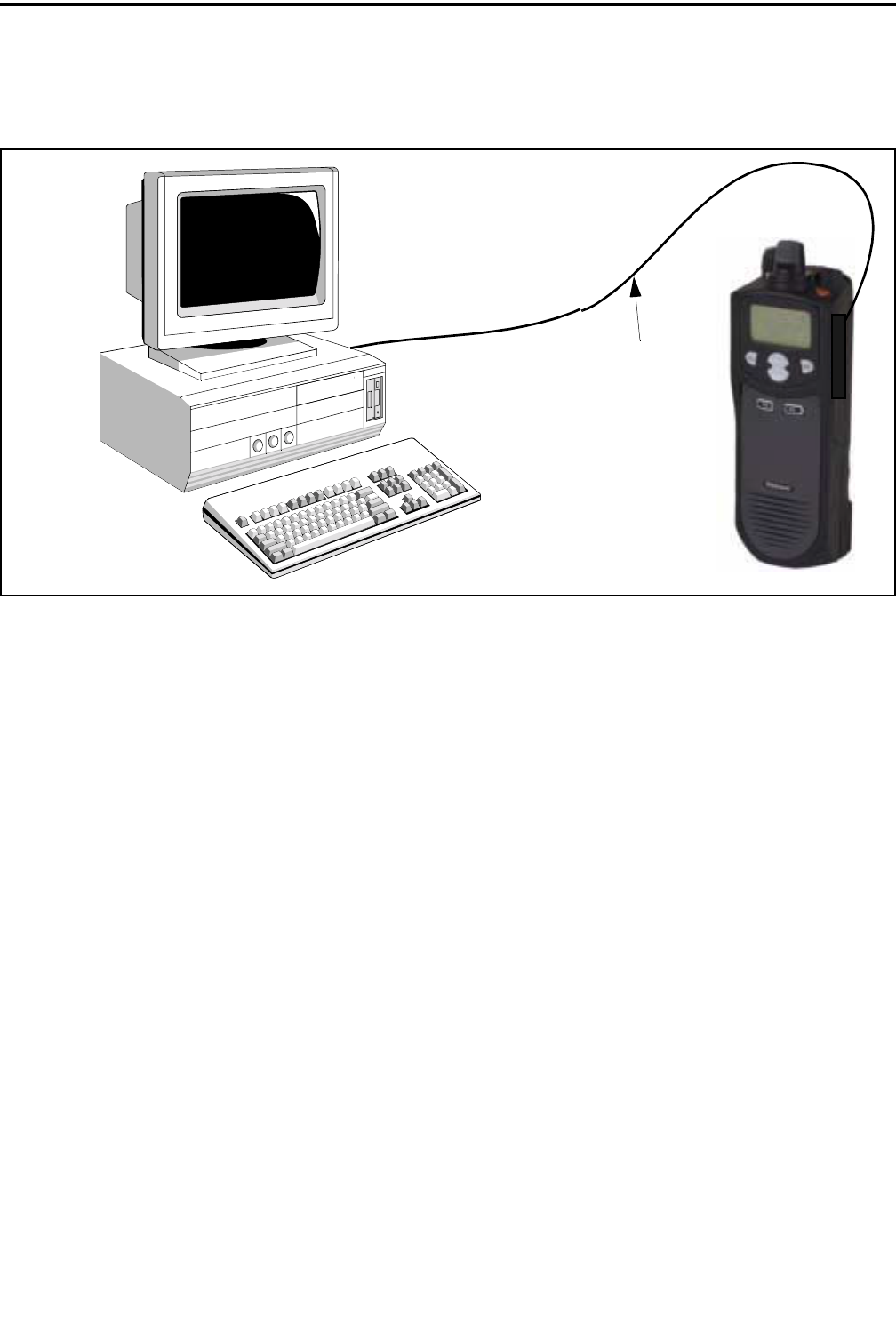
3-1 September 2001
Part No. 001-5100-001
TRANSCEIVER PROGRAMMING
SECTION 3 TRANSCEIVER PROGRAMMING
Figure 3-1 Programming Setup
Part No. 023-5000-011
Programming Cable
3.1 GENERAL
3.1.1 PROGRAMMING SETUP
The following items are required to program the
transceiver. The part numbers of this equipment are
shown in Table 1-1 in Section 1. The programming
set-up is shown above.
•IBM® PC or compatible personal computer
•Programming Cable, Part No. 023-5000-011
•PCTrunk programming software, Part No.
023-9998-453
NOTE: The -011 cable, -453 software, and a PCTrunk
manual are included in the 5005 Series Programming
Kit, Part No. 250-5000-003.
3.1.2 COMPUTER DESCRIPTION
The computer used to run this program should
meet the following minimum requirements:
•Windows® 3.1 or 95/98 (Windows NT/2000 is
supported only by PCTrunk Version 5.10.0 or later).
•Intel® 486 processor or equivalent
•At least 4 MB of RAM
•A hard disk drive with at least 5 MB of free space
•A CD-ROM drive
•An available serial port
NOTE: With the descriptions which follow, it is
assumed that you have a basic understanding of how
to use your Windows-based operating system. If you
are not familiar with some of the Windows functions
described, refer to your Help Screens and manuals
included with your Windows software.
3.1.3 PCTRUNK SOFTWARE INSTALLATION
The PCTrunk software is supplied on a CD-
ROM. Install this software as follows:
1. Make sure that there are no other Windows applica-
tions open during this installation procedure. Also,
make sure that the computer meets the minimum
requirements listed in the preceding section.
2. Insert the PCTrunk CD-ROM in the CD drive of
your computer.

TRANSCEIVER PROGRAMMING
3-2 September 2001
Part No. 001-5100-001
3. Windows 3.1 - In the Program Manager, double
click the SETUP.EXE file on the CD-ROM or click
this file name and select File > Run.
Windows 95/98/NT/2000 - Select Start > Settings
> Control Panel and double click “Add/Remove
Programs”. Then click Install and Next. When
SETUP.EXE is automatically located on the CD-
ROM, click Next, select the location for the start-
up icon, and enter the name you want to call the
program.
4. Follow the instructions displayed by the setup
program. The default directory for the program is
\Program Files\PCTrunk. If you wish to use some
other directory, click Browse and select it or type the
name.
3.1.4 CONNECTING COMPUTER TO
TRANSCEIVER
Connect Programming Cable, Part No. 023-5000-
011, from the computer serial port to the accessory
jack on the side of the transceiver. Since, this cable
contains interface circuitry, an RPI is not required, and
it has a female DB9 connector for connecting to the
computer. This cable is available as part of the
programming kit or separately (see Section 3.1.1).
3.1.5 STARTING AND EXITING
To Start PCTrunk From Windows 3.1
In the Program Manager, open the PCTrunk
group window. Then double-click the PCTrunk icon.
To Start PCTrunk From Windows 95/98/NT
Click the Start button, select the PCTrunk group,
and then click PCTrunk 5.xx.x.
To Exit PCTrunk:
Select File > Exit or press ALT + F4.
3.1.6 PROGRAMMING FILE TYPES
Programming data is stored in two disk files that
can be saved, read, copied, and deleted (see Section
3.3.1). The two types that are stored for each program-
ming session have the same name but different exten-
sions as follows:
Programming File (.DAT) - Contains all program-
ming information except what is in the following .460
file.
Scrambling File (.460) - Contains all information
relating to the Transcrypt 460 scrambler. This file is
saved only if this scrambling is used.
3.1.7 HELP FILES
To display help information on the current screen,
click Help in the menu bar or press F1.
3.1.8 SCREEN GROUPS
General
The following screen groups are displayed:
Radio-Wide - These screens program parameters that
are the same for all systems and channels. Separate
screens are displayed for General, Conventional,
SMARTNET/SmartZone, and Portable Options
parameters. Refer to Section 3.4 for more information
on these screens.
System - These screens program the parameters that
are unique to the displayed Conventional,
SMARTNET, or SmartZone system. The system to be
edited is selected as described in Section 3.1.11.
Channel - This screen programs unique channel
parameters and assigns channels to each zone. The
specific parameters indicated in this screen are deter-
mined by the type of system selected in the “Type”
box (Conventional Analog, Conventional Project 25,
SMARTNET).
3.1.9 DISPLAYING SCREENS
The latest release of PCTrunk uses a different
method of displaying screens. Proceed as follows to
select which screens are displayed with the early and
revised versions:
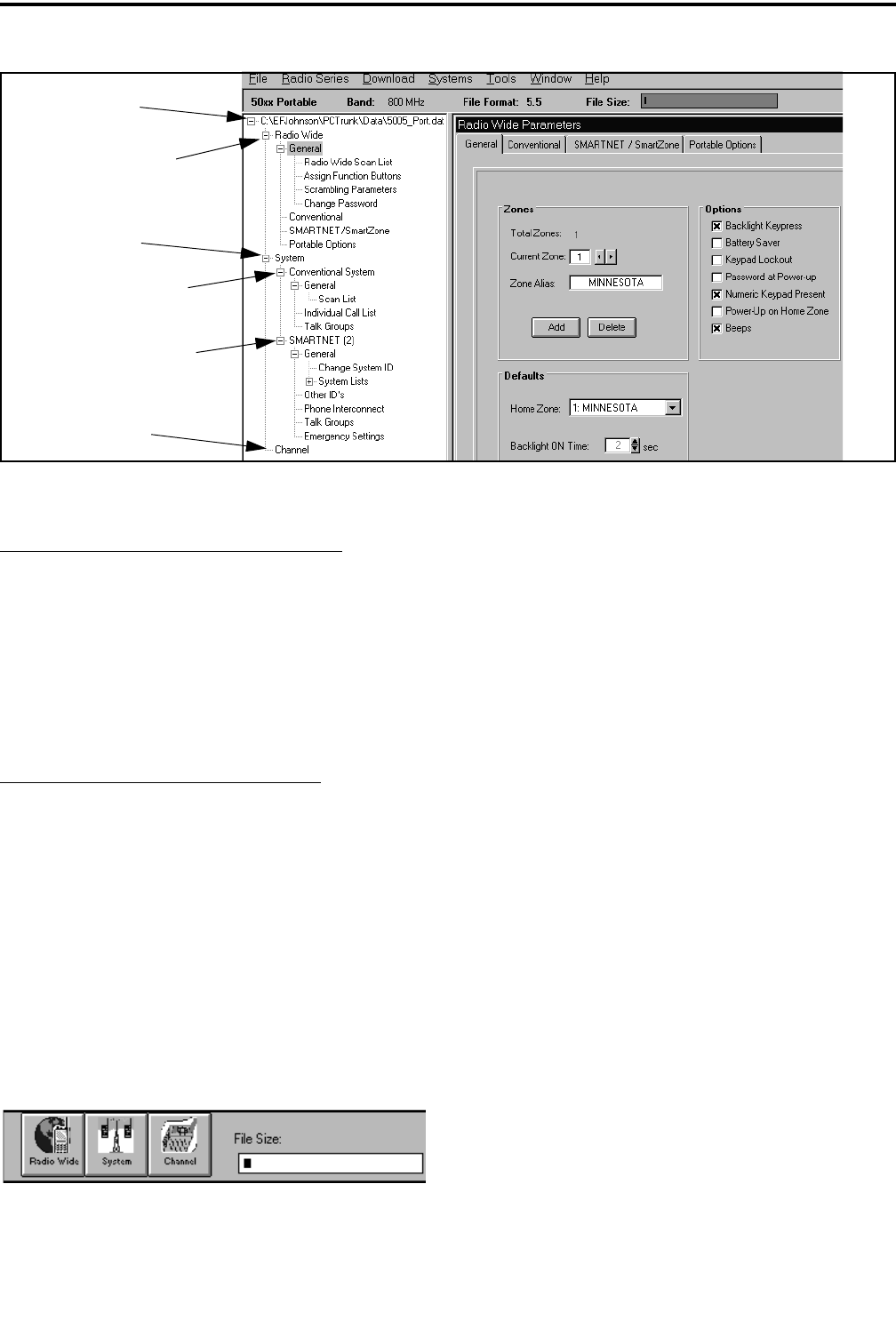
TRANSCEIVER PROGRAMMING
3-3 September 2001
Part No. 001-5100-001
Figure 3-2 Main Screen (Later PCTrunk Versions)
Data File Name
Radio Wide Screens
System Screens
Channel Screen
Conv System
SMARTNET System
Revised PC Trunk (Version 5.10.0 or Later)
Revised versions of PCTrunk use a pane on the
left side of the screen (see Figure 3-2) to display the
screen structure similar to the directory structure of a
hard drive. Click the “+” to expand the branch and “–”
to collapse it. Then to display a screen, simply click its
name. The current screen may have to be closed in
order to select another one.
Early PCTrunk (Versions Prior to 5.10.0)
With early versions of PCTrunk, the screens are
displayed in cascade style or they can be minimized
like any Windows screen. To cascade the active
screens, select Window > Cascade from the menu bar.
To pop a screen to the front, click the applicable
button shown below. For example, if the Channel
screen is displayed and you want to quickly pop the
Radio-Wide screen to the front, click the Radio-Wide
button. These buttons can be displayed or hidden by
clicking Window > Toolbar. A window can also be
displayed by selecting it in the Window Menu.
Screen Pop-Up Buttons
(Early PC Trunk Versions)
3.1.10 FILE SIZE INDICATOR
The maximum number of channels that can be
programmed may be limited by the available memory
space in the radio (see Section 1.2.5). A running indi-
cation of the amount of memory used by the current
data if it was downloaded to the radio is displayed by a
bar graph as shown in Figure 3-2 and the preceding
illustration. When the bar reaches the right end, avail-
able memory is full and some channels may need to be
deleted to program more information.
3.1.11 CREATING AND DISPLAYING SYSTEMS
To create a new SMARTNET or SmartZone
system, select Systems > Add Systems and then the
desired system type from the menu bar (see Section
3.3.7). This menu is also used to delete a system.
NOTE: Only one conventional system can be set up,
and it is automatically created when a new file is
created as described in Section 3.2.1. Therefore, there
is no option to add a conventional system.
Only one system can be displayed at a time, so
select the system to be edited as described in the
preceding section. Systems are indicated by number
and type. Channels or talk groups for all programmed
systems are set up in the Channels screen. Therefore,
any system can be selected when programming
channel information.

TRANSCEIVER PROGRAMMING
3-4 September 2001
Part No. 001-5100-001
3.2 PROGRAMMING PROCEDURE
The following is a general procedure you can use
to program a transceiver.
3.2.1 PRELIMINARY
1. Select a programming file as follows:
Create a New File - To start with a new file
containing default parameters, select File > New
and then the frequency band of the radio (VHF/
UHF/ 800 MHz).
Open An Existing File - To open an existing file
stored on disk, select File > Open and then the file
to be opened.
Upload a File From a Radio - To transfer a file
from a radio to the computer to edit or use as a
basis to program another radio, connect the radio to
the computer as described in Section 3.1.4. Then
turn the radio on and select Upload from the menu
bar. Only the .DAT programming file is uploaded.
The .460 scrambling file cannot be uploaded for
security reasons.
2. Before or after creating the programming file, be
sure the correct type (portable or mobile) is selected
by the Radio Type menu (see Section 3.3.2).
3. A conventional system is automatically set up when
a new programming file is created. If SMARTNET
or SmartZone systems are also to be programmed,
set them up as described in Section 3.1.11.
3.2.2 PROGRAMMING RADIO WIDE
PARAMETERS
1. To display a Radio Wide screen, click the screen
name under Radio Wide in the left pane or click the
Radio Wide button or select Window > Radio Wide
(see Section 3.1.9).
2. Program the applicable information in these screens
as described in Section 3.4.
3.2.3 PROGRAMMING CONVENTIONAL
SYSTEMS
NOTE: If no conventional channels are to be
programmed, skip this section.
1. Make sure the conventional system is displayed by
clicking it in the left pane or selecting Window >
Conventional in the menu bar.
2. If required, display the Conventional System screen
by clicking the System button or selecting Window
> Conv System (see Section 3.1.9).
3. Program the conventional systems and channels as
described in Section 3.5.
3.2.4 PROGRAMMING SMARTNET AND
SMARTZONE SYSTEMS
NOTE: If no SMARTNET or SmartZone systems are to
be programmed, skip this section.
1. Make sure the desired SMARTNET or SmartZone
system is displayed by clicking it in the left pane or
selecting Window > SMARTNET or SmartZone in
the menu bar.
2. If required, display the screens for that system by
clicking the System button or selecting Window >
Desired System (see Section 3.1.9).
3. Program the SMARTNET/SmartZone system and
talk groups as described in Section 3.6.
4. To program additional SMARTNET/SmartZone
systems, add a new system as described in Section
3.1.11 and repeat Section 3.6.
3.2.5 PROGRAMMING RADIO
(DOWNLOADING FILE)
When all the required programming information
has been entered in the various programming screens,
the information can be programmed (downloaded) into
the radio. When downloading a file, be sure that all
connections between the computer and radio are
secure, the radio is turned on, and the proper serial
port is selected (see Section 3.3.1). Then proceed as
follows:
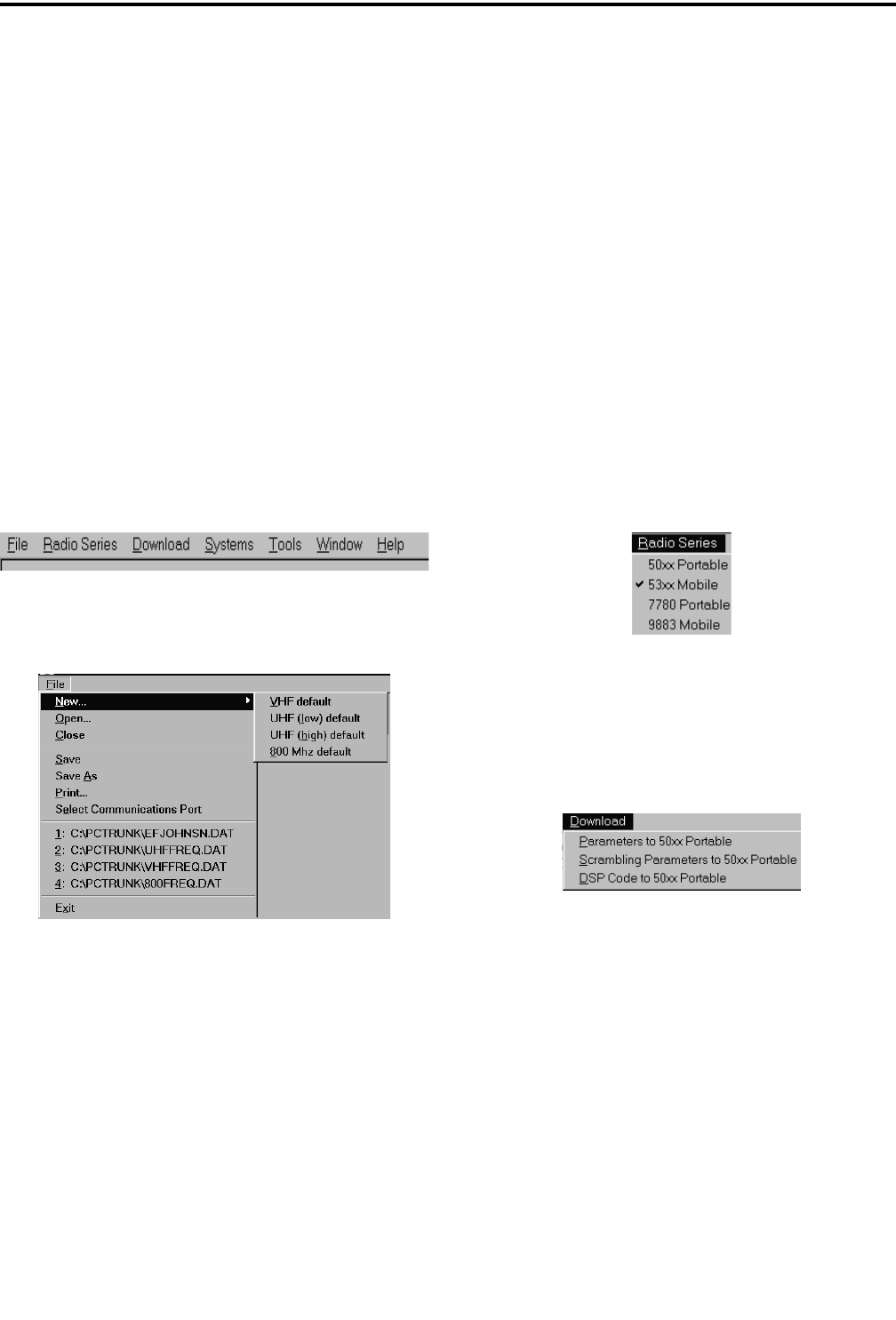
TRANSCEIVER PROGRAMMING
3-5 September 2001
Part No. 001-5100-001
1. Select Download from the menu bar and then the
file type to be transferred (programming or
scrambling).
•If the power-up password is enabled, the program-
ming password must be entered to download or
upload a file (see Section 3.7).
•If a file is already loaded, the current file is trans-
ferred to the radio.
•If no file is currently loaded, a dialog box appears
to select the desired file.
2. Repeat for the other file type (if required).
NOTE: The information which follows (Sections 3.3-
3.6) provides detailed descriptions of the parameters
that are displayed in the various PCTrunk screens.
3.3 MENU COMMANDS
Menu Bar
3.3.1 FILE MENU
New - Creates a programming file with default
parameters for the selected frequency range.
Open - Opens a programming file that was previously
saved to disk. If a modified file is currently open, you
are asked if that file should be saved before the new
file is opened.
Close - Closes the current file. If the file has been
modified and the changes have not been saved, you are
asked if the changes should be saved before closing.
Save - Saves the current file to disk using the current
file name.
Save As - Same as “Save” except you are prompted to
enter a new file name if desired.
Print - Prints the information in the current file.
Select Communications Port - Displays the Commu-
nications Port dialog box which is used to select the
serial port that is used to connect the transceiver to the
computer (see Section 3.1.4).
Exit - Closes the PCTrunk program. If the current file
has been modified and the changes have not been
saved, you are asked if the changes should be saved
before closing.
3.3.2 RADIO SERIES MENU
The Radio Series menu shown above selects the
radio being programmed. Select “50xx Portable”.
3.3.3 DOWNLOAD MENU
NOTE: If the power-up password is enabled as
described in Section 3.4.2, the programming pass-
word must be entered to download a file. Refer to
Section 3.7 for more information on passwords.
Parameters to 50xx Series Portable - Transfers the
current programming file to the radio connected to the
computer.
Scrambling Parameters to 50xx Series Portable -
Transfers the selected scrambling parameters file to
the radio connected to the computer.
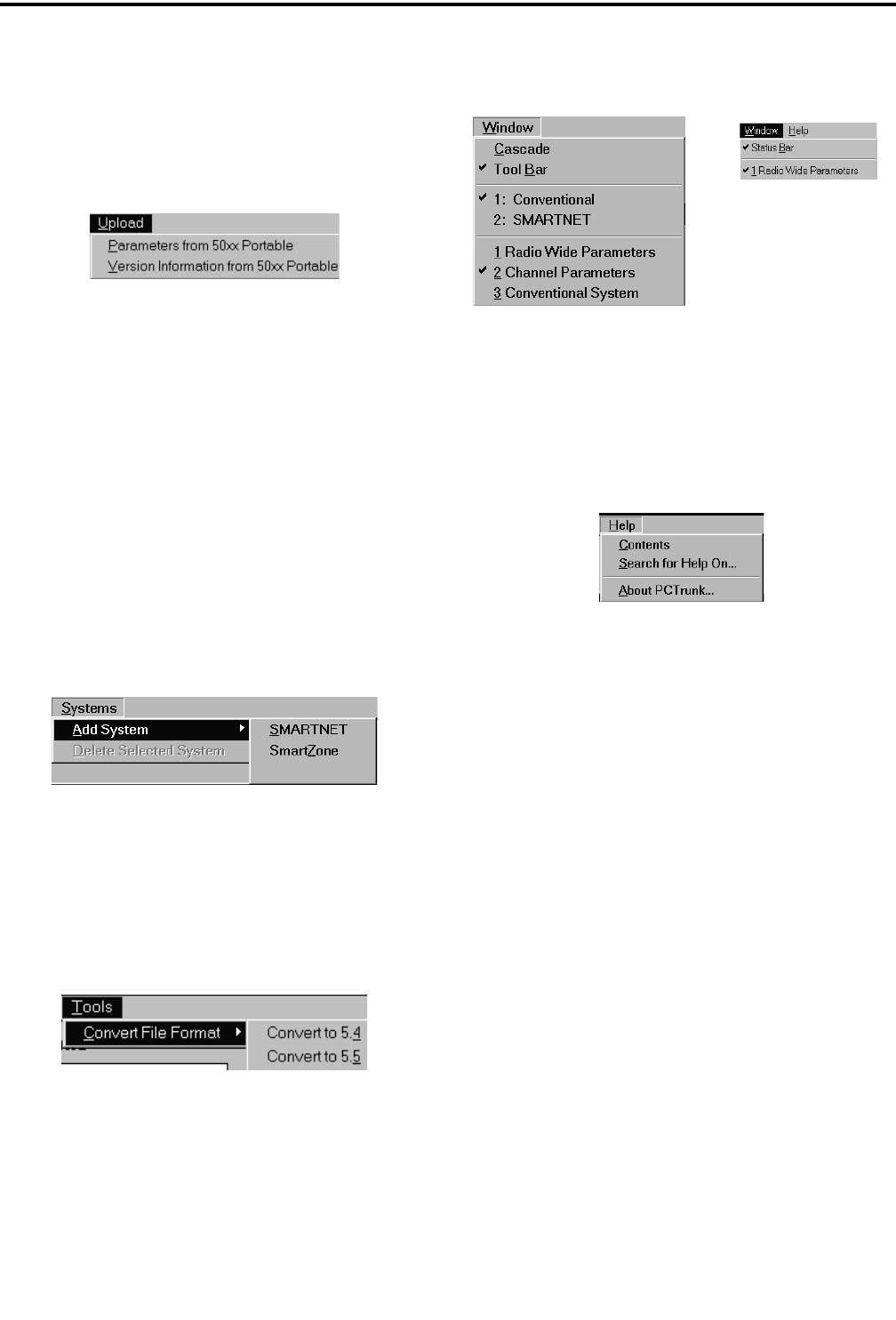
TRANSCEIVER PROGRAMMING
3-6 September 2001
Part No. 001-5100-001
DSP Code to 50xx Series Portable - Used along with
the proper data file to update the radio operating
software.
3.3.4 UPLOAD MENU
The Upload Menu is displayed only in the
opening screen before a programming file is created.
The following options are displayed:
Parameters from 50xx Portable - Transfers the
programming data from a radio to the PCTrunk
program. This data can then be viewed, edited, or
saved to a disk file as desired. Scrambling parameters
cannot be transferred out of a radio for security
purposes.
Version Information from 50xx Portable - Displays
the software version number and serial number of the
connected radio.
3.3.5 SYSTEMS MENU
The Systems Menu is used to create new
SMARTNET and SmartZone systems. It is also used
to delete current systems. Conventional systems
cannot be added because only one can be used and it is
automatically created (see Section 3.1.11).
3.3.6 TOOLS MENU
The Tools menu is used to convert files in Format
5.4 to Format 5.5 when applicable. For example, if a
file is in Format 5.4 and new radios are purchased
which use Format 5.5, it can be converted to the new
format using this function.
3.3.7 WINDOW MENU
With early versions of PCTrunk, the Window
Menu can be used to select the system to be edited and
also to pop one of the screens to the front. With later
versions, it is used only to turn the status bar on and
off (see Section 3.1.9).
3.3.8 HELP MENU
Contents - Displays the help system table of contents.
Search For Help On - Displays the search dialog box
that allows searching for a help topic by keyword.
About PCTrunk - Displays the software version
number of PCTrunk and the address of the E.F.
Johnson Company.
3.4 RADIO-WIDE PARAMETER SCREENS
3.4.1 INTRODUCTION
The radio-wide screens program the parameters
that are the same for all systems, channels, and zones.
Separate screens are used for General, Conventional,
SMARTNET/SmartZone, and Portable Options
parameters. Refer to the information which follows.
3.4.2 RADIO-WIDE GENERAL SCREEN
Band
Displays the operating band selected by the File >
New menu (see Section 3.3.1). The selected operating
band must match that of the radio being programmed.
Early Versions
Later Versions
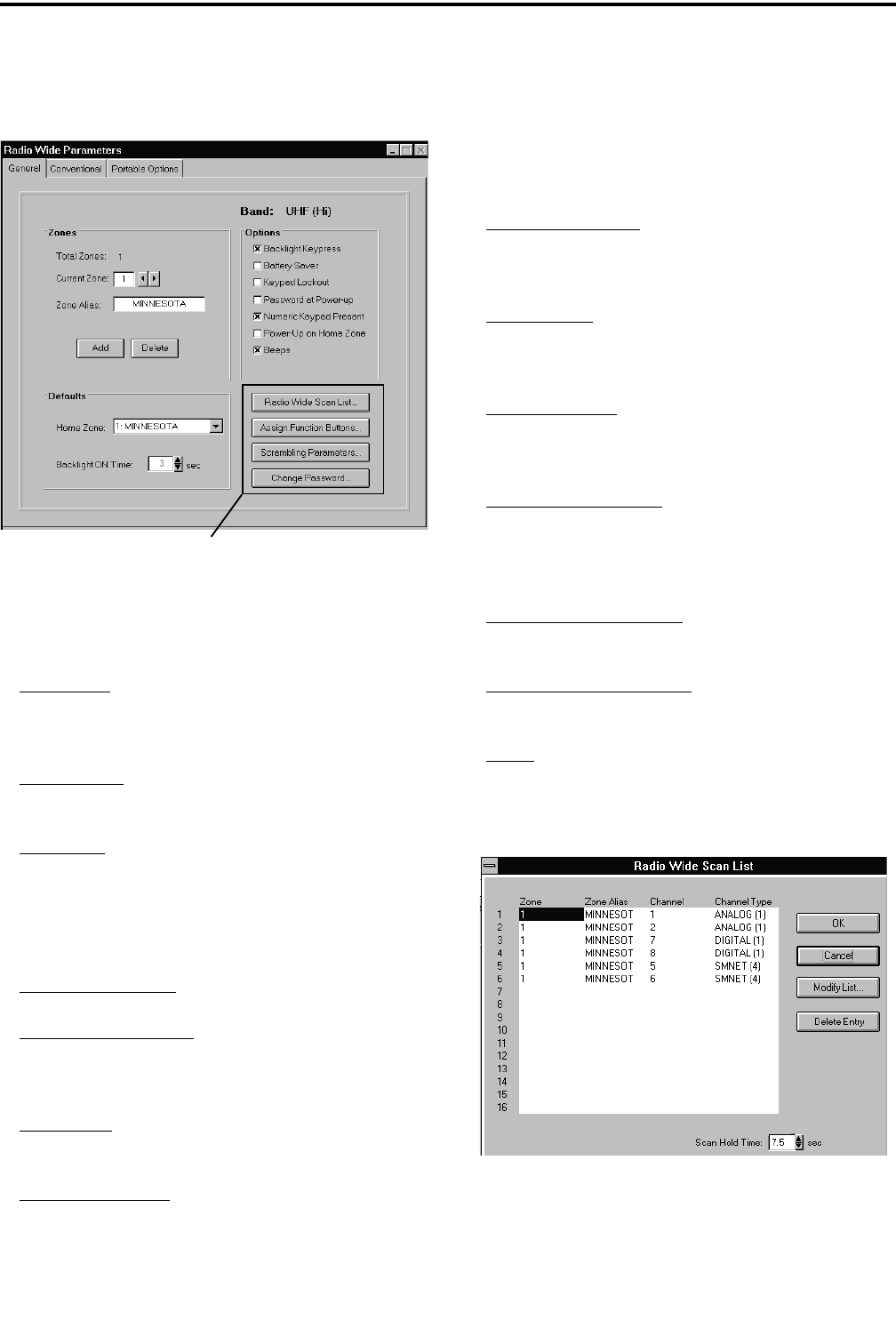
TRANSCEIVER PROGRAMMING
3-7 September 2001
Part No. 001-5100-001
This parameter is displayed in the status bar with later
PCTrunk versions (see Figure 3-2).
Radio-Wide General Screen
Zones
Total Zones - The total number of zones currently set
up. The maximum number allowed is 16. Zones are
added by clicking the Add button (see following).
Current Zone - Indicates the currently selected zone.
To select another zone, click the up/down arrows.
Zone Alias - Edits the unique alpha identification for
the displayed zone. Up to 10 characters can be
entered. The zone alias is briefly displayed whenever
a new zone is selected. Refer to Section 1.2.5 for
more information on zones.
Add (Zones) Button - Adds another zone.
Delete (Zones) Button - Deletes the last zone added.
Defaults
Home Zone - Selects the zone that is selected by the
Home Zone option switch if programmed.
Backlight On Time - Programs the length of time in
seconds that the backlight stays on after it is enabled
by pressing a key (see following) or by the Backlight
option switch.
Options
Backlight Keypress - If checked, the backlight turns
on for the Backlight On Time whenever a key is
pressed.
Battery Saver - If checked, the radio goes into a low
current operating mode during periods of low
activity to conserve battery power.
Keypad Lockout - If checked, the keypad is totally
disabled and cannot be re-enabled by the user. All
functions must then be assigned to keys on the side.
Password at Power-Up - If checked, the Password On
Power-Up feature is enabled. Then each time power
is turned on, the power-up password must be entered
to operate the radio (see Section 3.7).
Numeric Keypad Present - This is checked if the
transceiver is a 16-key (DTMF) model.
Power Up On Home Zone - If checked, the home
zone is always selected at power-up.
Beeps - If checked, enables all tones. Otherwise, no
tones sound (see Section 2.4.11).
Radio-Wide Scan List Screen
These screens selected in left pane w/version 5.10.0 or later.
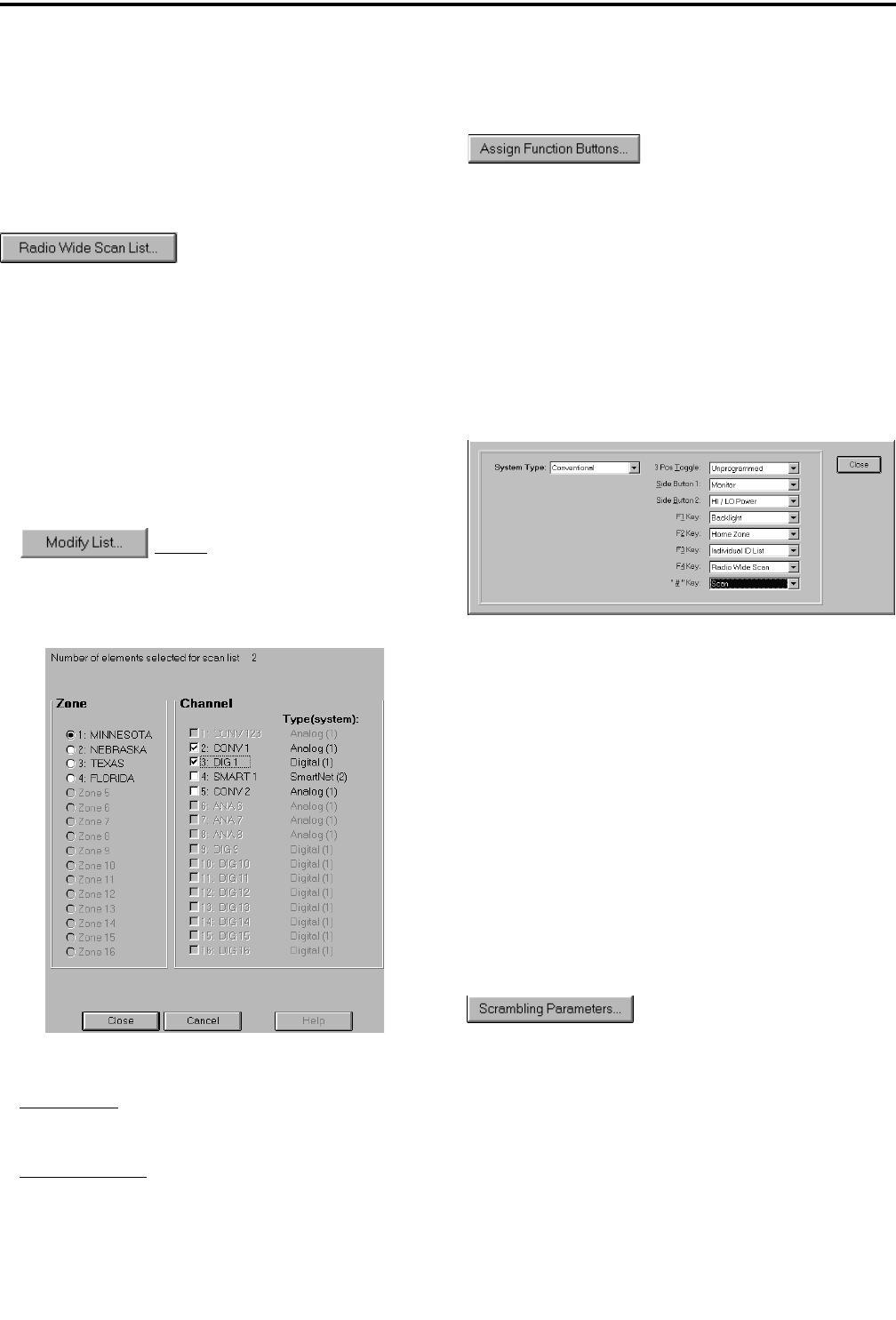
TRANSCEIVER PROGRAMMING
3-8 September 2001
Part No. 001-5100-001
NOTE: With PCTrunk, Version 5.10.0 or later, the
following screens are selected by clicking their name
in the left pane, not by clicking the button in the
General screen.
Radio Wide Scan List Screen
NOTE: The radio-wide scan list cannot be pro-
grammed until all channels to be included have been
set up as described in the Conventional and SMART-
NET/SmartZone sections (3.5 and 3.6, respectively).
Clicking the Radio Wide Scan List name in the
left pane or that button in the General screen displays
the preceding screen which programs the radio-wide
scan list described in Section 2.5.6. The buttons and
other parameters in this screen are as follows:
Button - Displays the following
screen that selects the channels in each Zone and
System that are in this scan list. Select each Zone and
then the channels to be included from that zone.
Delete Entry - Deletes the selected channel from the
scan list.
Scan Hold Time - This programs the delay that
occurs before radio-wide scanning resumes after a
message is no longer being received. Times of 0 - 7.5
seconds can be programmed (see Section 2.5.4).
Assign Function Buttons
Clicking Assign Functions Buttons in left pane or
that button in the General screen displays the option
switches. The option switches can be programmed
with a different set of functions for each operating
mode (conventional, SMARTNET/SmartZone). For
example, selecting a conventional channel enables the
conventional functions and selecting a SMARTNET
channel selects the SMARTNET functions. The func-
tions that can be programmed for each mode are listed
in Section 2.2.
Assign Function Buttons Screen
Program the option switches as follows:
1. In the System Type pull-down menu, select the
mode to be programmed (either conventional or
SMARTNET/SmartZone).
2. To program a switch, click the arrow to display the
pull-down menu and then select the desired function
from that menu.
3. Repeat for all switches and modes to be
programmed and then exit this screen by clicking
the Close button.
Scrambling Parameters Screen
If 460 Scrambling is used (see Section 2.6.17),
click the Scrambling Parameters button in the General
screen to display the following screen. This screen
programs scrambling and other signaling options, and
the Codes screen modifies the list of scrambling codes
which are stored in the radio. The buttons and other
parameters in these screens operate as follows:
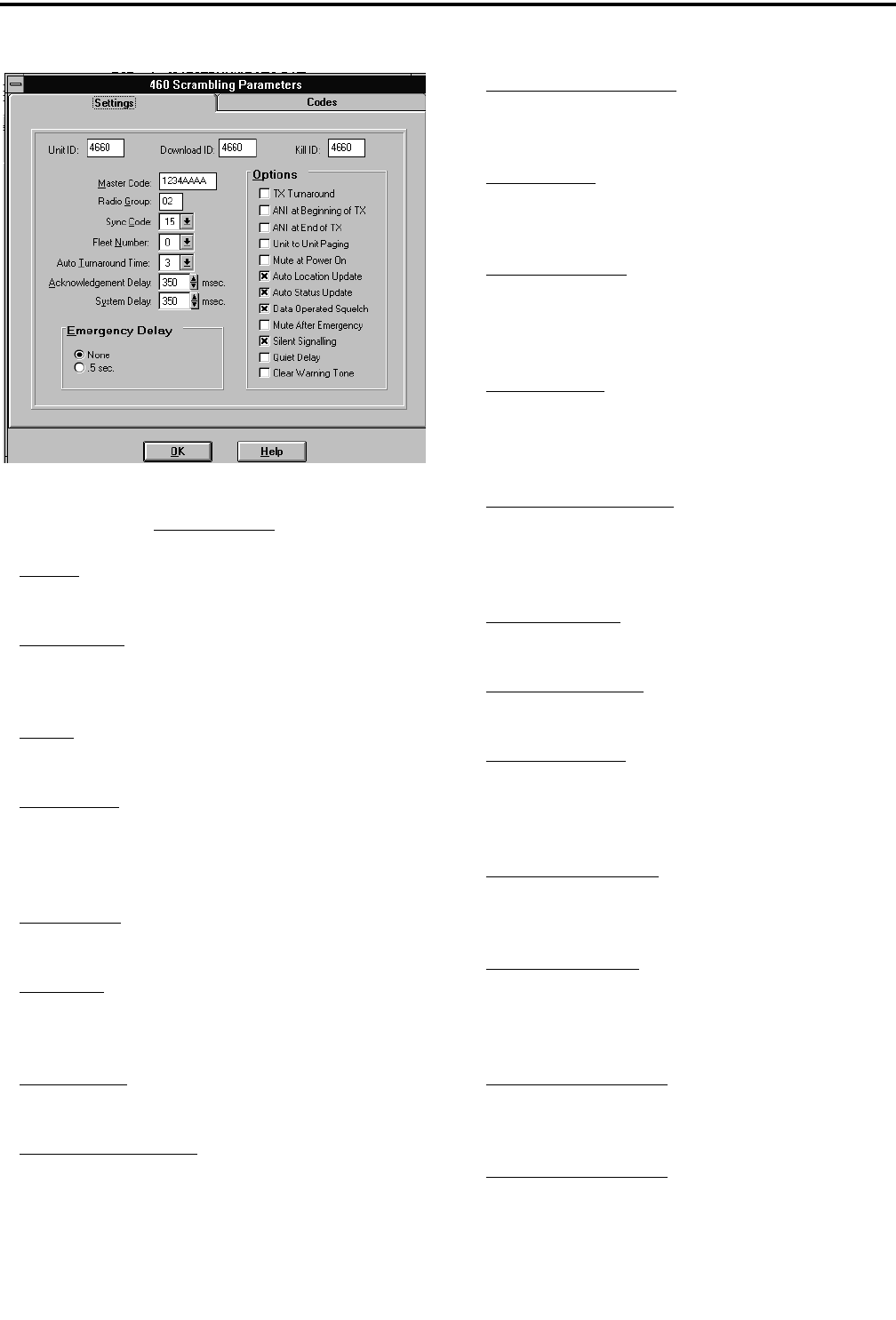
TRANSCEIVER PROGRAMMING
3-9 September 2001
Part No. 001-5100-001
460 Scrambler Settings Screen
Settings Screen
Unit ID - Uniquely identifies the radio for Flashcall
signaling.
Download ID - This ID must be received by the radio
for it to accept a download of its scrambling
parameters.
Kill ID - This ID must be received by the radio for the
kill operation to occur.
Master Code - Displays the master code used by the
scrambler. Two scramblers must be programmed
with the same master code to communicate. The field
is an 8-digit hexadecimal number (0-9, A-F).
Radio Group - Sets the group number of the scram-
bler from 00-99.
Sync Code - Scrambling sync code from 0-15. Two
scramblers must have the same sync code to
communicate.
Fleet Number - Number from 0-15 used when
multiple fleets of scramblers are used.
Auto Turnaround Time - Time from 0-7 seconds after
receiving a coded message that the scrambler ignores
the clear code switch setting and forces the coded
mode.
Acknowledgment Delay - Delay time from 50-1550
ms before the scrambler responds to information
received from a controller.
System Delay - Delay time from 50-1550 ms
between when the PTT switch is pressed and the
scrambler transmits data over the air.
Emergency Delay - The amount of time the scram-
bler waits to send the emergency signal after the
emergency switch is pressed. No delay or a 0.5 sec
delay can be selected.
Tx Turnaround - If selected, inserts a delay between
when scrambled information is received and then
transmitted. This delay allows scramblers in the
system to prepare for the new data.
ANI at Beginning of Tx - If selected, sends a Flash-
call ANI at the beginning of every clear mode
transmission.
ANI at End of Tx - If selected, sends a Flashcall ANI
at the end of every clear mode transmission.
Unit-to-Unit Paging - If selected, enables a single
unit page.
Mute at Power On - If selected, mutes the audio when
powered up until the radio transmits, receives a
Flashcall selective call, or OTAR reprogramming of
scrambling parameters.
Auto Location Update - If selected, causes the scram-
bler to automatically send the user location every
time it changes.
Auto Status Update - If selected, causes the scram-
bler to automatically send the user status each time it
changes.
Data Operated Squelch - If selected, causes the
scrambler to mute audio when incoming Flashcall
data is received.
Mute After Emergency - If selected, causes the
scrambler to mute the audio after sending an
emergency signal until the unit transmits.
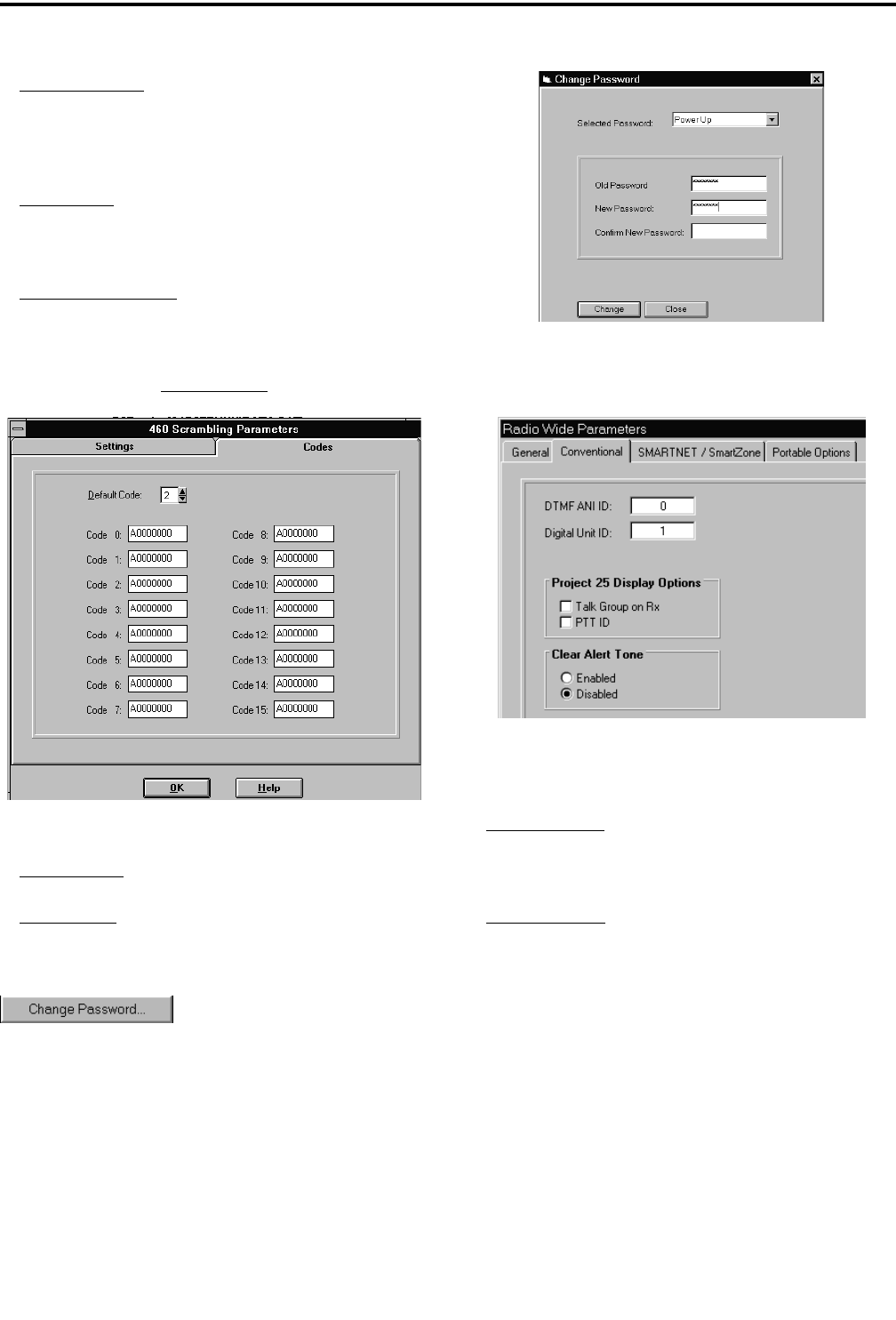
TRANSCEIVER PROGRAMMING
3-10 September 2001
Part No. 001-5100-001
Silent Signaling - If selected, causes the scrambler to
send a tone ahead of data packets that forces the
receiving unit to mute its audio before the data burst
is heard.
Quiet Delay - If selected, adds an extra 100 ms lead-
in delay at the beginning of the silent signaling tone
(if enabled).
Clear Warning Tone - If selected, sends a tone burst
at 5-second intervals during clear mode transmis-
sions. This alerts the listener that the conversation is
not secure.
Codes Screen
460 Scrambler Codes Screen
Default Code - Code space to use in the radio.
Codes 0 - 15 - Edit the box to enter a code. All codes
must begin with A0. The last six digits can be pro-
grammed for any value using hex digits 0-9, A-F.
Change Password Screen
Displays the following screen which is used to
change the Power-Up and Programming passwords.
The default passwords are eight zeros (00000000).
Refer to Section 3.7 for more password information.
The power-up password function is utilized if “Pass-
word at Power Up” is checked on the Radio Wide
General screen (see Section 3.4.2).
Change Password Screen
3.4.3 RADIO-WIDE CONVENTIONAL SCREEN
The radio-wide conventional screen is shown
above, and it programs the following parameters:
DTMF PTT ID - The PTT ID is used on a channel
programmed for pre- or post-transmit ANI. This ID
consists of eight digits from 0-9.
Digital Unit ID - When operating on a Project 25
(digital) channel, this number identifies the radio.
Each radio must have a different ID, and it must be
between 1 and 16777216.
Project 25 Display Options
These functions select what is displayed when
individual calls are received. If neither function is
selected, the selected talk group alias or channel
number is displayed (see “Individual Calls” in Section
2.6.16). With group calls, the talk group or channel
number is always displayed.
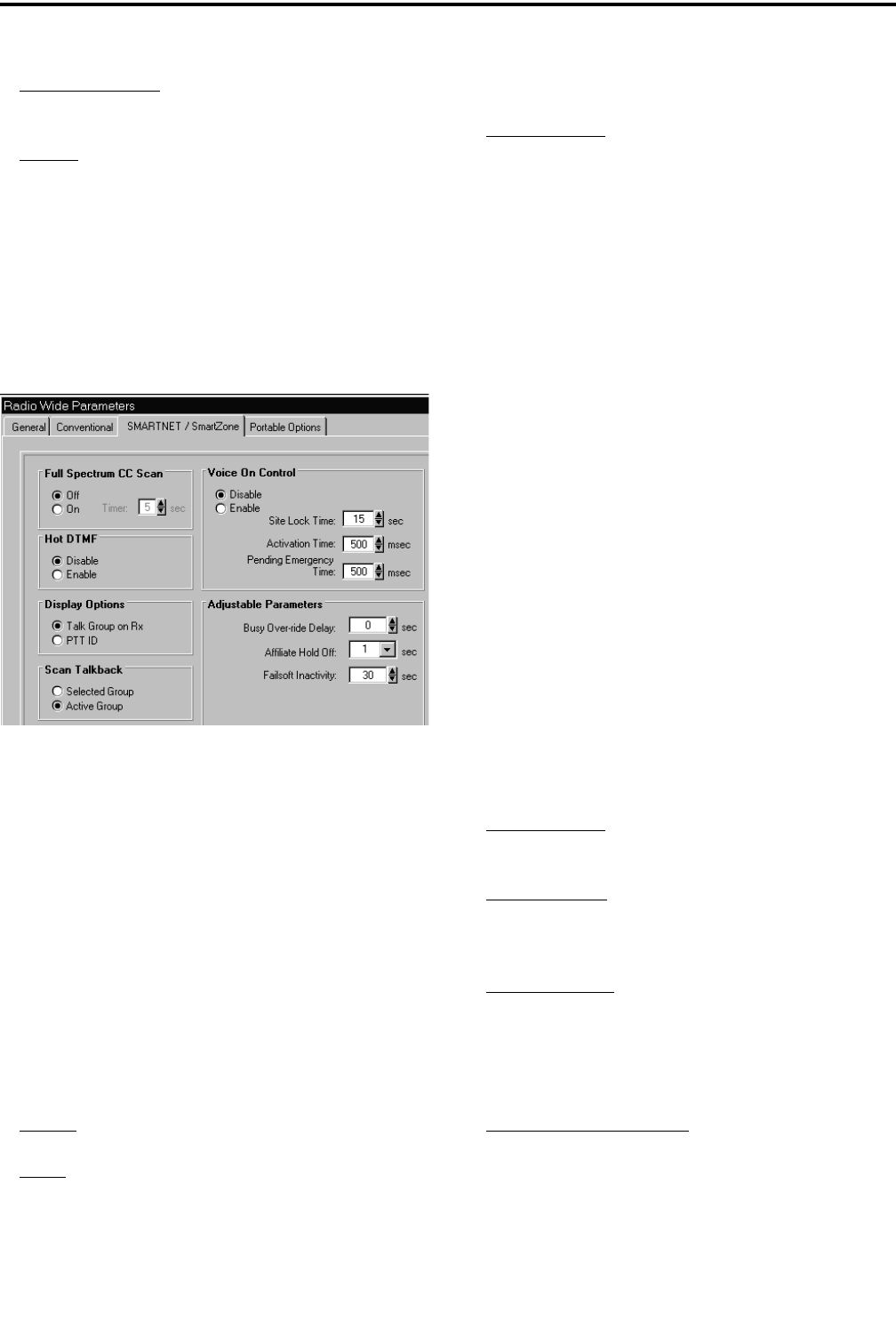
TRANSCEIVER PROGRAMMING
3-11 September 2001
Part No. 001-5100-001
Talk Group on Rx - The alias of the talk group on
which the call is being received is displayed.
PTT ID - The ID of the mobile placing the call is
displayed.
Clear Alert Tone - If it is enabled, a short beep
sounds to indicate the clear (non encrypted) mode is
selected. This tone sounds with SecureNet and digital
OFB encryption only (not with 460 encryption).
3.4.4 RADIO-WIDE SMARTNET/SMARTZONE
SCREEN
The radio-wide SMARTNET/SmartZone screen
is shown above, and it is used to program these
parameters:
Full Spectrum CC Scan
In a SmartZone system, if all potential control
channel frequencies have been searched, the radio
enters a channel-by-channel search across the full
spectrum that the radio covers. The timer sets the time
it performs this scan before it checks the expected
frequencies again. After it checks these frequencies, it
returns to full spectrum scanning. This cycle repeats
until a control channel is found.
On-Off - Enables or disables full spectrum scan.
Timer - Sets the time that full spectrum scanning
occurs as just described.
Hot DTMF
Enable/Disable - When enabled, allows the user to
send DTMF tones while transmitting. When
disabled, pressing numeric keys (0-9, *, #) while
transmitting has no affect. This option is not func-
tional with SecureNet operation.
Display Options
See description in Section 3.4.3.
Scan Talkback
When a message is received when scanning, this
determines if the response always occurs on the
selected talk group or the talk group of the call (when
not the same).
Voice On Control
With SmartZone operation, some remote sites are
designated Voice On Control sites. In these sites, if all
available traffic channels are occupied, control chan-
nels become traffic channels when additional traffic
channels are requested. The Voice On Control parame-
ters determine how the radio reacts to various situa-
tions that may occur. For example, when a conversa-
tion is complete, the radio may look for a control
channel that has become a traffic channel.
Enable/Disable - Determines if the voice on control
parameters are active.
Site Lock Time - This is the amount of time a radio
remains on the Voice On Control site before looking
for another site.
Activation Time - This is the amount of time the
radio waits when the control channel comes back
from Voice On Control before it transmits any pend-
ing ISWs. This prevents all radios on a Voice On
Control site from submitting ISWs at the same time.
Pending Emergency Time - This is the amount of
time the radio waits to submit an Emergency ISW
after the control channel returns from the Voice On
Control mode.
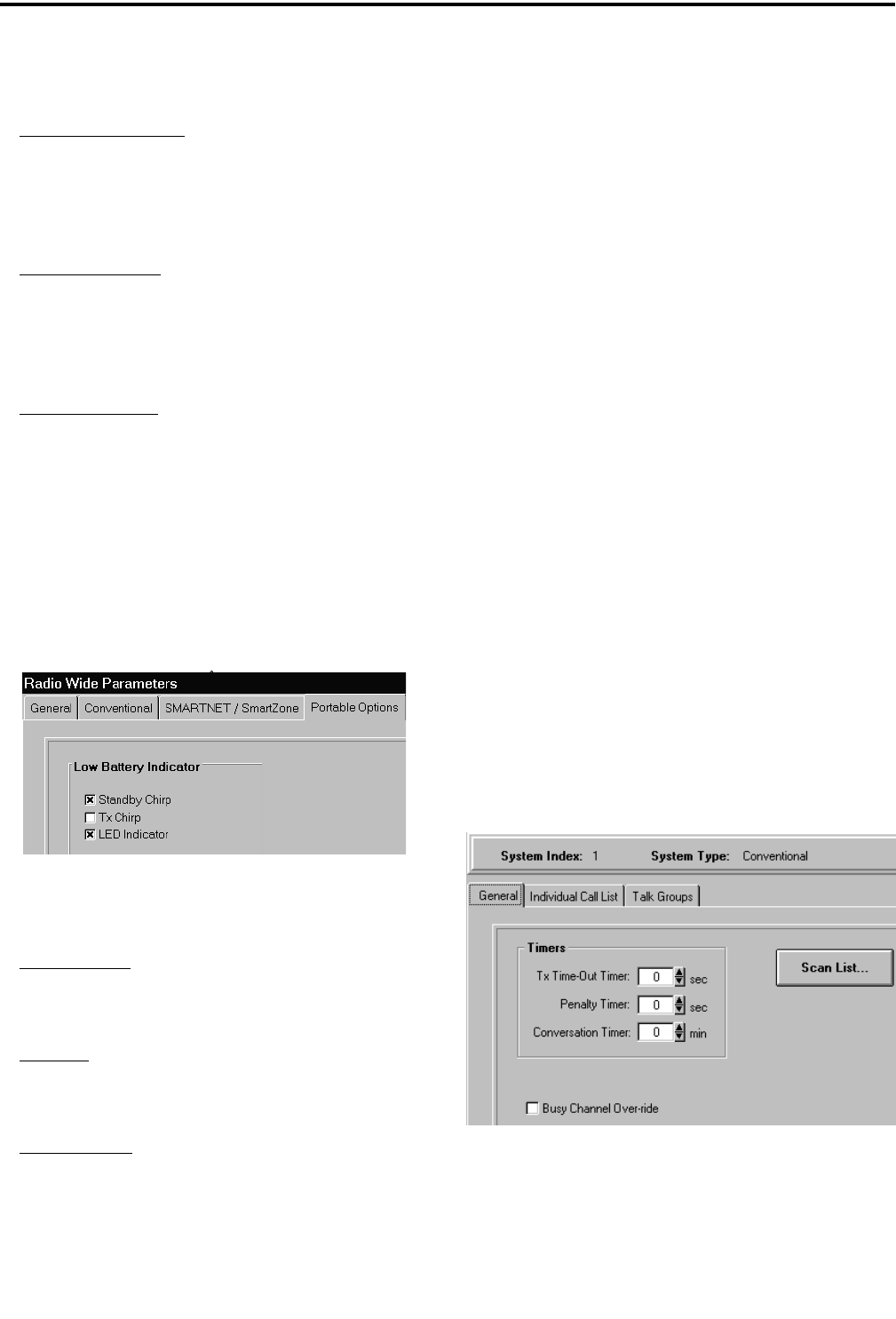
TRANSCEIVER PROGRAMMING
3-12 September 2001
Part No. 001-5100-001
Adjustable Parameters
Busy Override Delay - With SmartZone operation,
this is the amount of time a user must press the PTT
switch to override a SmartZone busy that occurs
because some member of the talk group is present at
a site where there are no traffic channels available.
Affiliate Hold Off - With SmartZone operation, this
is the delay time that occurs after acquiring the con-
trol channel before it sends an affiliation ISW. This
prevents all radios on the system from sending affil-
iation ISWs at the same time.
Failsoft Inactivity - Programs failsoft operation (see
Section 2.7.11). If the radio remains inactive (no
receive or transmit activity on channel) while operat-
ing in the failsoft mode for the programmed time, the
radio momentarily leaves the failsoft mode and
attempts to find a control channel. If “0” is pro-
grammed, the radio does not leave the failsoft mode.
3.4.5 RADIO-WIDE PORTABLE OPTIONS
SCREEN
The radio-wide Portable Options screen is shown
above, and it is used to program these parameters:
Standby Chirp - If this box is checked, a chirp sounds
periodically in the standby mode while a low battery
condition is being detected.
Tx Chirp - If this box is checked, a chirp sounds each
time the PTT switch is pressed while a low battery
condition is being detected.
LED Indicator - If this box is checked, the LED on
the top panel indicates a low battery condition (green
in standby, flashing red in transmit).
3.5 PROGRAMMING CONVENTIONAL
SYSTEMS AND CHANNELS
3.5.1 INTRODUCTION
The following information describes how to
program conventional channels (both analog and
Project 25). Only one conventional system can be
programmed, and it is automatically set up when the
programming file is selected as described in Section
3.1.6. Up to 256 conventional channels can be
programmed (if no SMARTNET/SmartZone systems
are programmed). Refer to Section 1.2.5 for more
information on systems and channels.
The following is the recommended procedure for
programming conventional channels:
1. Program the radio-wide information as described in
Section 3.4.
2. If other types of systems have been programmed,
make sure the conventional system is selected in the
left pane or by selecting Window > Conventional in
the menu bar (see Section 3.1.11).
3. Program the conventional system information and
then the channel information as follows (both
analog and Project 25 digital channels).
3.5.2 CONVENTIONAL SYSTEM GENERAL
SCREEN
The conventional system General screen is shown
above, and it programs the following parameters:
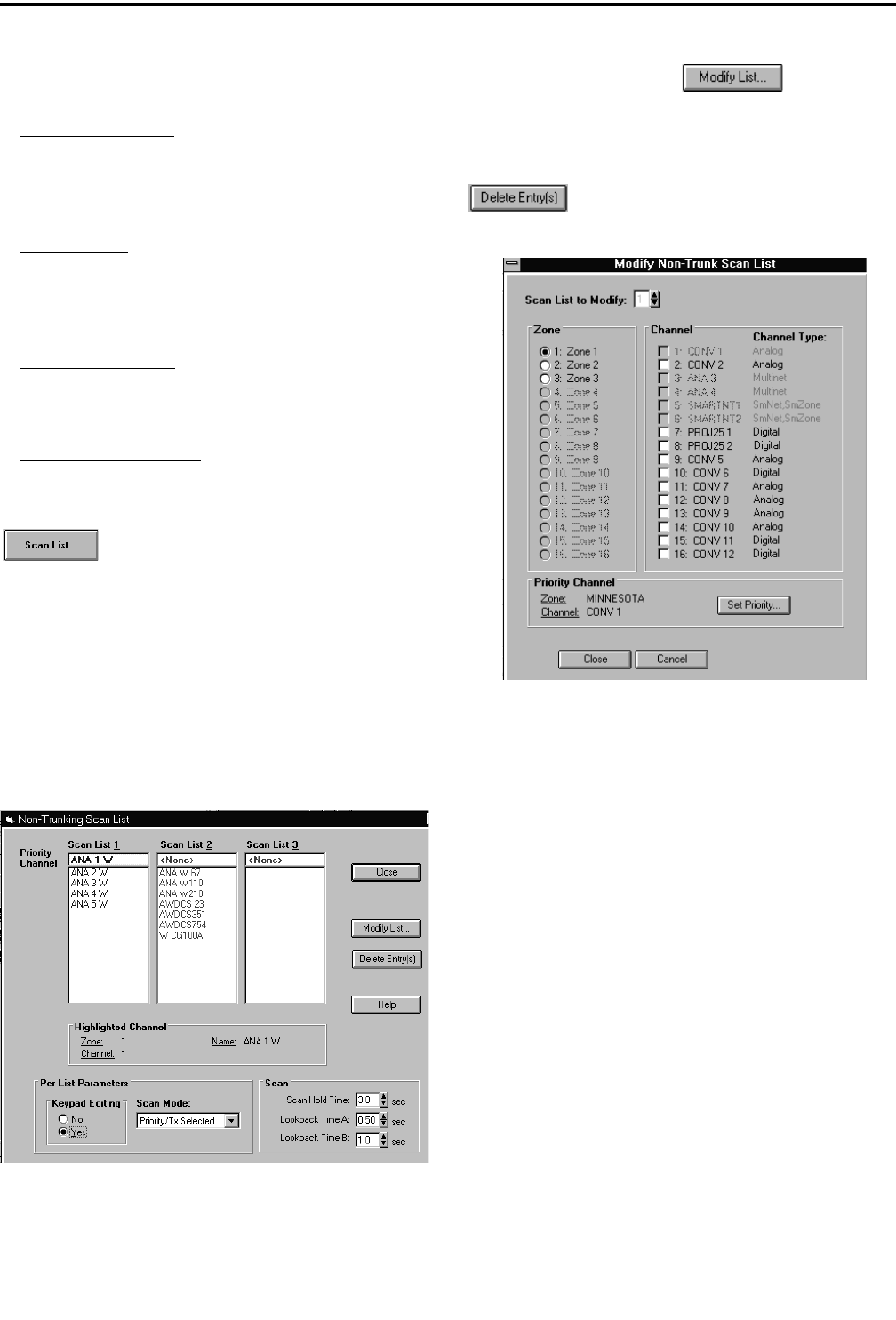
TRANSCEIVER PROGRAMMING
3-13 September 2001
Part No. 001-5100-001
Timers
Tx Time-Out Timer - This timer limits the length of
transmissions (Section 2.4.10). Times up to 3 min-
utes, 45 seconds in 15-second steps can be
programmed.
Penalty Timer - This timer disables transmitting after
the time-out timer expires (Section 2.6.7). Times up
to 3 minutes, 45 seconds in 15-second steps can be
programmed.
Conversation Timer - This timer limits the total
length of a conversation (Section 2.6.8). Times up to
7.5 minutes in 0.5-minute steps can be programmed.
Busy Channel Override - Selects if the Busy Channel
Lockout feature can be overridden by quickly releas-
ing and then pressing the PTT switch (Section 2.6.5).
Scan List Screen
Clicking the Scan List in the left pane or that
button in the General screen displays the following
screen which is used to program the conventional scan
lists described in Section 2.5.5.
NOTE: The conventional scan lists cannot be
programmed until all the conventional channels are
programmed. Therefore, first program the channels as
described in Sections 3.5.5, 3.5.6, and 3.5.7.
Conventional System Scan List Screen
To modify a list, click and the
screen which follows is displayed. Select the desired
scan list in the box on the top and then select the zone
and the channels from that zone to be included. Repeat
for each zone. Do this for each list programmed. The
button deletes the selected channel(s)
from the scan list.
Conventional System Modify Scan List Screen
The following parameters are programmed in the
preceding Conventional System Scan List Screen.
Keypad Editing
This selects if the user is allowed to edit the scan
list. This requires the Scan Edit option switch as
described in Section 2.6.12. User editing can be
enabled or disabled on each scan list.
Scan Mode
This function selects the channel on which trans-
missions occur when the PTT switch is pressed while
scanning. In addition, it selects if priority sampling is
used and also the type of priority channel (see
“Priority Channel” description which follows). The
following modes are available:
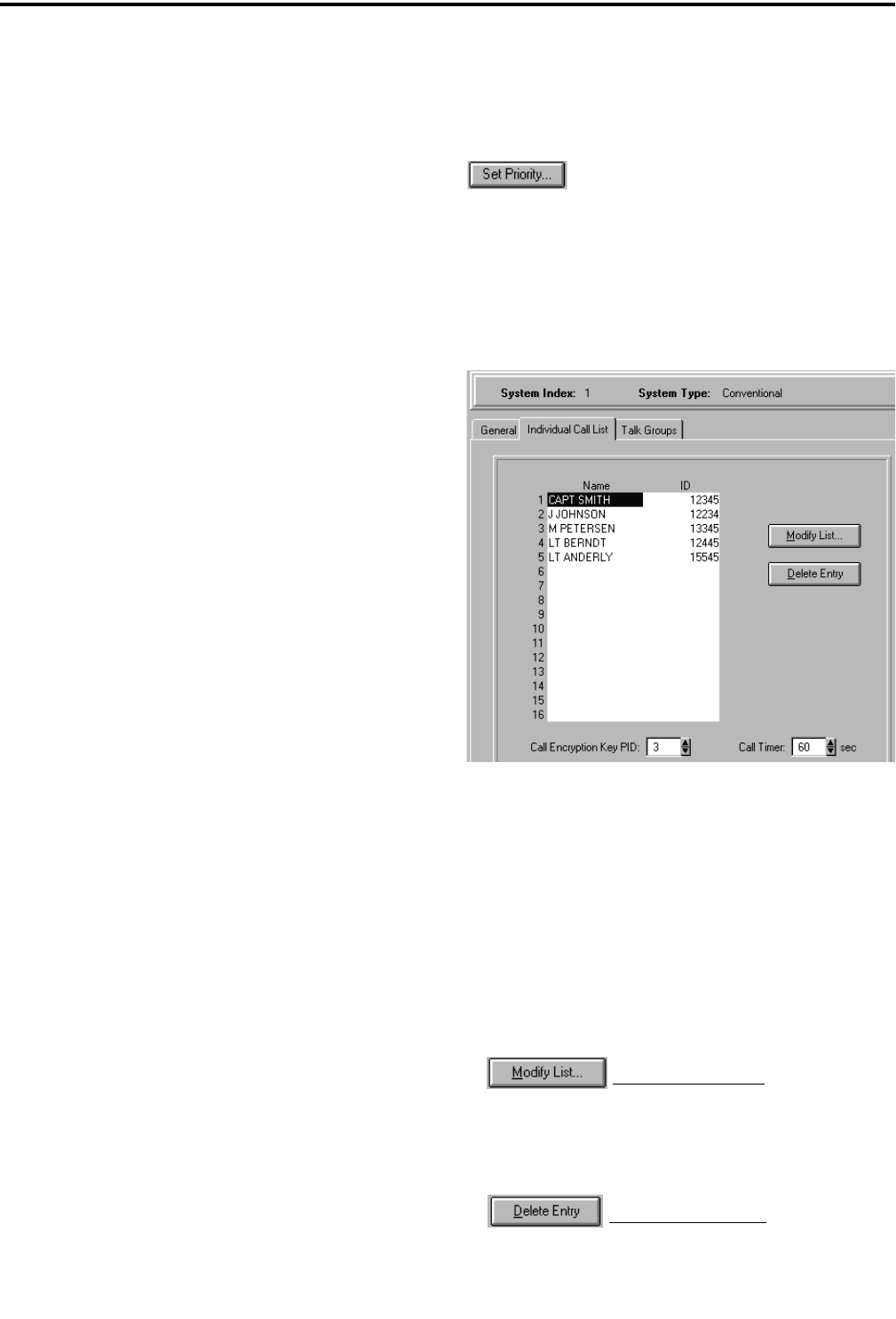
TRANSCEIVER PROGRAMMING
3-14 September 2001
Part No. 001-5100-001
No Priority - Priority sampling does not occur (all
channels are scanned in sequence). The radio trans-
mits on the selected channel.
Priority/Tx Priority - Priority sampling occurs
and the priority channel is the one programmed in
the selected scan list. The radio transmits on the
priority channel.
Priority/Tx Selected - Priority sampling occurs
and the priority channel is the one programmed in
the selected scan list. The radio transmits on the
selected channel.
Priority on Sel Chan - The priority channel is
always the selected channel (even if the scan list is
programmed with a priority channel). The radio
transmits on the selected channel.
Talkba c k - No priority sampling occurs. The radio
transmits on the channel of a call while scanning is
halted. Then when scanning resumes, it transmits
on the selected channel.
Scan Timers
Scan Hold Time - Sets the delay that occurs before
scanning resumes after a signal is no longer
received (see Section 2.5.4).
Lookback Time A - This time determines how
often the priority channel is checked for activity.
Times of 0.25-4.00 seconds in 0.25-second steps
can be programmed.
Lookback Time B - This time determines how
often the priority channel is checked once an incor-
rect Call Guard (CTCSS/DCS) or NAC code is
detected. Since it takes much longer to detect an
incorrect Call Guard signal than a carrier, this time
should be relatively long to prevent the interrup-
tions from making a message difficult to under-
stand. Times of 0.5-8.0 seconds can be
programmed in 0.5-second steps.
Priority Channel Selection
The Scan Mode parameter just described selects
if priority channel sampling is enabled on the selected
scan list. It also selects the type or priority channel
(either fixed or selected) if applicable.
If the “Priority/Tx Priority” or “Priority/Tx
Selected” mode is programmed, fixed priority
sampling is selected. The priority channel must then
be chosen for the scan list. To do this, click the
button in the Modify Scan List screen
and then select the desired zone/channel. If any of the
other modes is selected, the priority channel does not
need to be chosen. Refer to Section 2.6.13 for more
information on priority sampling.
3.5.3 CONVENTIONAL SYSTEM INDIVIDUAL
CALL LIST SCREEN
NOTE: This screen can be left unprogrammed if no
conventional Project 25 digital channels are
programmed or individual calling is not used.
Individual calls can be placed on Project 25
digital channels as described in Section 2.6.16. The
IDs that can be called are programmed in the Indi-
vidual Call List programmed by the Individual Call
List screen. This screen is shown above, and the
parameters it programs are as follows:
Modify List Button - Clicking this
button displays the screen that programs the alias
(tag) and individual ID for each call. An alias can
have up to 10 characters, and the individual IDs can
be 1-16777216.
Delete Entry Button - Clicking this
button deletes the selected entry.
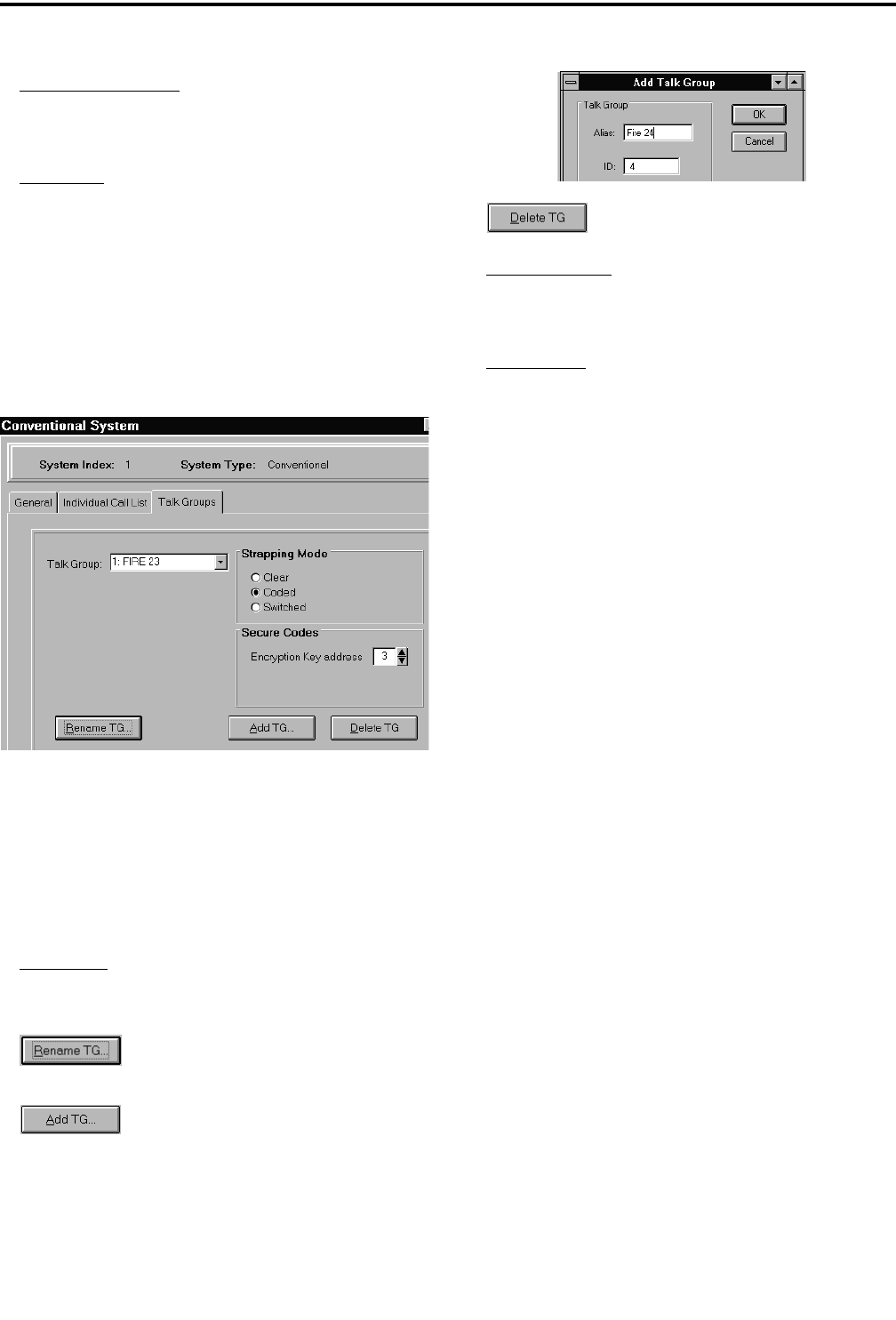
TRANSCEIVER PROGRAMMING
3-15 September 2001
Part No. 001-5100-001
Call Encryption PID - Indicates which DES-OFB
encryption key should be used for secure private
calls.
Call Timer - Sets the maximum time that the radio
remains in the individual call mode after an individ-
ual call is received. A response must be made before
this timer expires.
3.5.4 CONVENTIONAL SYSTEM TALK GROUP
SCREEN
The conventional system Talk Group screen
shown above is used to set up Project 25 talk groups (it
is not used with analog channels). These talk groups
are assigned to channels on the Channel screen (see
Section 3.5.7). The parameters in this screen are as
follows:
Talk Group - Displays the talk group to be edited. To
select another, click the scroll button to the right of
the box.
- Displays the screen used to change
the alias of the selected talk group.
- Displays the following screen that is
used to add a new Project 25 talk group. The alias
and ID of the talk group are specified in this screen.
Group IDs from 1-65535 can be programmed with
Project 25 operation.
- Deletes the selected talk group.
Strapping Mode - Selects if secure communication is
not used, always selected, or is switch selectable on
that talk group (see Section 2.6.17).
Secure Code - If secure communication is enabled,
selects the secure code key used on that talk group.
3.5.5 SETTING UP CONVENTIONAL
CHANNELS
The conventional Channel screen shown in
Figure 3-3 is displayed when a conventional analog
channel is selected, and the screen shown in Figure 3-4
is displayed when a conventional Project 25 (digital)
channel is selected. These screens program unique
channel parameters and also assign channels to the
selectable zones displayed by the transceiver.
The general procedure for setting up a conven-
tional channel is as follows. Refer to the descriptions
which follow this procedure for information on the
parameters in the channel screens.
1. Make sure that the desired zone is selected in the
Zone box.
2. Select the channel number in the Channels Index
box which is to be programmed with the channel
(this will be the number displayed when the channel
is selected).
3. To assign a conventional channel, select “Conven-
tional” as the channel type. Then select “Analog” if
it is an analog channel or “Project 25” if it is a
Project 25 channel.
4. Click the Modify button to display the screen which
enables that channel and programs the alias (tag)
and transmit and receive frequencies. Then program
the other parameters in the main part of the screen.
Refer to the next section or Section 3.5.7 for more
information, whichever is applicable.
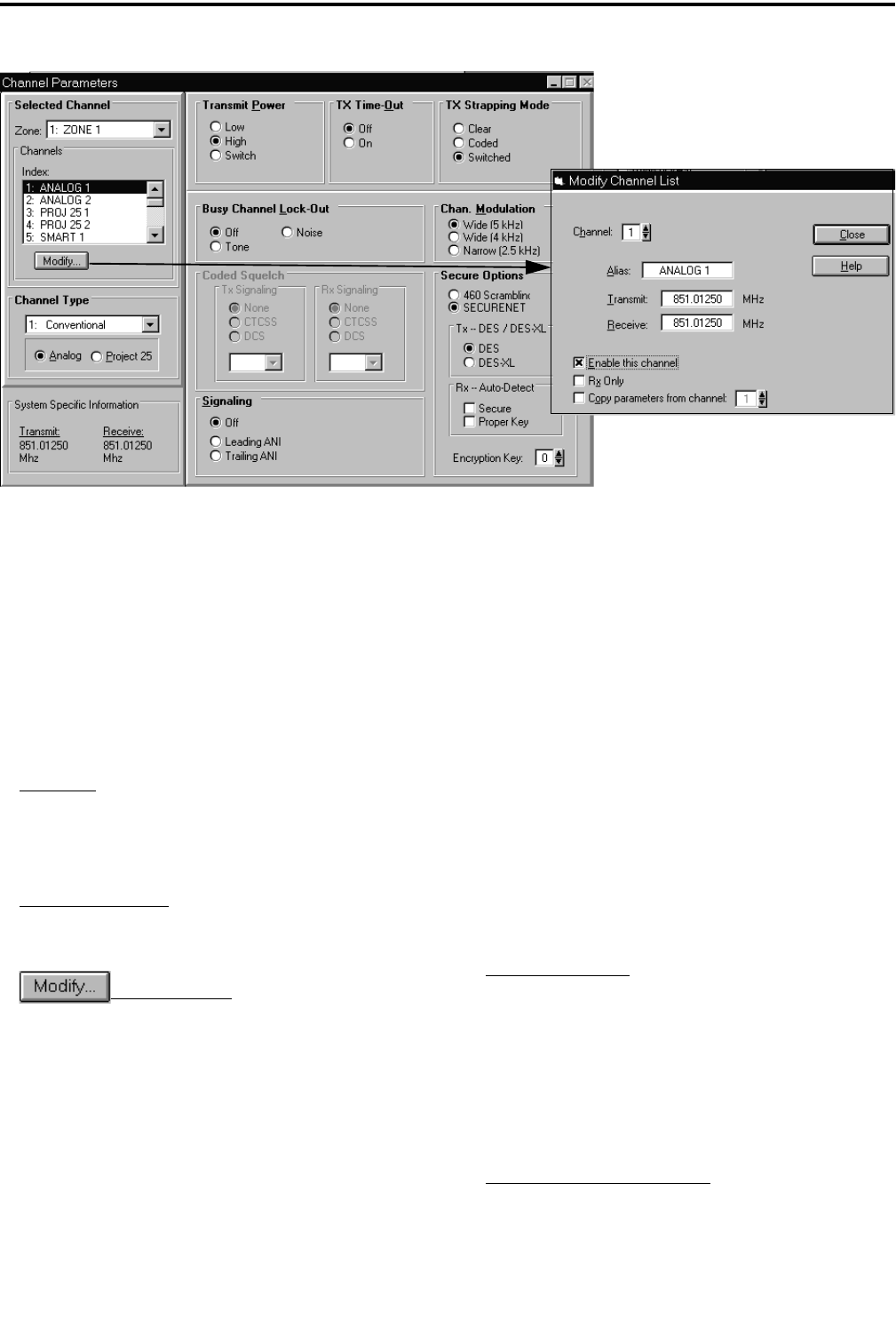
TRANSCEIVER PROGRAMMING
3-16 September 2001
Part No. 001-5100-001
Figure 3-3 Conventional Analog Channel Screen
3.5.6 CONVENTIONAL ANALOG CHANNEL
SCREEN PARAMETERS
The following parameters are programmed in the
Conventional Analog Channel screen shown in
Figure 3-3.
Selected Channel
Zone Box - Clicking the arrow to the right of this box
displays the available zones. Click on a zone to select
it. Zones and zone aliases are set up on the Radio-
Wide General screen described in Section 3.4.2.
Channel Index Box - Displays the available channels
in the selected zone. The channel type is selected by
the Channel Type box below it.
Modify Button - Displays the Modify
Channel List screen also shown in Figure 3-3. This
screen enables the channel (makes it selectable) and
programs the following channel parameters:
Channel - Selects the channel to be edited.
Alias - Programs the identification that is displayed
when the channel is selected. Up to 10
characters can be programmed.
Transmit - Programs the transmit frequency of the
channel.
Receive - Programs the receive frequency of the
channel.
Enable This Channel - The box must be checked for
the channel to be selectable.
Rx Only - The box is checked if the channel is to be
receive only (transmitter disabled).
Copy Parameters From Channel - If another channel
is selected, the parameters from that chan-
nel are copied to the new channel.
NOTE: Channel numbers not assigned must be
programmed for conventional operation and then not
enabled in the above screen because SMARTNET/
SmartZone channels cannot be disabled.
Channel Type
Channel Type Box - Selects the specific system from
which the channel is selected. All programmed sys-
tems are displayed by number and type (conven-
tional, SMARTNET, SmartZone). In addition, with
conventional channels, either analog or Project 25 is
selected. When a different channel type is selected,
the screen for that type of channel is automatically
displayed.
System Specific Information - With conventional
systems, indicates the frequency of the selected
channel without having to select the Modify box.

TRANSCEIVER PROGRAMMING
3-17 September 2001
Part No. 001-5100-001
Transmit Power
This fixes the transmit power on the channel for
the high or low level or allows it to be switch select-
able (the Hi/Lo Power option switch is then required).
Selectable power is not available with 800 MHz
models (Section 2.6.10).
Tx Time-Out
This enables or disables the time-out timer on the
channel. The time-out timer time is programmed in the
conventional system General screen (Section 2.4.10).
Busy Channel Lockout
Off = disabled, Noise = transmit disallowed if
carrier is detected, Tone = transmit allowed only if
correct Call Guard code is detected (Section 2.6.5).
Coded Squelch
This sets the transmit and receive Call Guard
(CTCSS/DCS) coding, if any, used on the channel. If
“None” is selected, no code is transmitted and carrier-
controlled squelch is used when receiving (Section
2.6.6). The standard Call Guard tones and codes are
listed in Table 3-1 located on page 3-29.
Signaling
Off - No ANI signaling is used.
Leading ANI - A DTMF-coded ID is sent at the
beginning of each transmission. This ID is set in the
radio-wide conventional screen (Section 2.6.15).
Trailing ANI - A DTMF-coded ID is sent at the end
of each transmission.
Channel Modulation
This selects if the channel modulation is wide-
band (5 kHz), narrowband (2.5 kHz), or NPSPAC (4
kHz). NPSPAC (public safety) modulation applies to
800 MHz models only.
Tx Strapping Mode
NOTE: See Section 2.6.17 for more information.
Clear - All transmissions on the channel occur in the
clear (unscrambled) mode.
Coded - All transmissions on the channel occur in the
secure (scrambled) mode selected by Coded Options.
Switched - The clear or secure status of the channel
is selected by the Clear/Secure option switch.
Secure Options
These options select either the Transcrypt 460 or
SecureNet™ DES type of secure communication
when either the coded or switched strapping mode is
selected.
Tx DES/DES-XL - Selects either DES or DES-XL
encryption protocol.
Rx AutoDetect - With the SecureNet protocol, select-
ing “Secure” enables automatic detection of
encrypted receive signals. This may increase the
response time of the radio to an incoming signal.
Selecting “Proper Key” causes the radio to search the
available SecureNet keys until it finds a match for the
current transmission.
Encryption Key - Selects the encryption key from
0-15 that is used on the channel. This refers to the
hardware location in the radio of the real key.
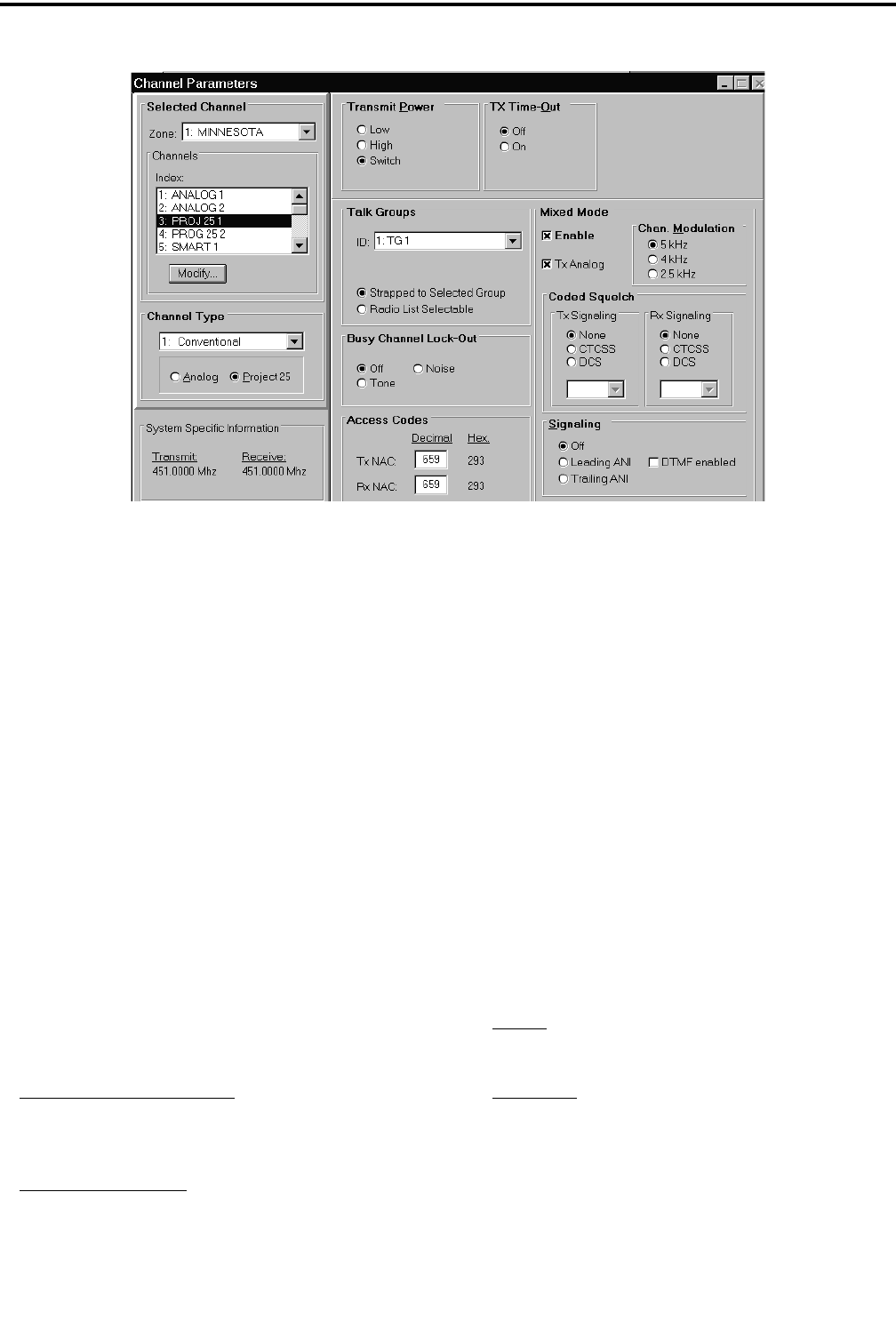
TRANSCEIVER PROGRAMMING
3-18 September 2001
Part No. 001-5100-001
Figure 3-4 Conventional Project 25 Digital Channel Screen
3.5.7 CONVENTIONAL PROJECT 25 (DIGITAL)
CHANNEL SCREEN PARAMETERS
The following parameters are programmed in the
conventional Project 25 digital channel screen shown
in Figure 3-4. Refer to Section 2.6.16 for more infor-
mation on Project 25 operation.
The Selected Channel, Channel Type, Transmit
Power, and Transmit Time-Out Parameters are
programmed the same as with analog channels
described in preceding section.
Talk Groups
This selects the Project 25 talk group that is
assigned to the channel. The talk group programs the
talk group ID, strapping mode, and encryption key
address. Talk groups for Project 25 channels are
programmed in the Conventional System Talk Group
screen described in Section 3.5.4.
Strapped to Selected Group - If this parameter is
selected, the talk group on that channel is always the
selected talk group and cannot be changed.
Radio List Selectable - If this parameter is selected,
the talk group may be changed by the radio operator
using the (Digital) Talk Group Select option switch.
Busy Channel Lockout
Off = disabled, Noise = transmit disallowed if
carrier is detected, NAC = transmit allowed only if
correct NAC is detected (Section 2.6.5).
Access Codes
Programs the transmit and receive NAC
(Network Access Code). These codes can be 0-4095.
Refer to Section 2.6.16 for more information.
Mixed Mode
A mixed mode that allows both analog and
Project 25 operation to be programmed on a channel
can be enabled on the Project 25 channel screen (see
Figure 3-4). This mode is programmed as follows:
Enable - Checking this box selects mixed
analog/Project 25 operation on the channel.
Tx Analog - Checking this box selects Transmit =
analog/Receive = Project 25. If it is not checked,
the opposite is selected.
When the mixed mode is selected, the channel
modulation, coded squelch, and ANI signaling param-
eters for the analog channel must then be programmed.
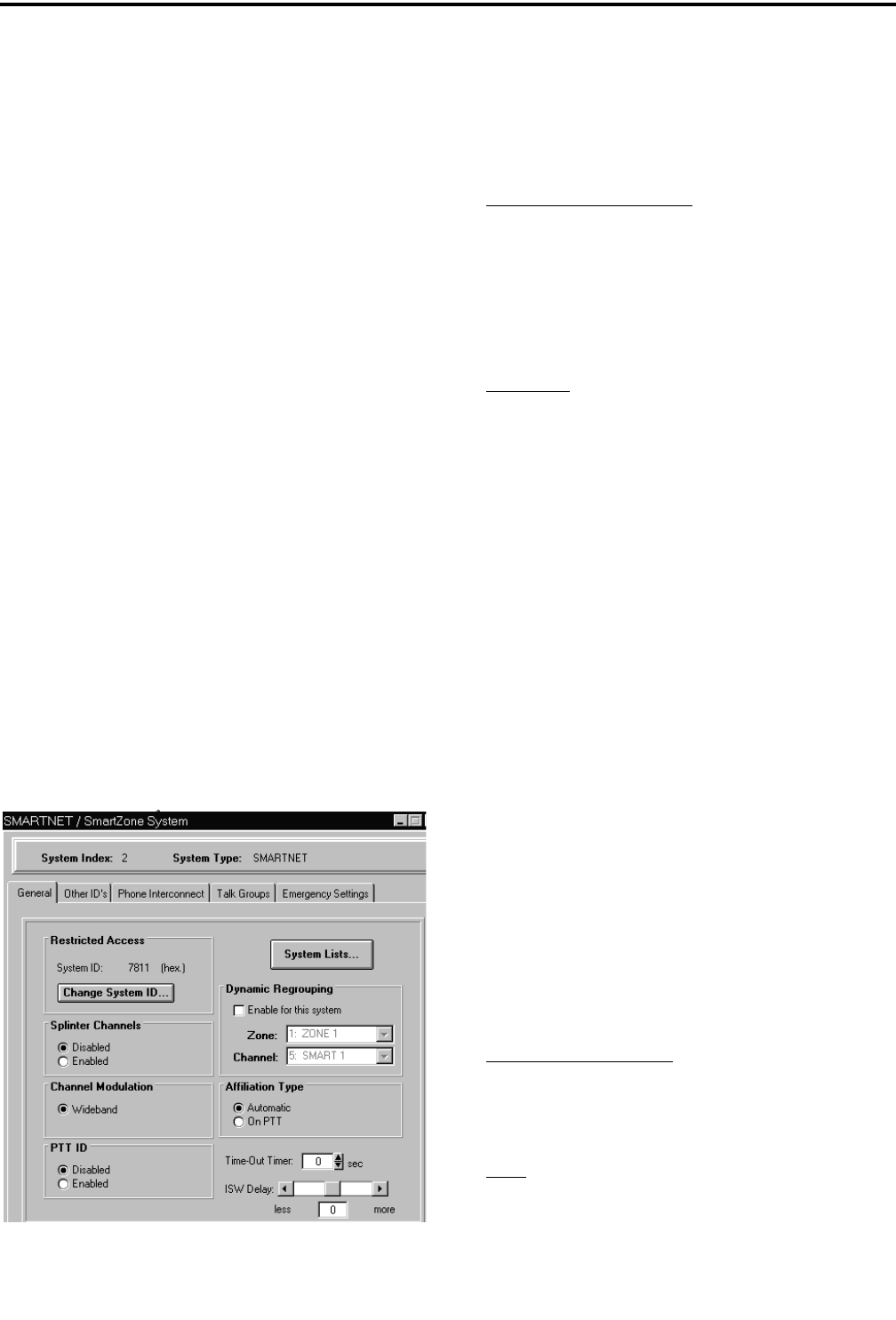
TRANSCEIVER PROGRAMMING
3-19 September 2001
Part No. 001-5100-001
These parameters are programmed the same as
described in Section 3.5.6.
3.6 PROGRAMMING SMARTNET/SMARTZONE
SYSTEMS AND CHANNELS
3.6.1 INTRODUCTION
To program SMARTNET and SmartZone
systems and channels, proceed as follows:
1. Program the SMARTNET/SmartZone radio-wide
information as described in Section 3.4.
2. To create a new SMARTNET/SmartZone system,
select the Systems > Add Systems in the menu bar
(see Section 3.1.11). Up to sixteen systems of any
type can be programmed as described in Section
1.2.5.
3. Program the SMARTNET/SmartZone system infor-
mation as described starting in the next section.
Make sure the desired SMARTNET or SmartZone
system is displayed by clicking it in the left pane or
selecting it in the Window menu in the menu bar
(see Section 3.1.9). Then program the channels as
described starting in Section 3.6.8.
3.6.2 SMARTNET/SMARTZONE SYSTEM
GENERAL SCREEN
The preceding SMARTNET/SmartZone System
General screen programs the following parameters:
Restricted Access
Change System ID Button - Displays the Change
System ID screen which is used to enter the system
ID of the system. This ID is entered as a hexadecimal
number from 0-9 and A-F. Valid numbers are from
0001-FFFF. The system ID corresponding to the
desired ID must also be located in the “key” subdi-
rectory of the program file.
System ID - Read-only field which shows the ID of
the system currently being edited.
Splinter Channels
When splinter channels are enabled, the receive
and transmit frequencies are 12.5 kHz lower than the
normal frequencies. Splinter channels are used only as
required in the Mexico and Canada border areas for
frequencies between 806 and 820.975 MHz.
Channel Modulation
When “Wideband” is enabled, the radio operates
with a 4 kHz maximum deviation between 821.000
and 824.975 MHz and 5 kHz maximum deviation for
all other frequencies. When it is disabled, deviation is
5 kHz with all frequencies.
System Lists Button
This button displays the screens used to program
the various per system lists. Refer to Section 3.6.7 for
more information on these lists.
Dynamic Regrouping
Enable For This System - When this box is checked,
a dynamic regrouping channel is enabled. This is a
SMARTNET channel which has the corresponding
talk group dynamically set by the dispatcher.
Zone - The physical zone containing the dynamic
regrouping channel. The value is selected on the
Channel Parameters screen.
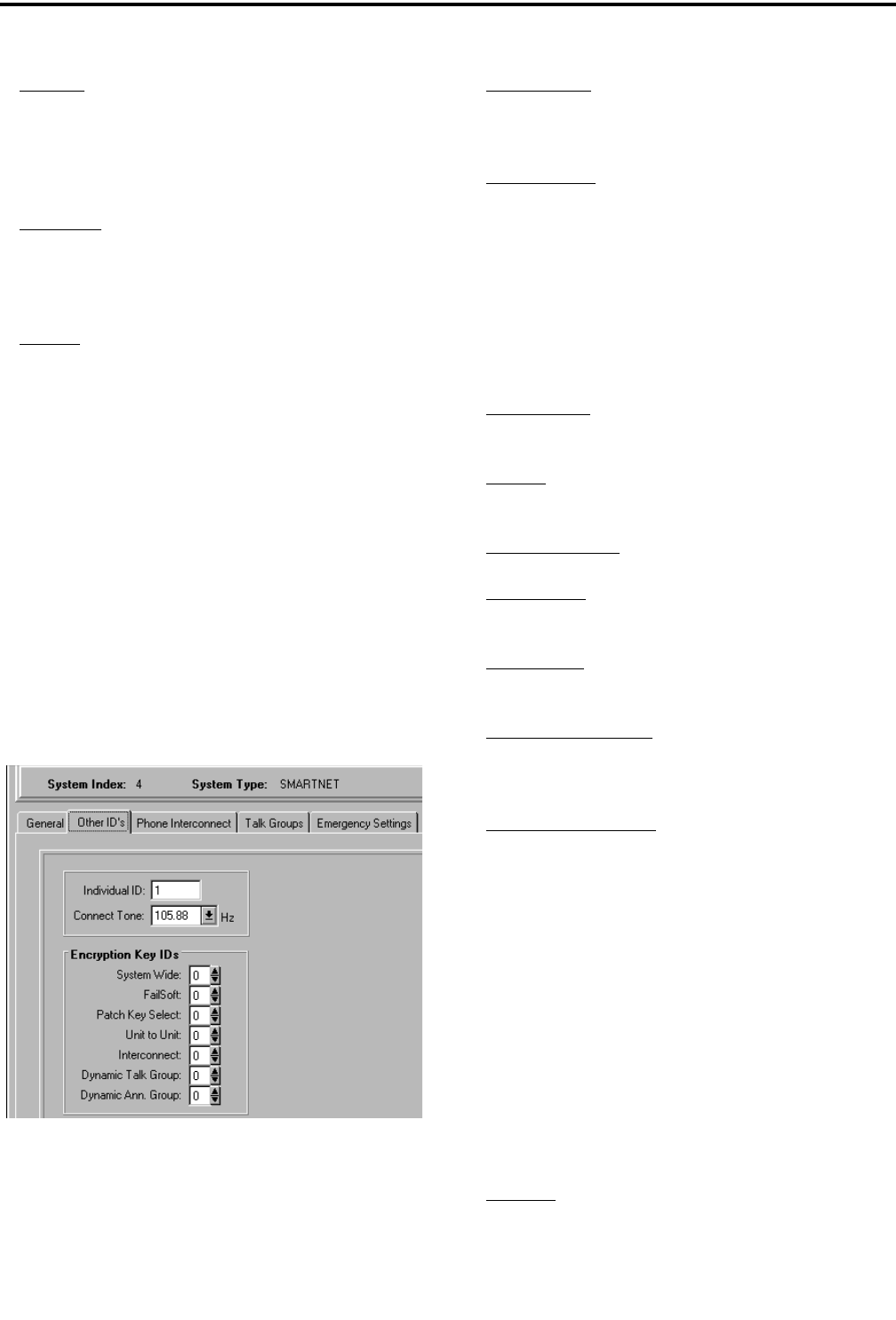
TRANSCEIVER PROGRAMMING
3-20 September 2001
Part No. 001-5100-001
Channel - The physical channel used for dynamic
regrouping. The value is selected on the Channel
Parameters screen.
Affiliation Type
Automatic - The radio immediately affiliates with the
central controller as soon as it is turned on and auto-
matically re-affiliates each time the talk group is
changed.
On PTT - The radio affiliates with the central control-
ler only when the PTT switch is pressed.
Time-Out Timer
This programs the time-out timer setting for the
system. It can be programmed for 0 min, 15 sec up to
3 min, 45 sec or it can be disabled (see Section 2.4.10).
ISW Delay
Increasing or decreasing this value changes the
transmission timing of ISWs relative to the reception
of OSWs.
3.6.3 SMARTNET/SMARTZONE SYSTEM
OTHER ID’S SCREEN
The SMARTNET/SmartZone Other ID’s screen
is shown above, and it programs the following
parameters.
Individual ID - Uniquely identifies the radio on a par-
ticular system. Each radio must have a different Unit
ID. Valid Unit IDs are from 1-63535.
Connect Tone - The tone expected by the controller
on the traffic channel to verify that a subscriber trans-
mission is occurring. This tone should be set the
same as it is in the controller.
Encryption Key IDs
Programs SecureNet Encryption ID selection that
is used in all except group calls.
System Wide - Key used for system-wide calls
(typically originated by the dispatcher).
Failsoft - Key used in failsoft conditions (see Section
2.7.11).
Patch Key Select - Key used in patch calls.
Unit To Unit - Key used for unit-to-unit (private)
calls.
Interconnect - Key used for telephone interconnect
calls.
Dynamic Talk Group - Key used for the dynamic
regrouping talk group when it is a standard talk
group.
Dynamic Ann. Group - Key used for the dynamic
regrouping talk group when it is an announcement
group.
3.6.4 SMARTNET/SMARTZONE SYSTEM
PHONE INTERCONNECT SCREEN
The SMARTNET/SmartZone Phone Intercon-
nect screen follows on the next page, and it programs
the following parameters.
Phone Interconnect
Refer to Section 2.7.6 for more information on
telephone calls.
Disabled - Telephone calls cannot be placed or
received.
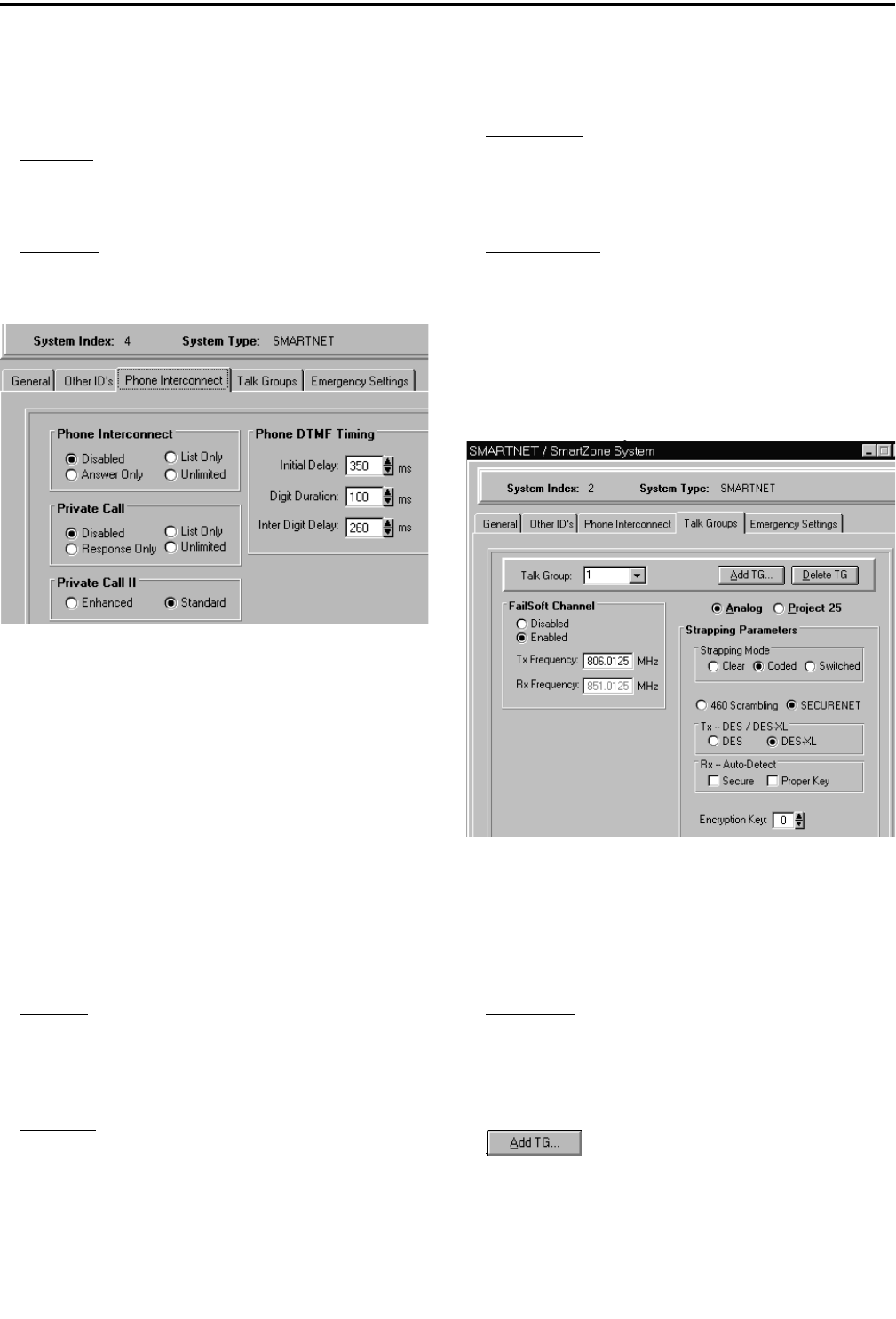
TRANSCEIVER PROGRAMMING
3-21 September 2001
Part No. 001-5100-001
Answer Only - Telephone calls can be received but
not placed.
List Only - Telephone calls can be placed and
received, and numbers can be recalled from memory
only.
Unlimited - Telephone calls can be placed and
received, and numbers can be recalled from memory
or dialed using a microphone keypad.
SMARTNET/SmartZone Phone Interconnect
Screen
Private Call
This is the same as above, except for private
(unit-to-unit) calls. Refer to Section 2.7.4 for more
information.
Private Call II
This programs either standard or enhanced
private calls as follows:
Standard - The user does not receive any feedback
when the called radio is not active in the system.
Only a “No Answer” is received if the called radio
does not answer.
Enhanced - When a call is placed, the system tells the
user if the called radio is currently active in the sys-
tem and within range. The calling radio displays “No
Ack” if the called radio is not active in the system
and “No Answer” if it is active but does not answer.
Phone DTMF Timing
Initial Delay - Delay from 50-500 milliseconds from
when a traffic channel is granted for phone intercon-
nect to the start of the dialing out of the phone
number.
Digit Duration - Duration from 50-500 milliseconds
of each phone number digit.
Inter-Digit Delay - Delay from 50-500 milliseconds
between each digit of a phone number. start here
3.6.5 SMARTNET/SMARTZONE SYSTEM
TALK GROUPS SCREEN
The SMARTNET/SmartZone Talk Groups screen
shown above is used to set up SMARTNET/
SmartZone talk groups and program unique talk group
information. The parameters programmed in this
screen are as follows:
Talk Group - Selects the talk group to program. This
is the actual ID of the talk group. Talk groups are
added or deleted by clicking the Add TG or Delete
TG button (see following). Talk groups are assigned
to channels on the channel screen (see Section 3.6.9).
- Clicking this button displays a dialog
box that adds a new talk group. The alias (alpha tag)
of up to ten characters is entered, and the new group
is then added after the others that are already set up.
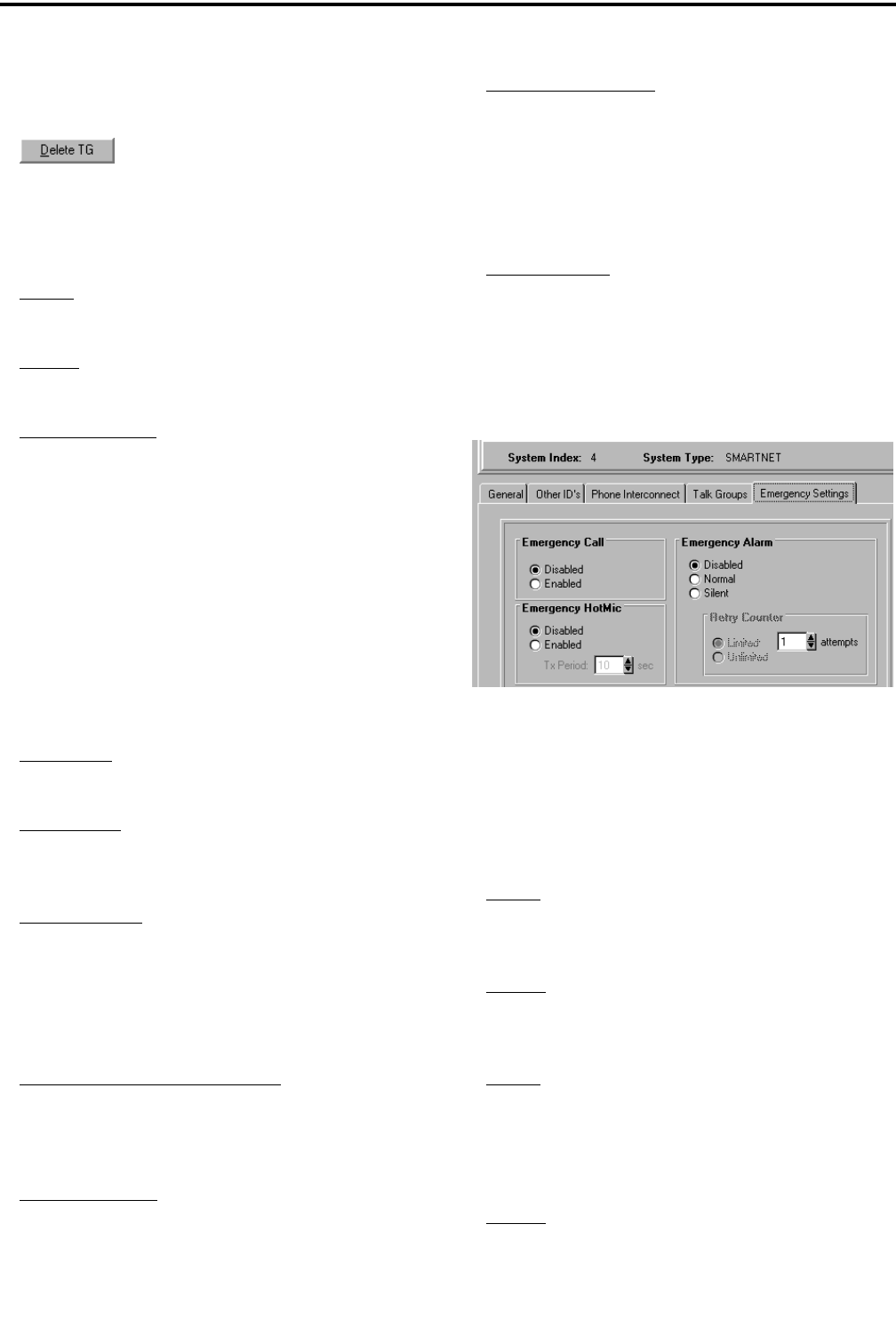
TRANSCEIVER PROGRAMMING
3-22 September 2001
Part No. 001-5100-001
Each SMARTNET/SmartZone system can be pro-
grammed with up to 256 talk groups.
- Clicking this button deletes the cur-
rently selected talk group (the one displayed in the
“Talk Group” box).
Failsoft Channel
Enable - Enables a failsoft channel on the talk group
if a controller failure occurs (see Section 2.7.11).
Disable - The failsoft mode is not entered if the con-
troller fails.
Tx/Rx Frequency - Programs the failsoft channel
frequency if “Enabled” is checked.
Analog/Project 25
This selects the type of SMARTNET/SmartZone
channel as analog or Project 25 (digital).
Strapping Parameters
The Strapping Parameters program the channel
type (analog or Project 25 digital) and encryption on
the talk group as follows:
Clear Mode - All transmissions on the talk group
occur in the clear (unscrambled) mode.
Coded Mode - All transmissions on the talk group
occur in the secure (scrambled) mode selected as
follows.
Switched Mode - The clear or secure status of the
talk group is selected by the Clear/Secure option
switch.
NOTE: Refer to Section 2.7.15 for more
SMARTNET/SmartZone encryption information.
460 Scrambling/SecureNet Mode - These options
select either the Transcrypt 460 or DES type of
secure communication when either the coded or
switched strapping mode is selected.
Tx DES/DES-XL - Selects either DES or DES-XL
encryption protocol.
Rx Secure Autodetect - With the SecureNet protocol,
selecting “Secure” enables automatic detection of
encrypted receive signals. This may increase the
response time of the radio to an incoming signal.
Selecting “Proper Key” causes the radio to search the
available SecureNet keys until it finds a match for the
current transmission.
Encryption Key - Selects the encryption key used on
the talk group. This is a number from 0-15 that refers
to a hardware location in the radio that contains the
real key.
3.6.6 SMARTNET/SMARTZONE SYSTEM
EMERGENCY SETTINGS SCREEN
The SMARTNET/SmartZone Emergency
Settings screen and the parameters programmed in this
screen are as follows:
Emergency Call
Enable - When the Emergency option switch and
then the PTT switch are pressed, an emergency group
call is transmitted.
Disable - An emergency group call is not authorized.
Emergency Hot Mic
Enable - When an emergency alarm is generated and
the emergency alarm acknowledgment received, the
emergency mode is automatically entered and trans-
mitting begins for the time specified by the Tx Period
parameter (see following).
Disable - Automatic transmissions do not occur.
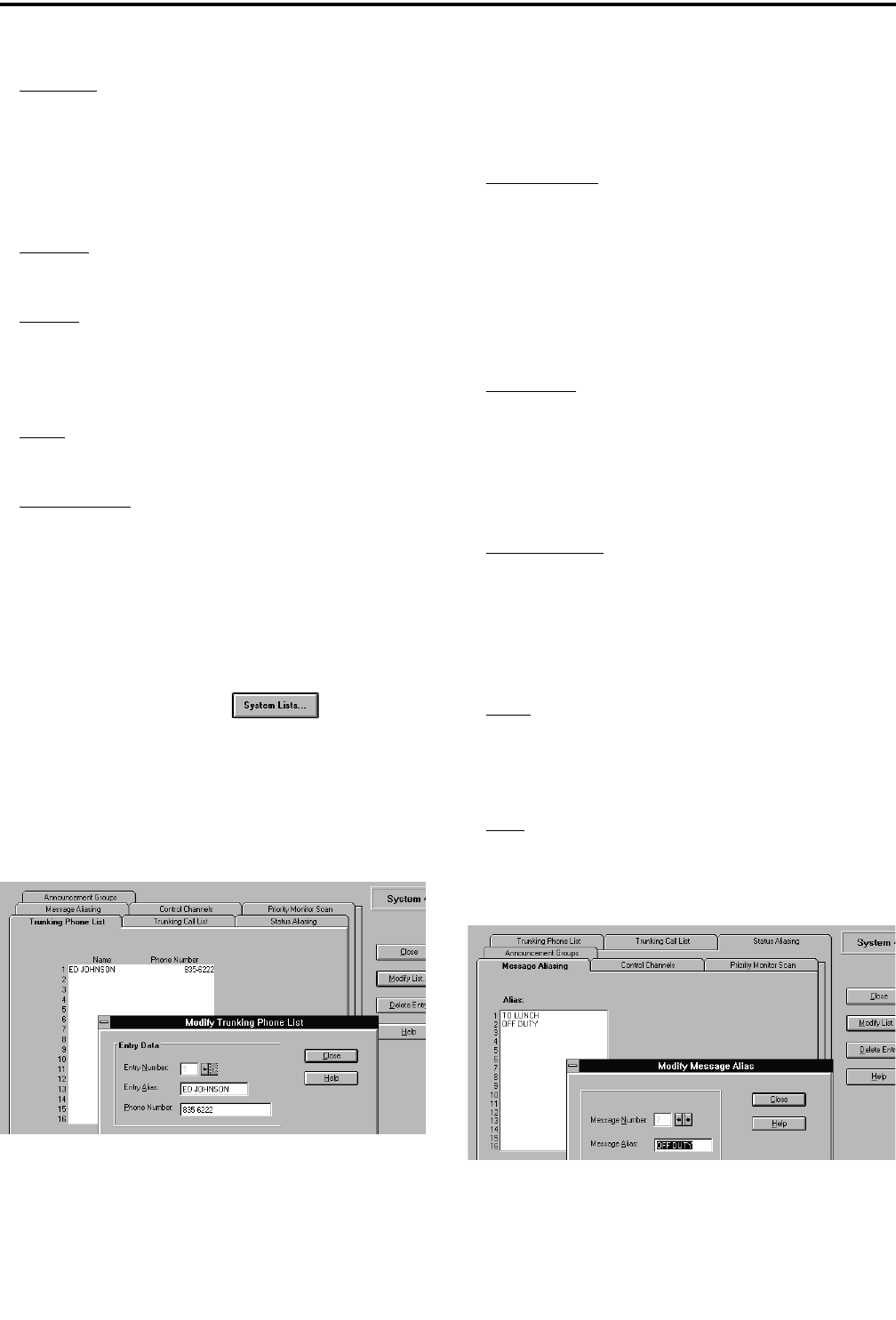
TRANSCEIVER PROGRAMMING
3-23 September 2001
Part No. 001-5100-001
Tx Period - Defines the period during which trans-
missions occur with the microphone audio unmuted
(without user intervention). Times of 10-120 seconds
in 10-second steps can be selected.
Emergency Alarm
Disabled - No emergency signal is sent when the user
presses the Emergency option switch.
Normal - When the user presses the Emergency
option switch, an emergency signal is sent to the dis-
patcher. Audio and visual feedback is provided by
the radio.
Silent - Same as “Normal” except no audio or visual
feedback is provided.
Retry Counter - When “Unlimited” is selected, an
emergency call is repeated until acknowledged or
canceled. When “Limited” is checked, calls are
attempted only the specified number of times.
3.6.7 SMARTNET/SMARTZONE SYSTEM LISTS
SCREENS
Clicking System Lists in the left pane under
SMARNET > General or the button in the
General screen described in Section 3.6.2 displays the
screens used to program the various lists that are
unique for each SMARTNET/SmartZone system.
These screens are as follows:
Trunking Phone List Screen
This screen programs the phone number list if
used (see Section 2.7.6). To edit this list, click the
Trunking Phone List tab and then the “Modify List”
button on the right side of the screen. The following
information is then programmed in the dialog box that
is displayed:
Entry Number - This box selects the entry to be
edited. The scroll bars to the right of this box select
the desired entry. A phone list can contain up to 16
entries. Selecting a new entry number automatically
validates and stores the current entry. If the current
entry contains an invalid field (for example, too
many digits in the phone number), the entry number
does not change and the invalid field is highlighted.
Entry Alias - Up to ten characters can be entered to
identify the phone number. This identification is dis-
played when phone numbers are selected by the user
from the list. Only uppercase letters can be entered,
so lowercase letters are automatically converted to
uppercase by the program.
Phone Number - This is the number dialed when the
location is selected. Characters that can be entered
include 0-9, #, (,), and P (a “P” programs a pause).
The maximum number of digits excluding (,) and
spaces is 16, and the maximum including (,) and
spaces is 24.
Close - Clicking this button verifies the current entry,
stores it, and then closes the dialog box. If the current
entry contains an invalid field, the dialog box does
not close and the invalid field is highlighted.
Help - Accesses the Help screen. Help can also be
selected at any time by pressing the F1 key.
Message Aliasing Screen
This screen associates an alias (name) with each
message number (see Section 2.7.8). To edit this list,
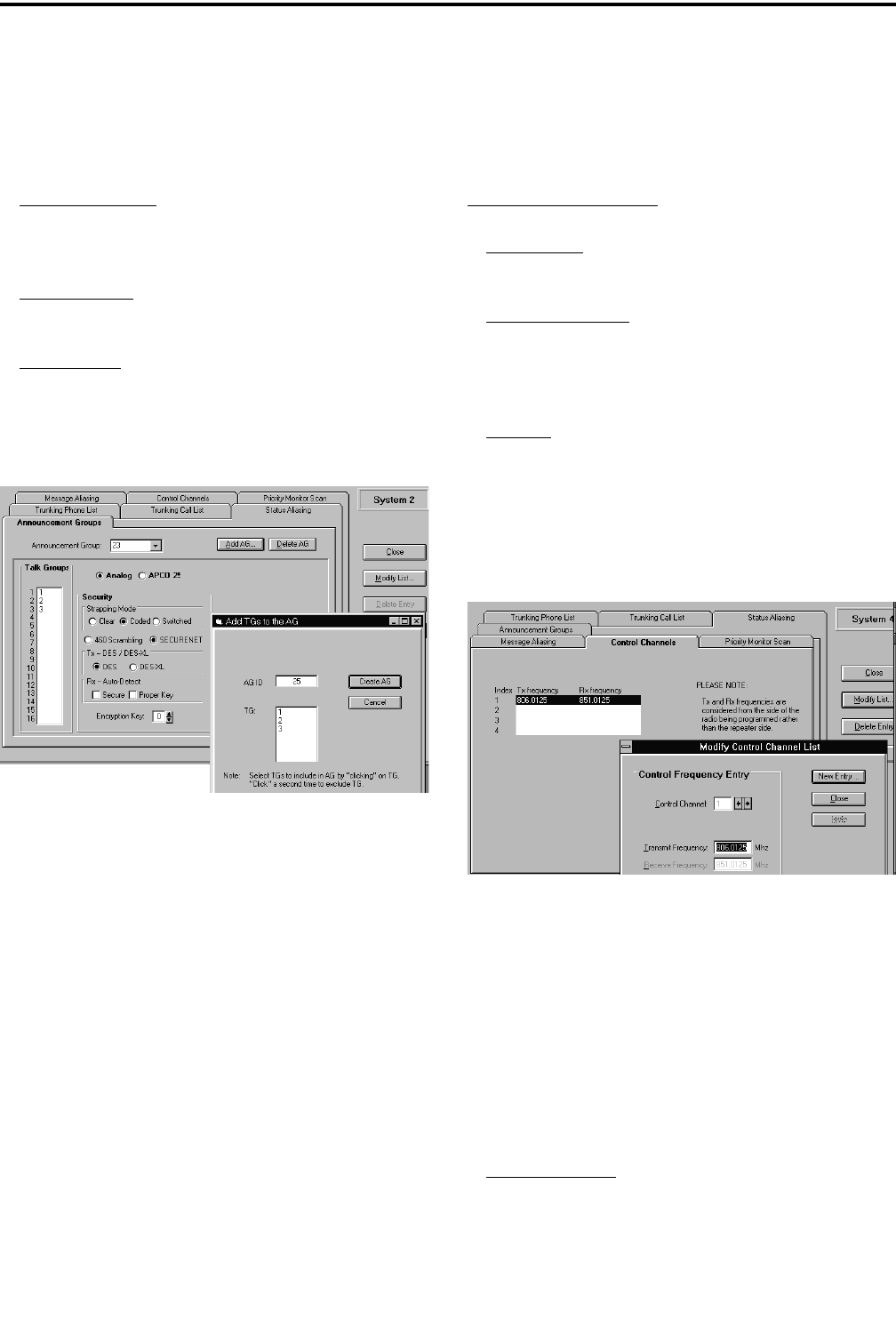
TRANSCEIVER PROGRAMMING
3-24 September 2001
Part No. 001-5100-001
click the Message Aliasing tab and then the “Modify
List” button on the right side. The following informa-
tion is then programmed in the dialog box that is
displayed:
Message Number - This box selects the message to
be edited. The scroll bars to the right of this box
select the desired message number.
Message Alias - Programs the alias which can be up
to any ten alphanumeric characters.
Close Button - Validates the entry and closes the dia-
log box. The entry is also validated when another
message number is selected.
Announcement Groups Screen
This screen programs the announcement groups
that are used to communicate with several talk groups
simultaneously. There can be up to 3 announcement
groups per system, and each announcement group can
have up to 15 talk groups.
To create an announcement group, click the “Add
AG” button and the “Add TGs to the AG” screen also
shown above is displayed. Enter the announcement
group ID, click the talk groups to select/deselect those
that are to be included, and then create the announce-
ment group by clicking the “Create AG” button. To
delete the current announcement group, click the
“Delete AG” button.
To edit an announcement group, click the
“Modify List” button and select the announcement
group to be edited from the “AG” pull-down menu.
Then click the talk groups to select/de-select them and
then click the “Update List” button to make the
changes.
Main Screen Parameters
Talk Groups - This is a read-only list of all talk
groups currently in the announcement group.
Analog/Project 25 - Programs the type of communi-
cation associated with the announcement group.
Either analog or digital (Project 25) communication
can be selected.
Security - Defines the type of secure communication
used, if any, for the announcement group. These
parameters are programmed similar to those on the
Talk Group screen described in Section 3.6.5.
Control Channels Screen
This screen allows the system manager to view
and edit the control channels. Each SMARTNET
system can have up to four control channels, and each
SmartZone system can have up to 32 control channels.
Only one control channel is active at a time.
To edit this list, click the Control Channels tab
and then the “Modify List” button on the right side.
The following information is then programmed in the
dialog box that is displayed:
Control Channel - Selects the control channel to be
edited. To add a new channel, click the “New Entry”
button.
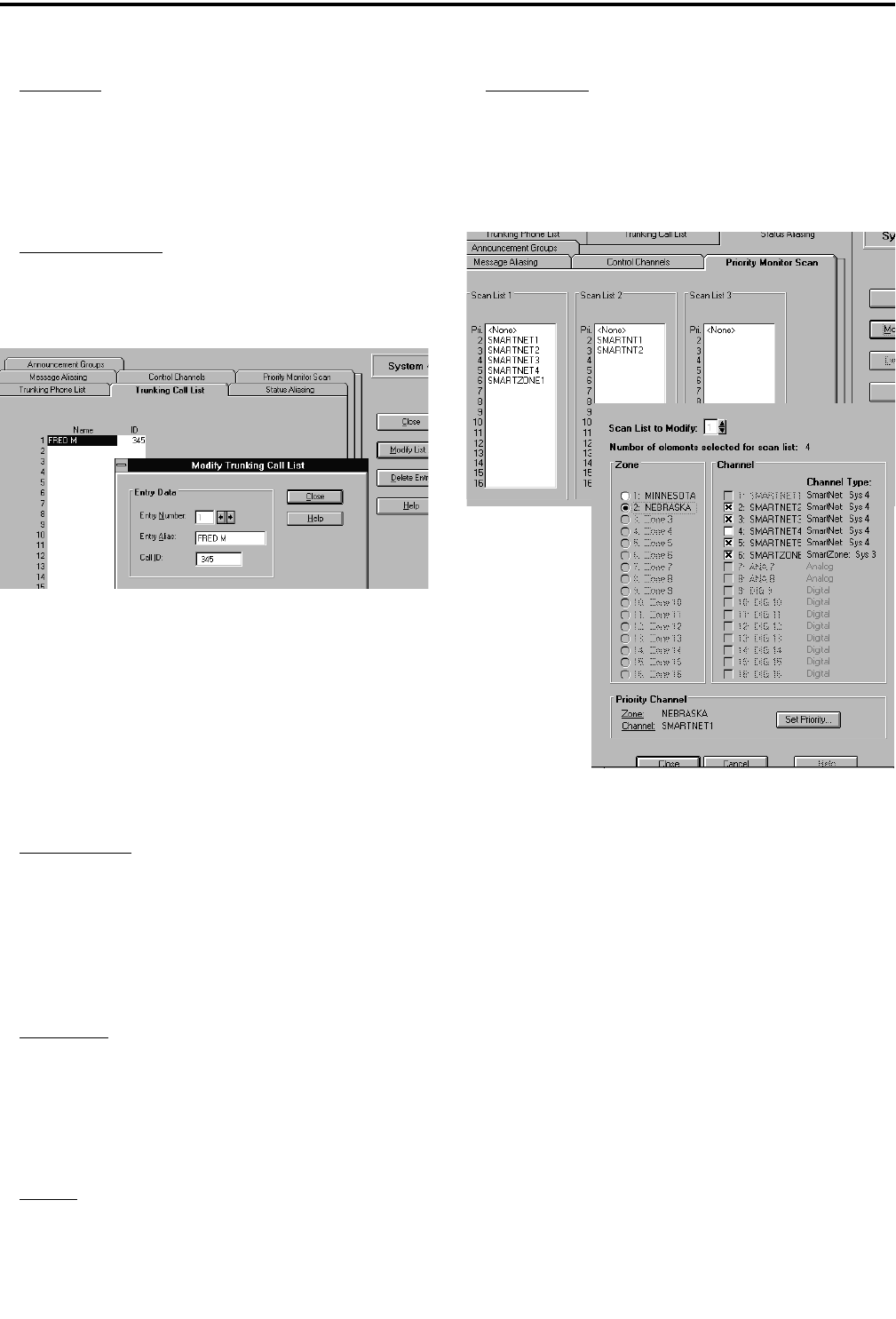
TRANSCEIVER PROGRAMMING
3-25 September 2001
Part No. 001-5100-001
Frequency - The transmit and receive frequency of
the control channel. These are the mobile frequen-
cies, not the repeater frequencies. Only multiples of
5 kHz and 6.25 kHz are valid. With 800 MHz fre-
quencies, a receive frequency 45 MHz above the
transmit frequency is automatically entered.
New Entry Button - Click this button to display the
dialog box used to add another control channel.
Trunking Call List Screen
This screen is shown above, and it allows the list
of IDs used for private calls to be programmed. A
maximum of 16 IDs can be programmed (see Section
2.7.4).
To edit this list, click the Trunking Call List tab
and then the “Modify List” button on the right side.
This following information is then programmed in the
dialog box that is displayed:
Entry Number - This box selects the entry to be
edited. The scroll bars to the right of this box select
the desired entry. A phone list can contain up to 16
entries. Selecting a new entry number automatically
validates and stores the current entry. If the current
entry contains an invalid field, the entry number does
not change and the invalid field is highlighted.
Entry Alias - Up to ten characters can be entered to
identify the user being called. This identification is
displayed when the mobile to be called is selected by
the user from the list. Only uppercase letters can be
entered, so lowercase letters are automatically con-
verted to uppercase by the program.
Call ID - This is the ID of the radio being called.
Valid entries are 1-49152. A “0” is detected as no
entry.
Close Button - Verifies the current entry, stores it,
and then closes the dialog box. If the current entry
contains an invalid field, the dialog box does not
close and the invalid field is highlighted.
Priority Monitor Scan Screen
This screen is shown above, and it programs up to
three Priority Monitor scan lists that are allowed. Each
scan list can contain up to 15 channels plus a priority
channel (see Section 2.7.12). These channels must be
from the same SMARTNET/SmartZone system. Chan-
nels set up for other systems are not allowed.
To edit a list, click the Priority Monitor Scan tab
and then click the “Modify List” button on the right
side. A screen similar to the top screen shown above is
then displayed to select the channels to be included in
that scan list. Select channels as follows:
1. Select the scan list to be edited using the scroll bars
next to the “Scan List To Modify” box.
2. Select the first zone with channels to be included
and select the desired channels. Repeat for the other
zones.
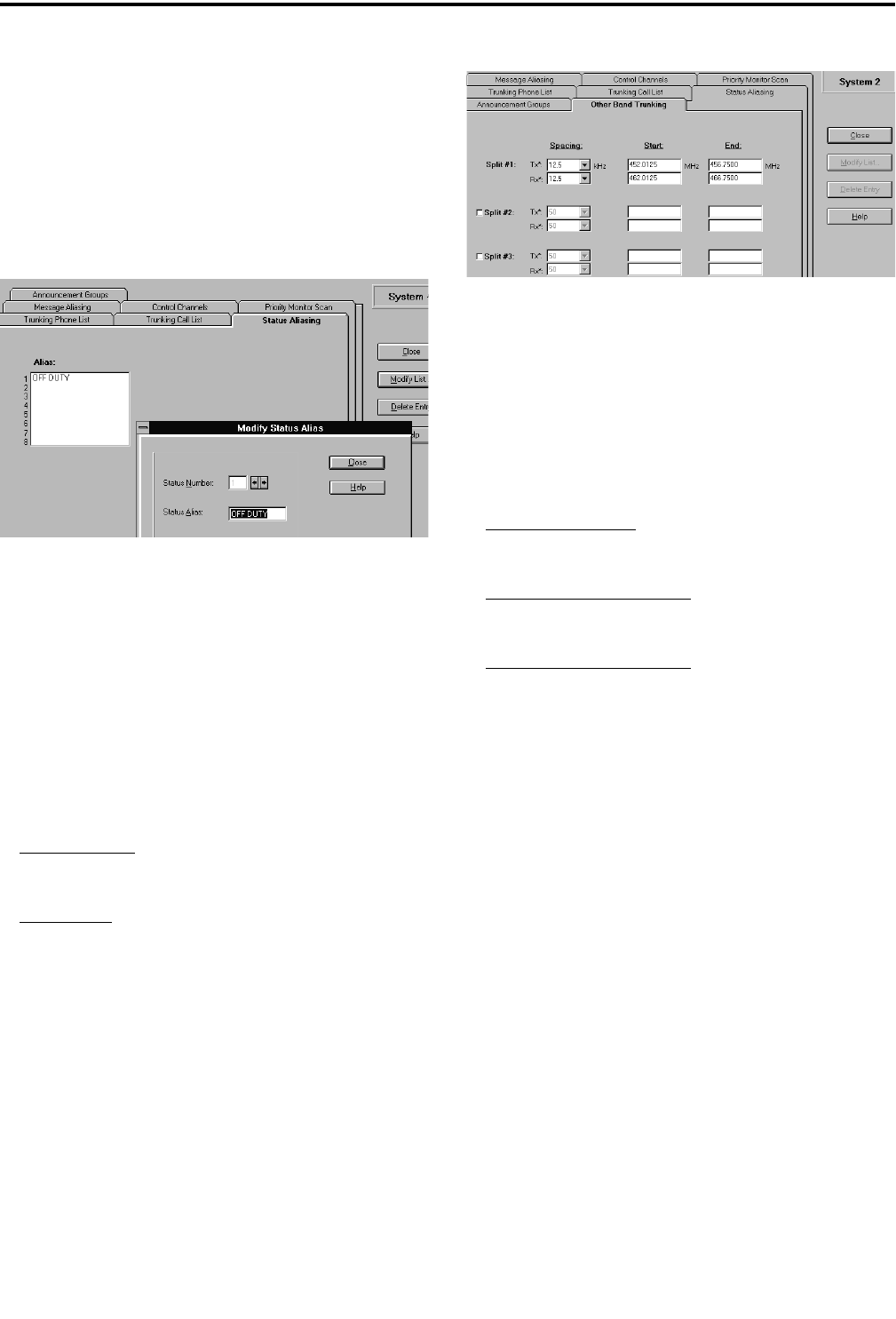
TRANSCEIVER PROGRAMMING
3-26 September 2001
Part No. 001-5100-001
3. To select the priority channel, click the Set Priority
button. Then select the desired Zone/Channel or
“None” if no priority channel is to be scanned.
4. Repeat the preceding steps for the other scan lists if
applicable.
Status Aliasing Screen
This screen is shown above, and it programs the
alias for each of up to eight status conditions that can
be sent. The meaning of each status number is defined
by the system manager. Refer to Section 2.7.9 for
more information.
To edit this list, click the Status Aliasing tab and
then the “Modify List” button on the right side. The
following information is then programmed in the
dialog box that is displayed:
Status Number - The scroll bars to the right of this
box select the status number that is to be edited.
Status Alias - Programs up to 10 characters that iden-
tify the status. This identification is displayed when
the user selects a status condition.
Other Band Trunking Screen
The Other Band Trunking screen follows, and it
is displayed only when programming channels in the
VHF and UHF frequency bands. It is used to define
the relationship between the transmit and receive
channel frequencies in these bands. With 800 MHz
systems, this is not required because the difference
between the transmit and receive frequency is always
45 MHz.
Other Band Trunking Screen
This screen organizes the available frequency
band into three sub-bands, called splits. Each split is
defined by a start frequency, stop frequency, and
channel spacing as follows. Frequencies outside the
defined split cannot be accessed by the radio. These
frequency splits must be defined the same way they
are defined for the trunking controller.
Tx and Rx Spacing - Spacing in kHz between each
potential transmit and receive frequency.
Tx and Rx Start Frequency - Start in MHz of the band
split for transmit and receive frequencies.
Tx and Rx Stop Frequency - Stop in MHz of the band
split for transmit and receive frequencies.
3.6.8 SETTING UP SMARTNET/SMARTZONE
CHANNELS
The SMARTNET/SmartZone Channel screen
shown in Figure 3-5 is displayed when the
SMARTNET or SmartZone channel type is selected.
The channel screen programs unique channel parame-
ters and also assigns channels to the selectable zones
displayed by the transceiver.
The general procedure for setting up a
SMARTNET/SmartZone channel is as follows. Refer
to the descriptions which follow this procedure for
information on SMARTNET/SmartZone Channel
screen parameters.
1. Make sure that the desired zone is selected in the
Zone box.
2. Select the channel number in the Channels Index
box which is to be programmed with the channel.
This will be the number displayed when the channel
is selected.
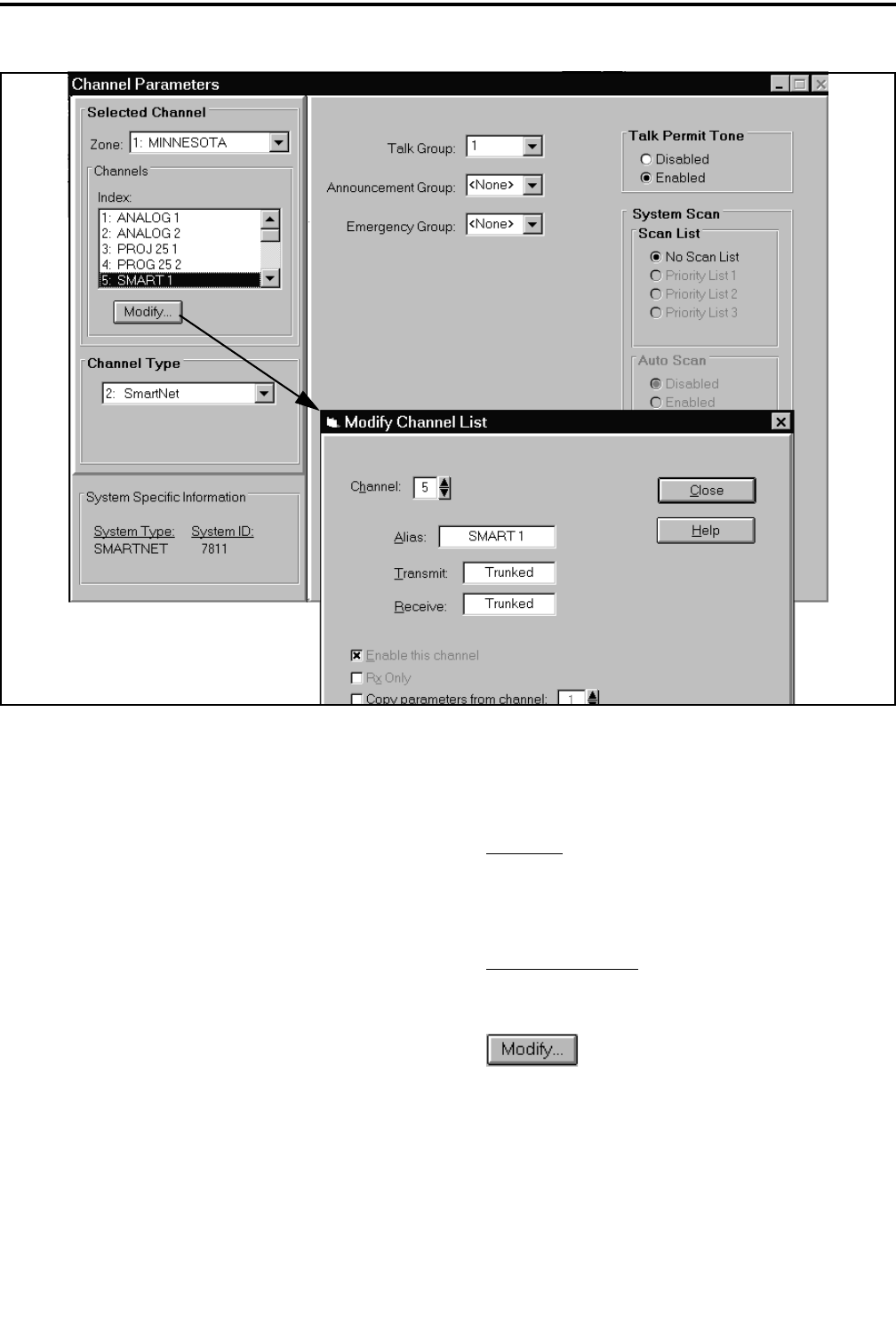
TRANSCEIVER PROGRAMMING
3-27 September 2001
Part No. 001-5100-001
Figure 3-5 SMARTNET/SmartZone Channel Screen
3. To set up a SMARTNET channel, select
“SMARTNET” as the channel type, and to set up a
SmartZone channel, select “SmartZone”.
4. Click the Modify button to display the dialog box
shown in the lower part of Figure 3-5. This box
programs the alias (tag) that is displayed when it is
selected.
5. Program the other parameters in the main part of the
screen (see information which follows).
3.6.9 SMARTNET/SMARTZONE CHANNEL
SCREEN PARAMETERS
The following parameters are programmed in the
SMARTNET/SmartZone channel screen shown in
Figure 3-5.
Selected Channel
Zone Box - Clicking the arrow to the right of this box
displays the available zones. Click on a zone to select
it. Zones and zone aliases are set up on the Radio-
Wide General screen described in Section 3.4.2.
Channel Index Box - Displays the channels in the
selected zone. The channel type is selected by the
Channel Type box below it.
- Displays the screen shown in the lower
part of Figure 3-5. The parameters programmed in
this screen are as follows:
Channel - Selects the channel to be edited.
Alias - Programs the identification that is displayed
when the channel is selected. Up to 10
characters can be programmed.

TRANSCEIVER PROGRAMMING
3-28 September 2001
Part No. 001-5100-001
Transmit - Not programmable because the transmit
frequency is dynamically assigned over the
air (“Trunked” is always displayed).
Receive - Dynamically assigned like the preceding
transmit frequency.
Enable This Channel - Not used because SMART-
NET/SmartZone channels are always
enabled if set up. To disable a channel so
that it is not selectable, choose the conven-
tional type and do not check this box.
Copy Parameters From Channel - If another channel
is selected in the box, the parameters from
that channel are copied to the new channel.
Channel Type
Channel Type Box - Selects the specific system from
which the channel is selected. All programmed
systems are displayed by number and type (conven-
tional, SMARTNET, SmartZone). When a different
channel type is selected, the screen for that type of
channel is automatically displayed.
Other Screen Parameters
System Specific Information - With SMARTNET/
SmartZone systems, indicates the system ID
programmed on the system General screen (see
Section 3.6.2).
Talk Group - Selects the talk group selected by that
channel. Talk groups are programmed in the Talk
Group screen described in Section 3.6.5.
Announcement Group - Selects one of up to three
announcement groups selected by the channel. Refer
to “Announcement Group Screen” in Section 3.6.7
for more information.
Emergency Group - Selects the talk group used for
emergency calls.
Talk Permit Tone - When enabled, a short tone
sounds after a request for a group call has been
approved by the main controller. This indicates that
speaking can begin. When disabled, no audio feed-
back is used to indicate when speaking can begin.
System Scan - Selects the Priority Monitor Scan list
selected by the channel (see “Priority Monitor Scan
Screen” description in Section 3.6.7). If “No Scan
List” is programmed, scanning is not selectable on
that channel.
Auto Scan - When enabled and a channel is selected,
the radio automatically begins scanning the scan list
associated with that channel. When disabled, scan-
ning can only be started manually by the Scan option
switch.
3.7 PASSWORD OPERATION
3.7.1 GENERAL
The 50xx portable radio can be programmed with
a Power-Up and Programming password. If the Power-
Up password is enabled, it must be entered each time
power is turned on to make the radio operational. This
prevents unauthorized use. The Programming pass-
word must be entered to access the keypad program-
ming feature of the radio. This prevents unauthorized
reprogramming of the transceiver. Currently, the 50xx
portable is the only transceiver that is programmed
with the PCTrunk software that utilizes password
access. More information on these two passwords
follows.
3.7.2 POWER-UP PASSWORD
The Power-Up password function is enabled on
the Radio-Wide General screen described in Section
3.4.2. This password must then be entered each time
transceiver power is turned on. In addition, since the
radio resets after downloading or uploading data, it
must be entered after performing those functions (see
Sections 3.3.3 and 3.3.4). When entering the pass-
word using the radio keypad, enter the eight password
digits and then press the ENT key. If an error is made,
press the CLR key to start over.
To enable the power-up password function on the
programmer screen, the Power-Up password must be
entered. This prevents the radio from being
programmed with an unknown password which would
make it inoperable. The password is a series of eight
numbers, and it is programmed by clicking the
“Change Password” button on the Radio-Wide
General screen. The default password is eight zeros
(00000000), and it may need to be entered as the “old”
password if applicable. The password can also be
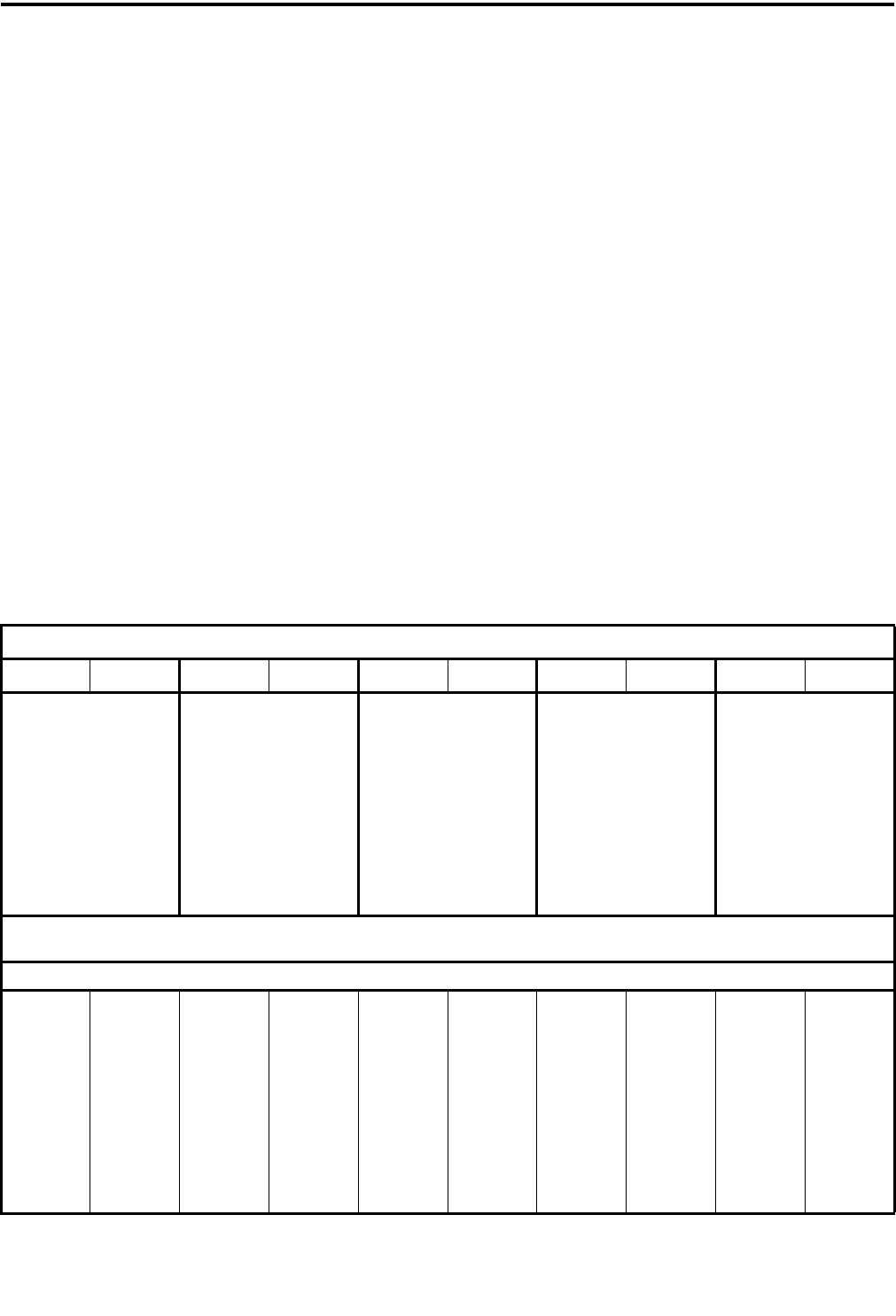
TRANSCEIVER PROGRAMMING
3-29 September 2001
Part No. 001-5100-001
changed using the radio keypad when the keypad is
locked by entering the old password and then pressing
the # key. Refer to Section 2.4.3 for more information.
If the Power-Up password has been enabled in the
radio connected to the programmer, the Programming
password described in the next section must then be
entered before a data can be downloaded or uploaded.
This prevents an unauthorized person from reading
radio data or changing radio programming.
If the password is forgotten, it can be overridden
by pressing the lower button on the side 8 times. This
unlocks the radio and reverts to the default password
of “00000000”. However, it also erases all channel
frequencies, trunked group IDs, and encryption infor-
mation. Therefore, the radio must be reprogrammed
after this is done to make it operational again.
3.7.3 PROGRAMMING PASSWORD
The Programming password must be entered to
enable the Keypad Programming mode described in
Section 2.9. This prevents an unauthorized person
from changing the radio programming. As described
in the preceding section, the Programming password
must also be entered when downloading or uploading
data from a radio that has the Power-Up password
function enabled.
Table 3-1 Call Guard (CTCSS/DCS) Codes and Tones
Recommended Tone Call Guard Codes
Code Freq Code Freq Code Freq Code Freq Code Freq
09 91.5 18 123.0 27 167.9 37* 241.8
01 67.0 10 94.8 19 127.3 28 173.8 38* 250.3
02 71.9 11** 97.4 20 131.8 29 179.9 39** 69.3
03 74.4 12 100.0 21 136.5 30 186.2 40** 206.5
04 77.0 13 103.5 22 141.3 31 192.8 41** 229.1
05 79.7 14 107.2 23 146.2 32 203.5 42** 254.1
06 82.5 15 110.9 24 151.4 33 210.7
07 85.4 16 114.8 25 156.7 34* 218.1
08 88.5 17 118.8 26 162.2 35* 225.7
* These tones normally are not used because of their close proximity to the voice frequencies
** This tone is normally not used because it may cause interference with adjacent tones.
Recommended Digital Call Guard Codes
023 065 131 172 261 346 431 532 654 743
025 071 132 174 263 351 432 546 662 754
026 072 134 205 265 364 445 565 664
031 073 143 223 271 365 464 606 703
032 074 152 226 306 371 465 612 712
043 114 155 243 311 411 466 624 723
047 115 156 244 315 412 503 627 731
051 116 162 245 331 413 506 631 732
054 125 165 251 343 423 516 632 734
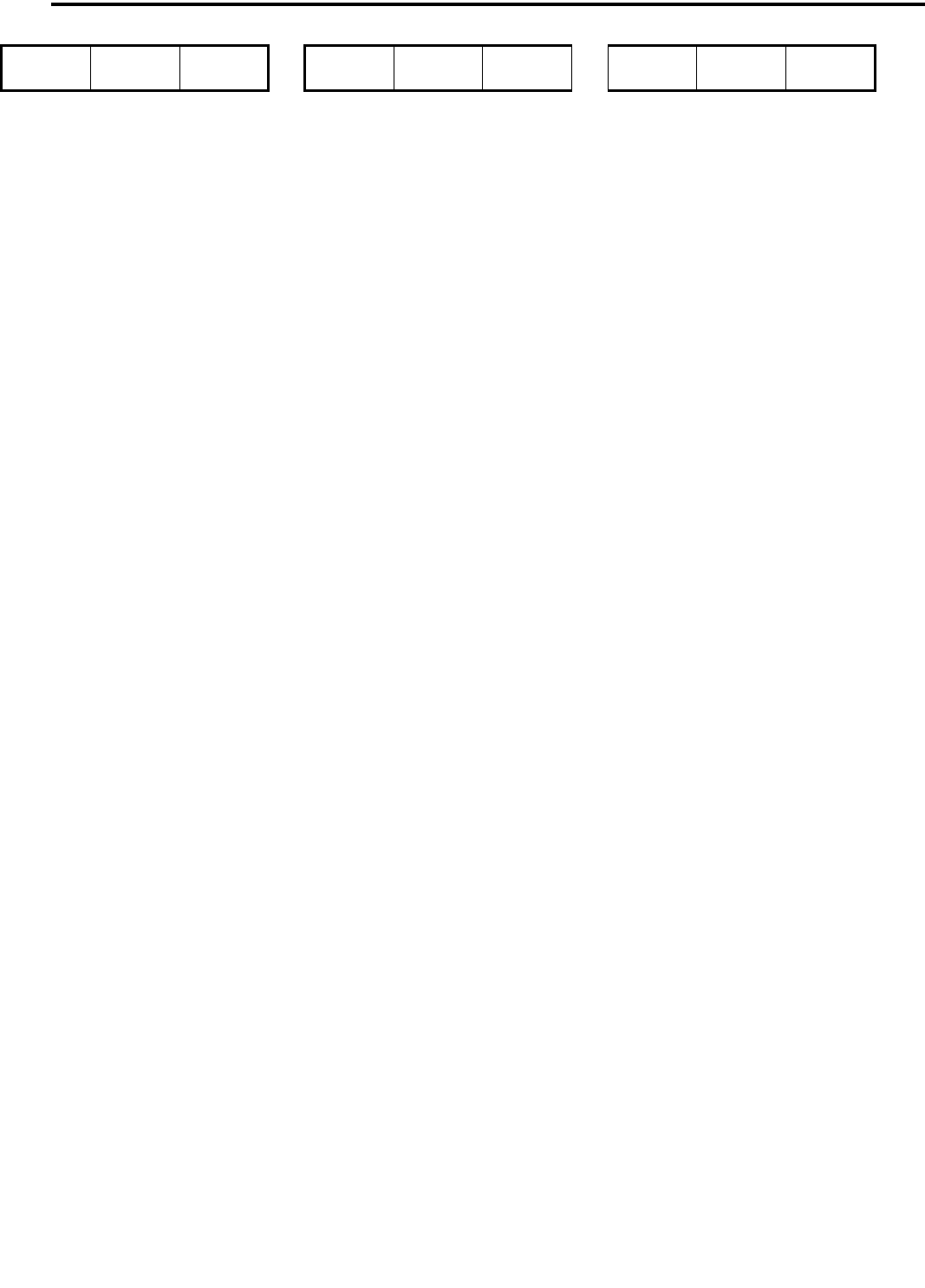
TRANSCEIVER PROGRAMMING
3-30 September 2001
Part No. 001-5100-001
1 851.0125 806.0125
2 851.0375 806.0375
3 851.0625 806.0625
4 851.0875 806.0875
5 851.1125 806.1125
6 851.1375 806.1375
7 851.1625 806.1625
8 851.1875 806.1875
9 851.2125 806.2125
10 851.2375 806.2375
11 851.2625 806.2625
12 851.2875 806.2875
13 851.3125 806.3125
14 851.3375 806.3375
15 851.3625 806.3625
16 851.3875 806.3875
17 851.4125 806.4125
18 851.4375 806.4375
19 851.4625 806.4625
20 851.4875 806.4875
21 851.5125 806.5125
22 851.5375 806.5375
23 851.5625 806.5625
24 851.5875 806.5875
25 851.6125 806.6125
26 851.6375 806.6375
27 851.6625 806.6625
28 851.6875 806.6875
29 851.7125 806.7125
30 851.7375 806.7375
31 851.7625 806.7625
32 851.7875 806.7875
33 851.8125 806.8125
34 851.8375 806.8375
35 851.8625 806.8625
36 851.8875 806.8875
37 851.9125 806.9125
38 851.9375 806.9375
39 851.9625 806.9625
40 851.9875 806.9875
41 852.0125 807.0125
42 852.0375 807.0375
43 852.0625 807.0625
44 852.0875 807.0875
45 852.1125 807.1125
46 852.1375 807.1375
47 852.1625 807.1625
48 852.1875 807.1875
49 852.2125 807.2125
50 852.2375 807.2375
51 852.2625 807.2625
52 852.2875 807.2875
53 852.3125 807.3125
54 852.3375 807.3375
55 852.3625 807.3625
56 852.3875 807.3875
57 852.4125 807.4125
58 852.4375 807.4375
59 852.4625 807.4625
60 852.4875 807.4875
61 852.5125 807.5125
62 852.5375 807.5375
63 852.5625 807.5625
64 852.5875 807.5875
65 852.6125 807.6125
66 852.6375 807.6375
67 852.6625 807.6625
68 852.6875 807.6875
69 852.7125 807.7125
70 852.7375 807.7375
71 852.7625 807.7625
72 852.7875 807.7875
73 852.8125 807.8125
74 852.8375 807.8375
75 852.8625 807.8625
76 852.8875 807.8875
77 852.9125 807.9125
78 852.9375 807.9375
79 852.9625 807.9625
80 852.9875 807.9875
81 853.0125 808.0125
82 853.0375 808.0375
83 853.0625 808.0625
84 853.0875 808.0875
85 853.1125 808.1125
86 853.1375 808.1375
87 853.1625 808.1625
88 853.1875 808.1875
89 853.2125 808.2125
90 853.2375 808.2375
91 853.2625 808.2625
92 853.2875 808.2875
93 853.3125 808.3125
94 853.3375 808.3375
95 853.3625 808.3625
96 853.3875 808.3875
97 853.4125 808.4125
98 853.4375 808.4375
99 853.4625 808.4625
100 853.4875 808.4875
101 853.5125 808.5125
102 853.5375 808.5375
103 853.5625 808.5625
104 853.5875 808.5875
105 853.6125 808.6125
106 853.6375 808.6375
107 853.6625 808.6625
108 853.6875 808.6875
109 853.7125 808.7125
110 853.7375 808.7375
111 853.7625 808.7625
112 853.7875 808.7875
113 853.8125 808.8125
114 853.8375 808.8375
115 853.8625 808.8625
116 853.8875 808.8875
117 853.9125 808.9125
118 853.9375 808.9375
119 853.9625 808.9625
120 853.9875 808.9875
121 854.0125 809.0125
122 854.0375 809.0375
123 854.0625 809.0625
124 854.0875 809.0875
125 854.1125 809.1125
126 854.1375 809.1375
127 854.1625 809.1625
128 854.1875 809.1875
129 854.2125 809.2125
130 854.2375 809.2375
131 854.2625 809.2625
132 854.2875 809.2875
133 854.3125 809.3125
134 854.3375 809.3375
135 854.3625 809.3625
136 854.3875 809.3875
137 854.4125 809.4125
138 854.4375 809.4375
139 854.4625 809.4625
140 854.4875 809.4875
141 854.5125 809.5125
142 854.5375 809.5375
143 854.5625 809.5625
144 854.5875 809.5875
FCC Chan.
No.
Mobile Rx
Freq.
Mobile Tx
Freq
FCC Chan.
No.
Mobile Rx
Freq.
Mobile Tx
Freq
FCC Chan.
No.
Mobile Rx
Freq
Mobile Tx
Freq
800 MHz Channels
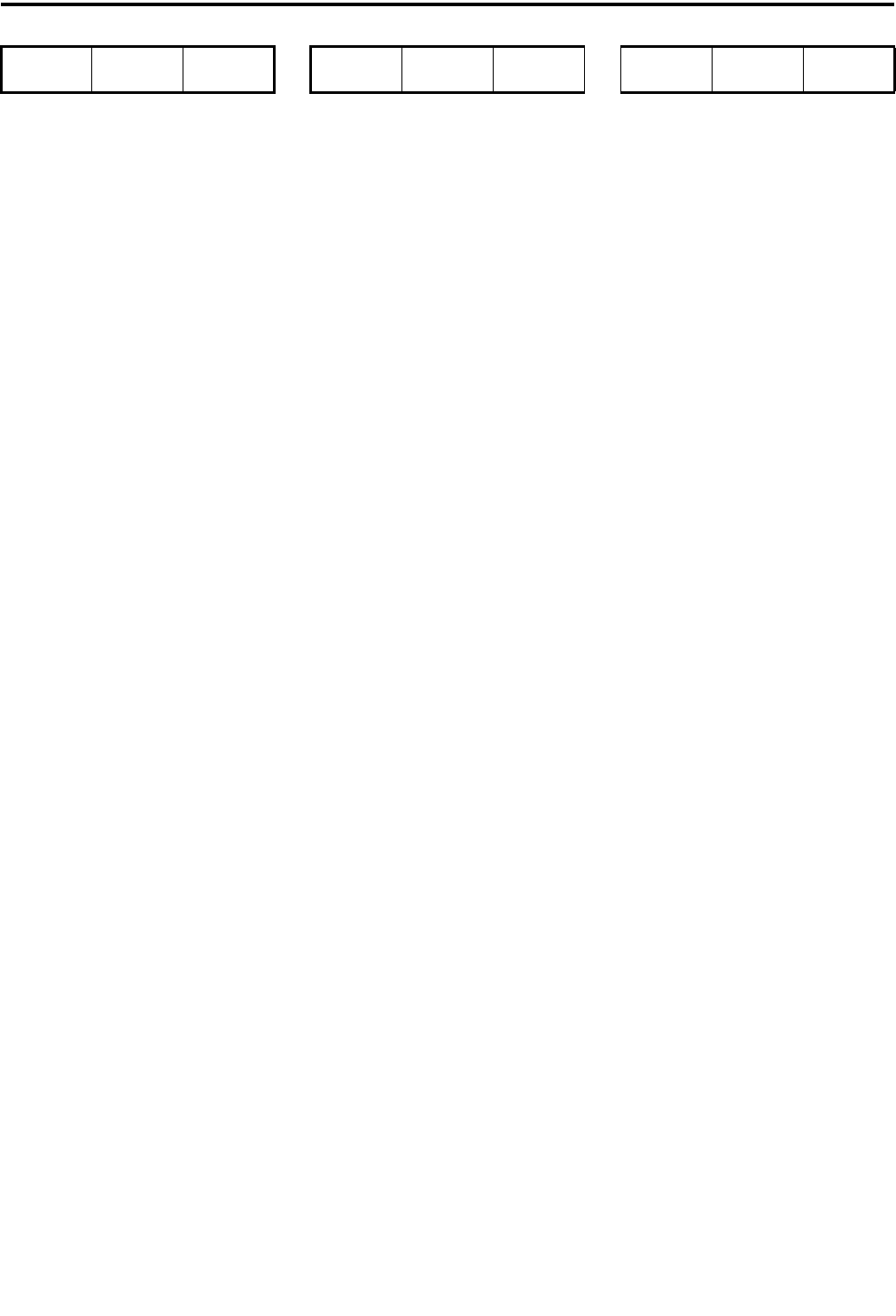
TRANSCEIVER PROGRAMMING
3-31 September 2001
Part No. 001-5100-001
145 854.6125 809.6125
146 854.6375 809.6375
147 854.6625 809.6625
148 854.6875 809.6875
149 854.7125 809.7125
150 854.7375 809.7375
151 854.7625 809.7625
152 854.7875 809.7875
153 854.8125 809.8125
154 854.8375 809.8375
155 854.8625 809.8625
156 854.8875 809.8875
157 854.9125 809.9125
158 854.9375 809.9375
159 854.9625 809.9625
160 854.9875 809.9875
161 855.0125 810.0125
162 855.0375 810.0375
163 855.0625 810.0625
164 855.0875 810.0875
165 855.1125 810.1125
166 855.1375 810.1375
167 855.1625 810.1625
168 855.1875 810.1875
169 855.2125 810.2125
170 855.2375 810.2375
171 855.2625 810.2625
172 855.2875 810.2875
173 855.3125 810.3125
174 855.3375 810.3375
175 855.3625 810.3625
176 855.3875 810.3875
177 855.4125 810.4125
178 855.4375 810.4375
179 855.4625 810.4625
180 855.4875 810.4875
181 855.5125 810.5125
182 855.5375 810.5375
183 855.5625 810.5625
184 855.5875 810.5875
185 855.6125 810.6125
186 855.6375 810.6375
187 855.6625 810.6625
188 855.6875 810.6875
189 855.7125 810.7125
190 855.7375 810.7375
191 855.7625 810.7625
192 855.7875 810.7875
193 855.8125 810.8125
194 855.8375 810.8375
195 855.8625 810.8625
196 855.8875 810.8875
197 855.9125 810.9125
198 855.9375 810.9375
199 855.9625 810.9625
200 855.9875 810.9875
201 856.0125 811.0125
202 856.0375 811.0375
203 856.0625 811.0625
204 856.0875 811.0875
205 856.1125 811.1125
206 856.1375 811.1375
207 856.1625 811.1625
208 856.1875 811.1875
209 856.2125 811.2125
210 856.2375 811.2375
211 856.2625 811.2625
212 856.2875 811.2875
213 856.3125 811.3125
214 856.3375 811.3375
215 856.3625 811.3625
216 856.3875 811.3875
217 856.4125 811.4125
218 856.4375 811.4375
219 856.4625 811.4625
220 856.4875 811.4875
221 856.5125 811.5125
222 856.5375 811.5375
223 856.5625 811.5625
224 856.5875 811.5875
225 856.6125 811.6125
226 856.6375 811.6375
227 856.6625 811.6625
228 856.6875 811.6875
229 856.7125 811.7125
230 856.7375 811.7375
231 856.7625 811.7625
232 856.7875 811.7875
233 856.8125 811.8125
234 856.8375 811.8375
235 856.8625 811.8625
236 856.8875 811.8875
237 856.9125 811.9125
238 856.9375 811.9375
239 856.9625 811.9625
240 856.9875 811.9875
241 857.0125 812.0125
242 857.0375 812.0375
243 857.0625 812.0625
244 857.0875 812.0875
245 857.1125 812.1125
246 857.1375 812.1375
247 857.1625 812.1625
248 857.1875 812.1875
249 857.2125 812.2125
250 857.2375 812.2375
251 857.2625 812.2625
252 857.2875 812.2875
253 857.3125 812.3125
254 857.3375 812.3375
255 857.3625 812.3625
256 857.3875 812.3875
257 857.4125 812.4125
258 857.4375 812.4375
259 857.4625 812.4625
260 857.4875 812.4875
261 857.5125 812.5125
262 857.5375 812.5375
263 857.5625 812.5625
264 857.5875 812.5875
265 857.6125 812.6125
266 857.6375 812.6375
267 857.6625 812.6625
268 857.6875 812.6875
269 857.7125 812.7125
270 857.7375 812.7375
271 857.7625 812.7625
272 857.7875 812.7875
273 857.8125 812.8125
274 857.8375 812.8375
275 857.8625 812.8625
276 857.8875 812.8875
277 857.9125 812.9125
278 857.9375 812.9375
279 857.9625 812.9625
280 857.9875 812.9875
281 858.0125 813.0125
282 858.0375 813.0375
283 858.0625 813.0625
284 858.0875 813.0875
285 858.1125 813.1125
286 858.1375 813.1375
287 858.1625 813.1625
288 858.1875 813.1875
FCC Chan.
No.
Mobile Rx
Freq.
Mobile Tx
Freq
FCC Chan.
No.
Mobile Rx
Freq.
Mobile Tx
Freq
FCC Chan.
No.
Mobile Rx
Freq
Mobile Tx
Freq
800 MHz Channels
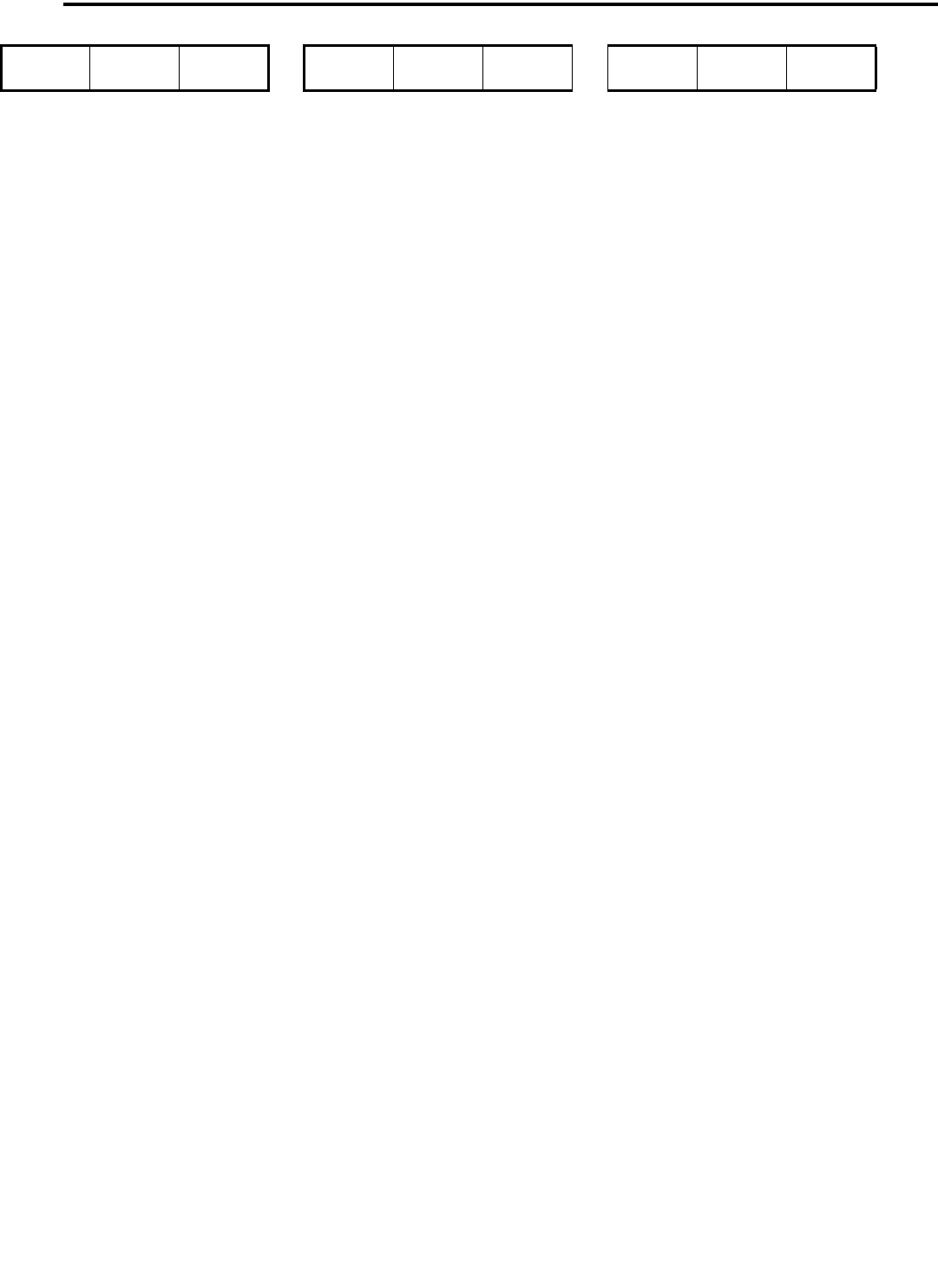
TRANSCEIVER PROGRAMMING
3-32 September 2001
Part No. 001-5100-001
289 858.2125 813.2125
290 858.2375 813.2375
291 858.2625 813.2625
292 858.2875 813.2875
293 858.3125 813.3125
294 858.3375 813.3375
295 858.3625 813.3625
296 858.3875 813.3875
297 858.4125 813.4125
298 858.4375 813.4375
299 858.4625 813.4625
300 858.4875 813.4875
301 858.5125 813.5125
302 858.5375 813.5375
303 858.5625 813.5625
304 858.5875 813.5875
305 858.6125 813.6125
306 858.6375 813.6375
307 858.6625 813.6625
308 858.6875 813.6875
309 858.7125 813.7125
310 858.7375 813.7375
311 858.7625 813.7625
312 858.7875 813.7875
313 858.8125 813.8125
314 858.8375 813.8375
315 858.8625 813.8625
316 858.8875 813.8875
317 858.9125 813.9125
318 858.9375 813.9375
319 858.9625 813.9625
320 858.9875 813.9875
321 859.0125 814.0125
322 859.0375 814.0375
323 859.0625 814.0625
324 859.0875 814.0875
325 859.1125 814.1125
326 859.1375 814.1375
327 859.1625 814.1625
328 859.1875 814.1875
329 859.2125 814.2125
330 859.2375 814.2375
331 859.2625 814.2625
332 859.2875 814.2875
333 859.3125 814.3125
334 859.3375 814.3375
335 859.3625 814.3625
336 859.3875 814.3875
337 859.4125 814.4125
338 859.4375 814.4375
339 859.4625 814.4625
340 859.4875 814.4875
341 859.5125 814.5125
342 859.5375 814.5375
343 859.5625 814.5625
344 859.5875 814.5875
345 859.6125 814.6125
346 859.6375 814.6375
347 859.6625 814.6625
348 859.6875 814.6875
349 859.7125 814.7125
350 859.7375 814.7375
351 859.7625 814.7625
352 859.7875 814.7875
353 859.8125 814.8125
354 859.8375 814.8375
355 859.8625 814.8625
356 859.8875 814.8875
357 859.9125 814.9125
358 859.9375 814.9375
359 859.9625 814.9625
360 859.9875 814.9875
361 860.0125 815.0125
362 860.0375 815.0375
363 860.0625 815.0625
364 860.0875 815.0875
365 860.1125 815.1125
366 860.1375 815.1375
367 860.1625 815.1625
368 860.1875 815.1875
369 860.2125 815.2125
370 860.2375 815.2375
371 860.2625 815.2625
372 860.2875 815.2875
373 860.3125 815.3125
374 860.3375 815.3375
375 860.3625 815.3625
376 860.3875 815.3875
377 860.4125 815.4125
378 860.4375 815.4375
379 860.4625 815.4625
380 860.4875 815.4875
381 860.5125 815.5125
382 860.5375 815.5375
383 860.5625 815.5625
384 860.5875 815.5875
385 860.6125 815.6125
386 860.6375 815.6375
387 860.6625 815.6625
388 860.6875 815.6875
389 860.7125 815.7125
390 860.7375 815.7375
391 860.7625 815.7625
392 860.7875 815.7875
393 860.8125 815.8125
394 860.8375 815.8375
395 860.8625 815.8625
396 860.8875 815.8875
397 860.9125 815.9125
398 860.9375 815.9375
399 860.9625 815.9625
400 860.9875 815.9875
401 861.0125 816.0125
402 861.0375 816.0375
403 861.0625 816.0625
404 861.0875 816.0875
405 861.1125 816.1125
406 861.1375 816.1375
407 861.1625 816.1625
408 861.1875 816.1875
409 861.2125 816.2125
410 861.2375 816.2375
411 861.2625 816.2625
412 861.2875 816.2875
413 861.3125 816.3125
414 861.3375 816.3375
415 861.3625 816.3625
416 861.3875 816.3875
417 861.4125 816.4125
418 861.4375 816.4375
419 861.4625 816.4625
420 861.4875 816.4875
421 861.5125 816.5125
422 861.5375 816.5375
423 861.5625 816.5625
424 861.5875 816.5875
425 861.6125 816.6125
426 861.6375 816.6375
427 861.6625 816.6625
428 861.6875 816.6875
429 861.7125 816.7125
430 861.7375 816.7375
431 861.7625 816.7625
432 861.7875 816.7875
FCC Chan.
No.
Mobile Rx
Freq.
Mobile Tx
Freq
FCC Chan.
No.
Mobile Rx
Freq.
Mobile Tx
Freq
FCC Chan.
No.
Mobile Rx
Freq
Mobile Tx
Freq
800 MHz Channels
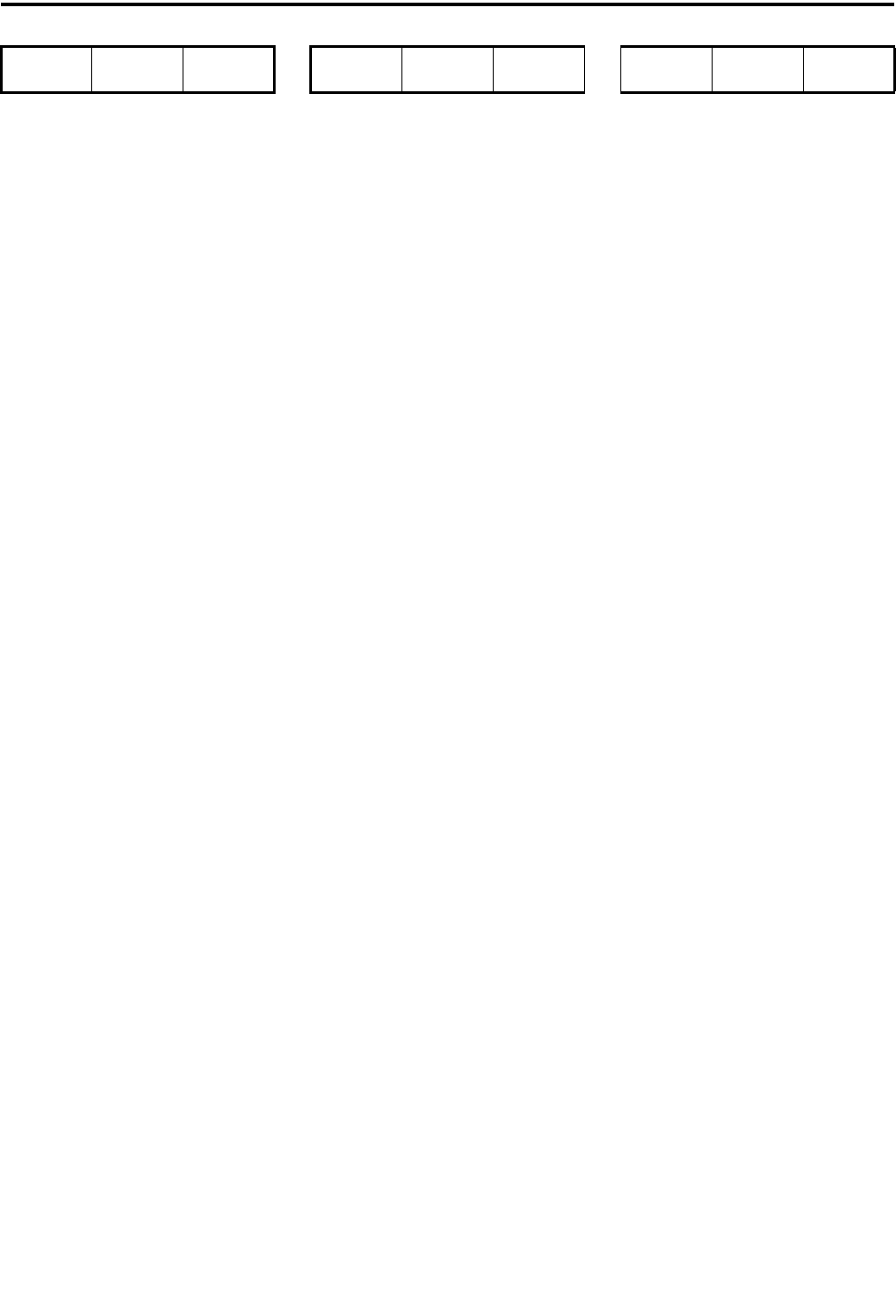
TRANSCEIVER PROGRAMMING
3-33 September 2001
Part No. 001-5100-001
433 861.8125 816.8125
434 861.8375 816.8375
435 861.8625 816.8625
436 861.8875 816.8875
437 861.9125 816.9125
438 861.9375 816.9375
439 861.9625 816.9625
440 861.9875 816.9875
441 862.0125 817.0125
442 862.0375 817.0375
443 862.0625 817.0625
444 862.0875 817.0875
445 862.1125 817.1125
446 862.1375 817.1375
447 862.1625 817.1625
448 862.1875 817.1875
449 862.2125 817.2125
450 862.2375 817.2375
451 862.2625 817.2625
452 862.2875 817.2875
453 862.3125 817.3125
454 862.3375 817.3375
455 862.3625 817.3625
456 862.3875 817.3875
457 862.4125 817.4125
458 862.4375 817.4375
459 862.4625 817.4625
460 862.4875 817.4875
461 862.5125 817.5125
462 862.5375 817.5375
463 862.5625 817.5625
464 862.5875 817.5875
465 862.6125 817.6125
466 862.6375 817.6375
467 862.6625 817.6625
468 862.6875 817.6875
469 862.7125 817.7125
470 862.7375 817.7375
471 862.7625 817.7625
472 862.7875 817.7875
473 862.8125 817.8125
474 862.8375 817.8375
475 862.8625 817.8625
476 862.8875 817.8875
477 862.9125 817.9125
478 862.9375 817.9375
479 862.9625 817.9625
480 862.9875 817.9875
481 863.0125 818.0125
482 863.0375 818.0375
483 863.0625 818.0625
484 863.0875 818.0875
485 863.1125 818.1125
486 863.1375 818.1375
487 863.1625 818.1625
488 863.1875 818.1875
489 863.2125 818.2125
490 863.2375 818.2375
491 863.2625 818.2625
492 863.2875 818.2875
493 863.3125 818.3125
494 863.3375 818.3375
495 863.3625 818.3625
496 863.3875 818.3875
497 863.4125 818.4125
498 863.4375 818.4375
499 863.4625 818.4625
500 863.4875 818.4875
501 863.5125 818.5125
502 863.5375 818.5375
503 863.5625 818.5625
504 863.5875 818.5875
505 863.6125 818.6125
506 863.6375 818.6375
507 863.6625 818.6625
508 863.6875 818.6875
509 863.7125 818.7125
510 863.7375 818.7375
511 863.7625 818.7625
512 863.7875 818.7875
513 863.8125 818.8125
514 863.8375 818.8375
515 863.8625 818.8625
516 863.8875 818.8875
517 863.9125 818.9125
518 863.9375 818.9375
519 863.9625 818.9625
520 863.9875 818.9875
521 864.0125 819.0125
522 864.0375 819.0375
523 864.0625 819.0625
524 864.0875 819.0875
525 864.1125 819.1125
526 864.1375 819.1375
527 864.1625 819.1625
528 864.1875 819.1875
529 864.2125 819.2125
530 864.2375 819.2375
531 864.2625 819.2625
532 864.2875 819.2875
533 864.3125 819.3125
534 864.3375 819.3375
535 864.3625 819.3625
536 864.3875 819.3875
537 864.4125 819.4125
538 864.4375 819.4375
539 864.4625 819.4625
540 864.4875 819.4875
541 864.5125 819.5125
542 864.5375 819.5375
543 864.5625 819.5625
544 864.5875 819.5875
545 864.6125 819.6125
546 864.6375 819.6375
547 864.6625 819.6625
548 864.6875 819.6875
549 864.7125 819.7125
550 864.7375 819.7375
551 864.7625 819.7625
552 864.7875 819.7875
553 864.8125 819.8125
554 864.8375 819.8375
555 864.8625 819.8625
556 864.8875 819.8875
557 864.9125 819.9125
558 864.9375 819.9375
559 864.9625 819.9625
560 864.9875 819.9875
561 865.0125 820.0125
562 865.0375 820.0375
563 865.0625 820.0625
564 865.0875 820.0875
565 865.1125 820.1125
566 865.1375 820.1375
567 865.1625 820.1625
568 865.1875 820.1875
569 865.2125 820.2125
570 865.2375 820.2375
571 865.2625 820.2625
572 865.2875 820.2875
573 865.3125 820.3125
574 865.3375 820.3375
575 865.3625 820.3625
576 865.3875 820.3875
FCC Chan.
No.
Mobile Rx
Freq.
Mobile Tx
Freq
FCC Chan.
No.
Mobile Rx
Freq.
Mobile Tx
Freq
FCC Chan.
No.
Mobile Rx
Freq
Mobile Tx
Freq
800 MHz Channels
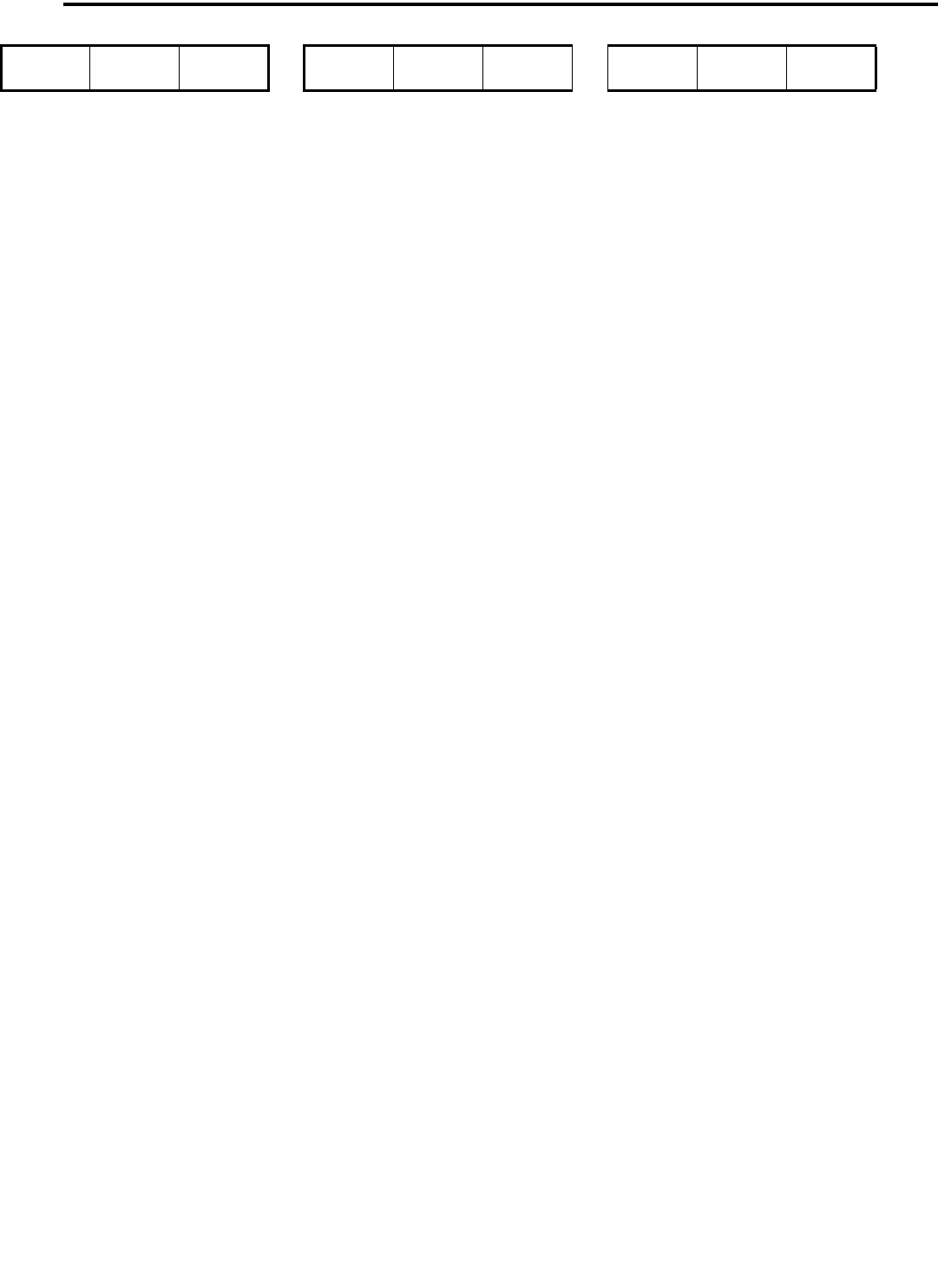
TRANSCEIVER PROGRAMMING
3-34 September 2001
Part No. 001-5100-001
577 865.4125 820.4125
578 865.4375 820.4375
579 865.4625 820.4625
580 865.4875 820.4875
581 865.5125 820.5125
582 865.5375 820.5375
583 865.5625 820.5625
584 865.5875 820.5875
585 865.6125 820.6125
586 865.6375 820.6375
587 865.6625 820.6625
588 865.6875 820.6875
589 865.7125 820.7125
590 865.7375 820.7375
591 865.7625 820.7625
592 865.7875 820.7875
593 865.8125 820.8125
594 865.8375 820.8375
595 865.8625 820.8625
596 865.8875 820.8875
597 865.9125 820.9125
598 865.9375 820.9375
599 865.9625 820.9625
600 865.9875 820.9875
- 866.0000 821.0000
601 866.0125 821.0125
- 866.0250 821.0250
602 866.0375 821.0375
603 866.0500 821.0500
604 866.0625 821.0625
605 866.0750 821.0750
606 866.0875 821.0875
607 866.1000 821.1000
608 866.1125 821.1125
609 866.1250 821.1250
610 866.1375 821.1375
611 866.1500 821.1500
612 866.1625 821.1625
613 866.1750 821.1750
614 866.1875 821.1875
615 866.2000 821.2000
616 866.2125 821.2125
617 866.2250 821.2250
618 866.2375 821.2375
619 866.2500 821.2500
620 866.2625 821.2625
621 866.2750 821.2750
622 866.2875 821.2875
623 866.3000 821.3000
624 866.3125 821.3125
625 866.3250 821.3250
626 866.3375 821.3375
627 866.3500 821.3500
628 866.3625 821.3625
629 866.3750 821.3750
630 866.3875 821.3875
631 866.4000 821.4000
632 866.4125 821.4125
633 866.4250 821.4250
634 866.4375 821.4375
635 866.4500 821.4500
636 866.4625 821.4625
637 866.4750 821.4750
638 866.4875 821.4875
- 866.5000 821.5000
639 866.5125 821.5125
- 866.5250 821.5250
640 866.5375 821.5375
641 866.5500 821.5500
642 866.5625 821.5625
643 866.5750 821.5750
644 866.5875 821.5875
645 866.6000 821.6000
646 866.6125 821.6125
647 866.6250 821.6250
648 866.6375 821.6375
649 866.6500 821.6500
650 866.6625 821.6625
651 866.6750 821.6750
652 866.6875 821.6875
653 866.7000 821.7000
654 866.7125 821.7125
655 866.7250 821.7250
656 866.7375 821.7375
657 866.7500 821.7500
658 866.7625 821.7625
659 866.7750 821.7750
660 866.7875 821.7875
661 866.8000 821.8000
662 866.8125 821.8125
663 866.8250 821.8250
664 866.8375 821.8375
665 866.8500 821.8500
666 866.8625 821.8625
667 866.8750 821.8750
668 866.8875 821.8875
669 866.9000 821.9000
670 866.9125 821.9125
671 866.9250 821.9250
672 866.9375 821.9375
673 866.9500 821.9500
674 866.9625 821.9625
675 866.9750 821.9750
676 866.9875 821.9875
- 867.0000 822.0000
677 867.0125 822.0125
- 867.0250 822.0250
678 867.0375 822.0375
679 867.0500 822.0500
680 867.0625 822.0625
681 867.0750 822.0750
682 867.0875 822.0875
683 867.1000 822.1000
684 867.1125 822.1125
685 867.1250 822.1250
686 867.1375 822.1375
687 867.1500 822.1500
688 867.1625 822.1625
689 867.1750 822.1750
690 867.1875 822.1875
691 867.2000 822.2000
692 867.2125 822.2125
693 867.2250 822.2250
694 867.2375 822.2375
695 867.2500 822.2500
696 867.2625 822.2625
697 867.2750 822.2750
698 867.2875 822.2875
699 867.3000 822.3000
700 867.3125 822.3125
701 867.3250 822.3250
702 867.3375 822.3375
703 867.3500 822.3500
704 867.3625 822.3625
705 867.3750 822.3750
706 867.3875 822.3875
707 867.4000 822.4000
708 867.4125 822.4125
709 867.4250 822.4250
710 867.4375 822.4375
711 867.4500 822.4500
712 867.4625 822.4625
713 867.4750 822.4750
714 867.4875 822.4875
FCC Chan.
No.
Mobile Rx
Freq.
Mobile Tx
Freq
FCC Chan.
No.
Mobile Rx
Freq.
Mobile Tx
Freq
FCC Chan.
No.
Mobile Rx
Freq
Mobile Tx
Freq
800 MHz Channels
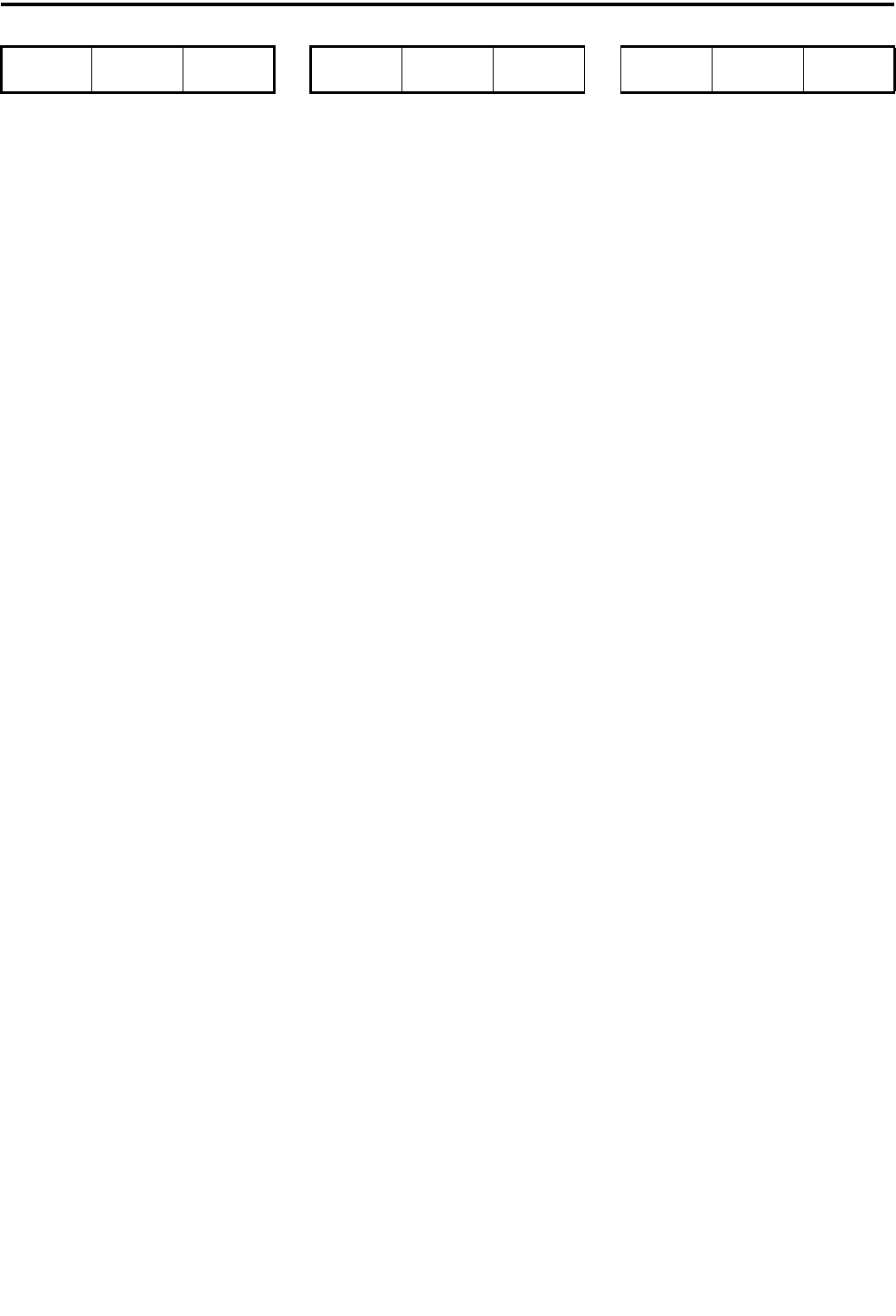
TRANSCEIVER PROGRAMMING
3-35 September 2001
Part No. 001-5100-001
- 867.5000 822.5000
715 867.5125 822.5125
- 867.5250 822.5250
716 867.5375 822.5375
717 867.5500 822.5500
718 867.5625 822.5625
719 867.5750 822.5750
720 867.5875 822.5875
721 867.6000 822.6000
722 867.6125 822.6125
723 867.6250 822.6250
724 867.6375 822.6375
725 867.6500 822.6500
726 867.6625 822.6625
727 867.6750 822.6750
728 867.6875 822.6875
729 867.7000 822.7000
730 867.7125 822.7125
731 867.7250 822.7250
732 867.7375 822.7375
733 867.7500 822.7500
734 867.7625 822.7625
735 867.7750 822.7750
736 867.7875 822.7875
737 867.8000 822.8000
738 867.8125 822.8125
739 867.8250 822.8250
740 867.8375 822.8375
741 867.8500 822.8500
742 867.8625 822.8625
743 867.8750 822.8750
744 867.8875 822.8875
745 867.9000 822.9000
746 867.9125 822.9125
747 867.9250 822.9250
748 867.9375 822.9375
749 867.9500 822.9500
750 867.9625 822.9625
751 867.9750 822.9750
752 867.9875 822.9875
- 868.0000 823.0000
753 868.0125 823.0125
- 868.0250 823.0250
754 868.0375 823.0375
755 868.0500 823.0500
756 868.0625 823.0625
757 868.0750 823.0750
758 868.0875 823.0875
759 868.1000 823.1000
760 868.1125 823.1125
761 868.1250 823.1250
762 868.1375 823.1375
763 868.1500 823.1500
764 868.1625 823.1625
765 868.1750 823.1750
766 868.1875 823.1875
767 868.2000 823.2000
768 868.2125 823.2125
769 868.2250 823.2250
770 868.2375 823.2375
771 868.2500 823.2500
772 868.2625 823.2625
773 868.2750 823.2750
774 868.2875 823.2875
775 868.3000 823.3000
776 868.3125 823.3125
777 868.3250 823.3250
778 868.3375 823.3375
779 868.3500 823.3500
780 868.3625 823.3625
781 868.3750 823.3750
782 868.3875 823.3875
783 868.4000 823.4000
784 868.4125 823.4125
785 868.4250 823.4250
786 868.4375 823.4375
787 868.4500 823.4500
788 868.4625 823.4625
789 868.4750 823.4750
790 868.4875 823.4875
791 868.5000 823.5000
792 868.5125 823.5125
793 868.5250 823.5250
794 868.5375 823.5375
795 868.5500 823.5500
796 868.5625 823.5625
797 868.5750 823.5750
798 868.5875 823.5875
799 868.6000 823.6000
800 868.6125 823.6125
801 868.6250 823.6250
802 868.6375 823.6375
803 868.6500 823.6500
804 868.6625 823.6625
805 868.6750 823.6750
806 868.6875 823.6875
807 868.7000 823.7000
808 868.7125 823.7125
809 868.7250 823.7250
810 868.7375 823.7375
811 868.7500 823.7500
812 868.7625 823.7625
813 868.7750 823.7750
814 868.7875 823.7875
815 868.8000 823.8000
816 868.8125 823.8125
817 868.8250 823.8250
818 868.8375 823.8375
819 868.8500 823.8500
820 868.8625 823.8625
821 868.8750 823.8750
822 868.8875 823.8875
823 868.9000 823.9000
824 868.9125 823.9125
825 868.9250 823.9250
826 868.9375 823.9375
827 868.9500 823.9500
828 868.9625 823.9625
829 868.9750 823.9750
830 868.9875 823.9875
- 869.0000 824.0000
- 869.0125 824.0125
- 869.0250 824.0250
- 869.0375 824.0375
- 869.0500 824.0500
- 869.0625 824.0625
- 869.0750 824.0750
- 869.0875 824.0875
- 869.1000 824.1000
- 869.1125 824.1125
- 869.1250 824.1250
- 869.1375 824.1375
- 869.1500 824.1500
- 869.1625 824.1625
- 869.1750 824.1750
- 869.1875 824.1875
- 869.2000 824.2000
- 869.2125 824.2125
- 869.2250 824.2250
- 869.2375 824.2375
- 869.2500 824.2500
- 869.2625 824.2625
- 869.2750 824.2750
- 869.2875 824.2875
FCC Chan.
No.
Mobile Rx
Freq.
Mobile Tx
Freq
FCC Chan.
No.
Mobile Rx
Freq.
Mobile Tx
Freq
FCC Chan.
No.
Mobile Rx
Freq
Mobile Tx
Freq
800 MHz Channels
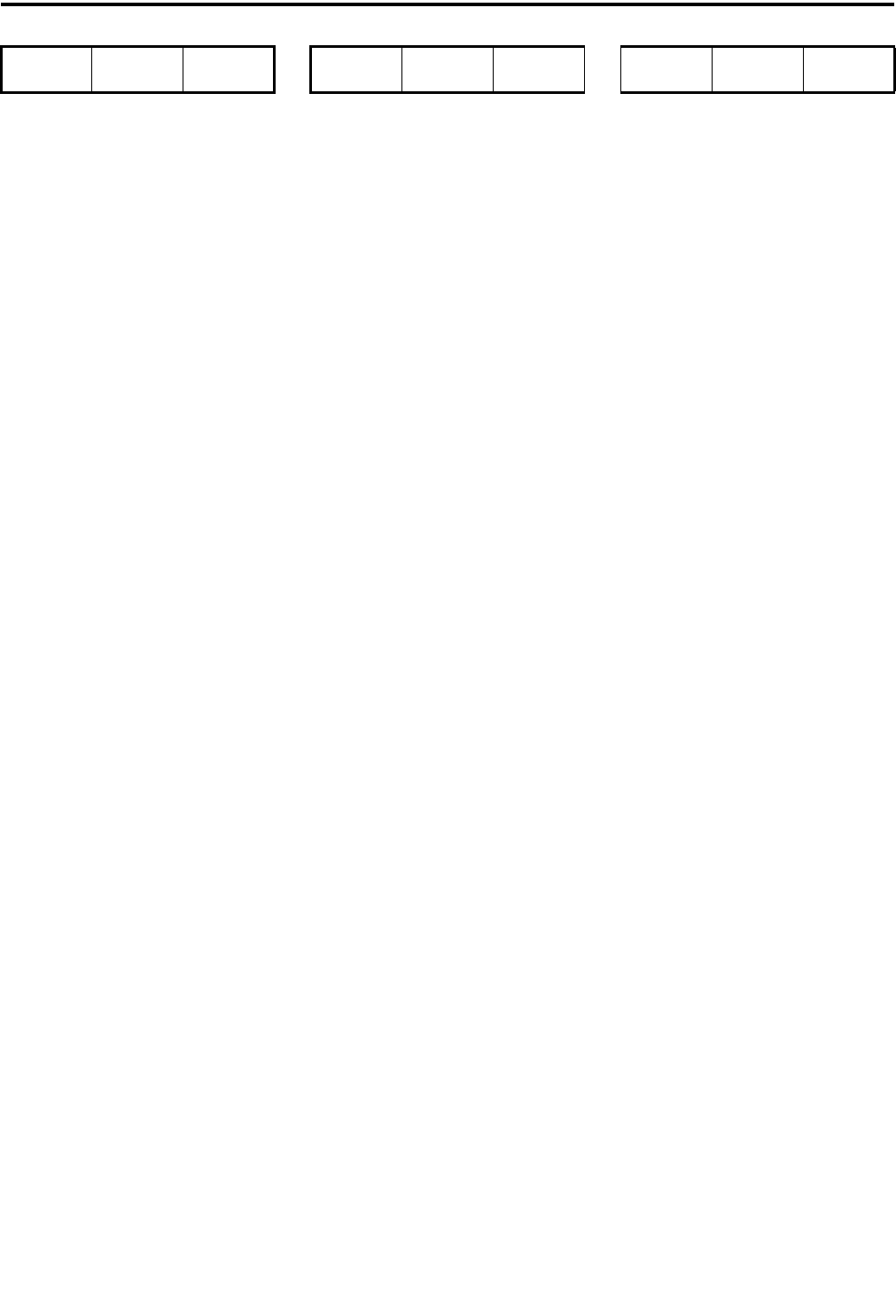
TRANSCEIVER PROGRAMMING
3-36 September 2001
Part No. 001-5100-001
- 869.3000 824.3000
- 869.3125 824.3125
- 869.3250 824.3250
- 869.3375 824.3375
- 869.3500 824.3500
- 869.3625 824.3625
- 869.3750 824.3750
- 869.3875 824.3875
- 869.4000 824.4000
- 869.4125 824.4125
- 869.4250 824.4250
- 869.4375 824.4375
- 869.4500 824.4500
- 869.4625 824.4625
- 869.4750 824.4750
- 869.4875 824.4875
- 869.5000 824.5000
- 869.5125 824.5125
- 869.5250 824.5250
- 869.5375 824.5375
- 869.5500 824.5500
- 869.5625 824.5625
- 869.5750 824.5750
- 869.5875 824.5875
- 869.6000 824.6000
- 869.6125 824.6125
- 869.6250 824.6250
- 869.6375 824.6375
- 869.6500 824.6500
- 869.6625 824.6625
- 869.6750 824.6750
- 869.6875 824.6875
- 869.7000 824.7000
- 869.7125 824.7125
- 869.7250 824.7250
- 869.7375 824.7375
- 869.7500 824.7500
- 869.7625 824.7625
- 869.7750 824.7750
- 869.7875 824.7875
- 869.8000 824.8000
- 869.8125 824.8125
- 869.8250 824.8250
- 869.8375 824.8375
- 869.8500 824.8500
- 869.8625 824.8625
- 869.8750 824.8750
- 869.8875 824.8875
- 869.9000 824.9000
- 869.9125 824.9125
- 869.9250 824.9250
- 869.9375 824.9375
- 869.9500 824.9500
- 869.9625 824.9625
- 869.9750 824.9750
- 869.9875 824.9875
FCC Chan.
No.
Mobile Rx
Freq.
Mobile Tx
Freq
FCC Chan.
No.
Mobile Rx
Freq.
Mobile Tx
Freq
FCC Chan.
No.
Mobile Rx
Freq
Mobile Tx
Freq
800 MHz Channels

4-1 September 2001
Part No. 001-5100-001
CIRCUIT DESCRIPTION
SECTION 4 CIRCUIT DESCRIPTION
4.1 GENERAL OVERVIEW
4.1.1 INTRODUCTION
The E.F Johnson 5100 series digital portable
radio is a microcontroller-based radio that uses a
Digital Signal Processor (DSP) to provide the
following modes of operation:
Narrowband Analog - FM modulation with a
maximum deviation of 2.5 kHz. This mode is usually
used in systems where the channel spacing is 12.5
kHz. Call Guard (CTCSS or DCS) subaudible squelch
signaling can be used in this mode.
Wideband Analog - FM modulation with a maximum
deviation of 5 kHz. This mode is usually used in
systems where the channel spacing is 25 kHz or 30
kHz. Call Guard (CTCSS or DCS) subaudible squelch
signaling can be used in this mode.
Project 25 Digital - The voice is digitized, error
corrected, optionally encrypted and transmitted using
C4FM modulation according to the Project 25 stan-
dard. This mode can be used in channel spacings of
12.5 kHz.
The DSP processes the received signals and
generates the appropriate output signals. The micro-
controller controls the hardware and provides an inter-
face between hardware and DSP.
PC Boards
This radio contains the following PC boards:
•RF Board
•Digital Board
•Keypad Board
•Four flex circuits that provide interconnection and
support for the volume, on/off, and LED controls.
•Encryption board (optional)
The Keypad Board provides the input/output
interface for the user. It accepts input from the keypad
and the various control knobs and sends the appro-
priate signals to the DSP on the Digital Board and to
the RF Board for proper configuration. It provides the
dual display information to inform the user of the
status of the radio. It also performs all RS-232 commu-
nications between the radio and remote computer
stations for the purposes of radio programming, tuning,
encryption key loading and software downloading.
4.1.2 ANALOG MODE
Receive Mode
The signal is routed from the antenna connector
to the RF Board where it is filtered, amplified, and
mixed with the first local oscillator frequency gener-
ated by the synthesizer. The resulting IF signal is also
filtered and amplified and sent to the ABACUS chip.
The signal is then mixed with the second local
oscillator frequency to create a second IF signal of 450
kHz. The second IF signal is then sampled at 14.4
Msps and downconverted to baseband. The baseband
signal is then decimated to a lower sample rate that is
selectable at 20 kHz. This signal is then routed via a
serial interface using a differential current output to
the ADSIC chip on the Digital Board.
On the Digital Board the ADSIC digitally filters
the input signal, performs frequency discrimination to
obtain the message signal and then routes the message
signal to the DSP. The DSP first performs a carrier-
detection squelch function on the radio. If a signal is
determined to be present, the audio portion of the
signal is resampled to an 8 kHz rate and then filtered
appropriately. The filtered signal is then routed back to
a D/A in the ADSIC to produce an analog signal for
output to the audio power amplifier (PA) and then the
speaker. Any detected signaling information is
decoded and the resulting information is sent to the
microcontroller.
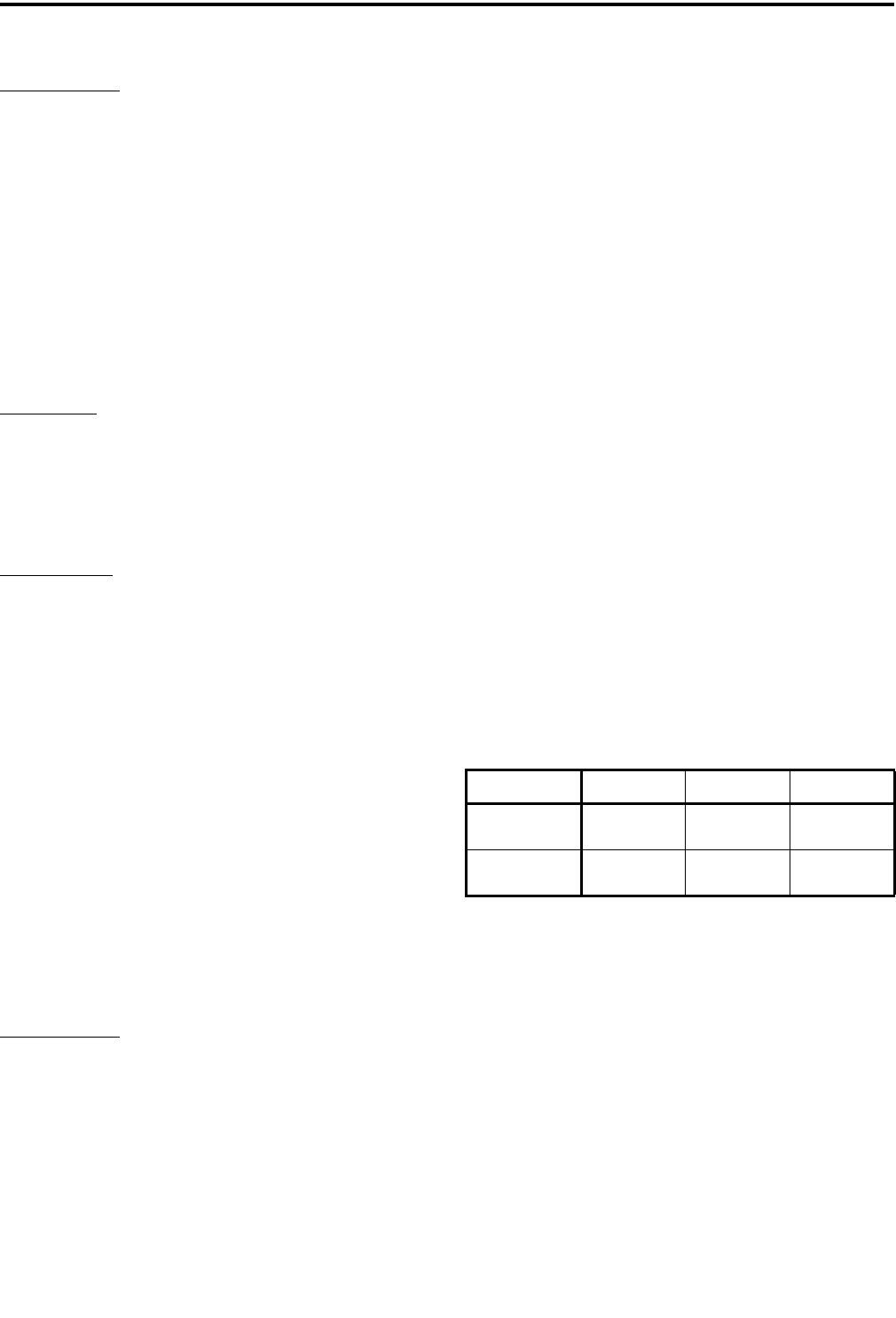
CIRCUIT DESCRIPTION
4-2 September 2001
Part No. 001-5100-001
Transmit Mode
The signal from the microphone is amplified by
the audio PA and is then routed to the ADSIC chip
where it is first digitized at a 16 ksps rate and then sent
to the DSP. The DSP performs the required filtering,
adds the desired signaling, converts the sample rate to
48 ksps and then sends the resulting signal back to a
D/A in the ADSIC to produce the analog modulation
signal for the VCO. The modulated VCO signal is then
sent to the RF PA for transmission.
4.1.3 PROJECT 25 DIGITAL MODE
Introduction
In Project 25 Digital Mode, the carrier is modu-
lated with 4 discrete deviation levels. These levels are
± 600 Hz and ± 1800 Hz. Digitized voice is created
using an IMBE™ vocoder.
Receive Mode
The signal is processed in the same way as an
analog mode transmission until after the squelch func-
tion is performed. If a signal is detected to be present,
the DSP resamples the signal from 20 kHz to 24 kHz.
This is done so that the sample rate is an integer
multiple (5x) of the data rate of the digital modulation
which is 4800 symbols/sec (9600 bits/sec).
The resampled signal is then processed by a
demodulator routine to extract the digital information.
The resulting bit stream (9600 bps) is sent to a routine
that performs unframing, error-correction, and voice
decoding. The result of these operations is a recon-
structed voice signal sampled at 8 kHz. The sampled
voice signal is sent to a D/A in the ADSIC to produce
an analog signal for output to the audio power ampli-
fier and speaker.
Transmit Mode
The microphone signal is processed as in the
analog mode until it reaches the DSP. At this point the
audio signal is processed by a voice encoding routine
to digitize the information. The resulting samples are
then converted to a bit stream that is placed into the
proper framing structure and error protected. The
resulting bit stream has a bit rate of 9600 Hz.
This bit stream in then encoded, two bits at a
time, into a digital level corresponding to one of the
four allowable frequency deviations. This produces
16-bit symbols with a rate of 4800 Hz. The symbols
are resampled to a rate of 48 kHz and filtered to
comply with channel bandwidth requirements. The
filtered signal is then sent to a D/A in the ADSIC to
produce the analog modulation signal for the VCO.
The modulated VCO signal is then mixed up to the
final transmit frequency and then sent to the RF PA for
transmission.
4.1.4 RF BOARD
NOTE: The RF Board is not field serviceable. It must
be replaced as a unit with a new board.
The receiver front end consists of a preselector,
RF amplifier, second preselector, and mixer. Both
preselectors on the VHF and UHF board are varactor-
tuned, two-pole filters controlled by the microcon-
troller unit through the D/A IC. The 800 MHz board
uses stripline technology for the preselector. The RF
amplifier is a dual-gate gallium-arsenide IC. The
mixer is a double-balanced, transformer-coupled
active mixer. Injection is provided by the VCO
through an injection filter. See Table 4-1 for local
oscillator (LO) and first IF information.
The frequency generation function is performed
by three ICs and associated circuitry. The reference
oscillator provides a frequency standard to the synthe-
sizer/prescaler IC which controls the VCO IC. The
VCO IC actually generates the first LO and transmit
injection signals and buffers them to the required
power level. The synthesizer/prescaler circuit module
incorporates frequency division and comparison
circuitry to keep the VCO signals stable. The synthe-
sizer/prescaler IC is controlled by the microcontroller
through a serial bus. Most of the synthesizer circuitry
is enclosed in rigid metal on the RF Board to reduce
microphonic effects.
Table 4-1 LO and First IF Frequencies
VHF UHF 800 MHz
LO Frequency
range
181.15 -
219.15 MHz
329.65 -
446.65 MHz
776.65 -
796.65 MHz
First IF
Frequency
45.15 MHz 73.35 MHz 73.35 MHz
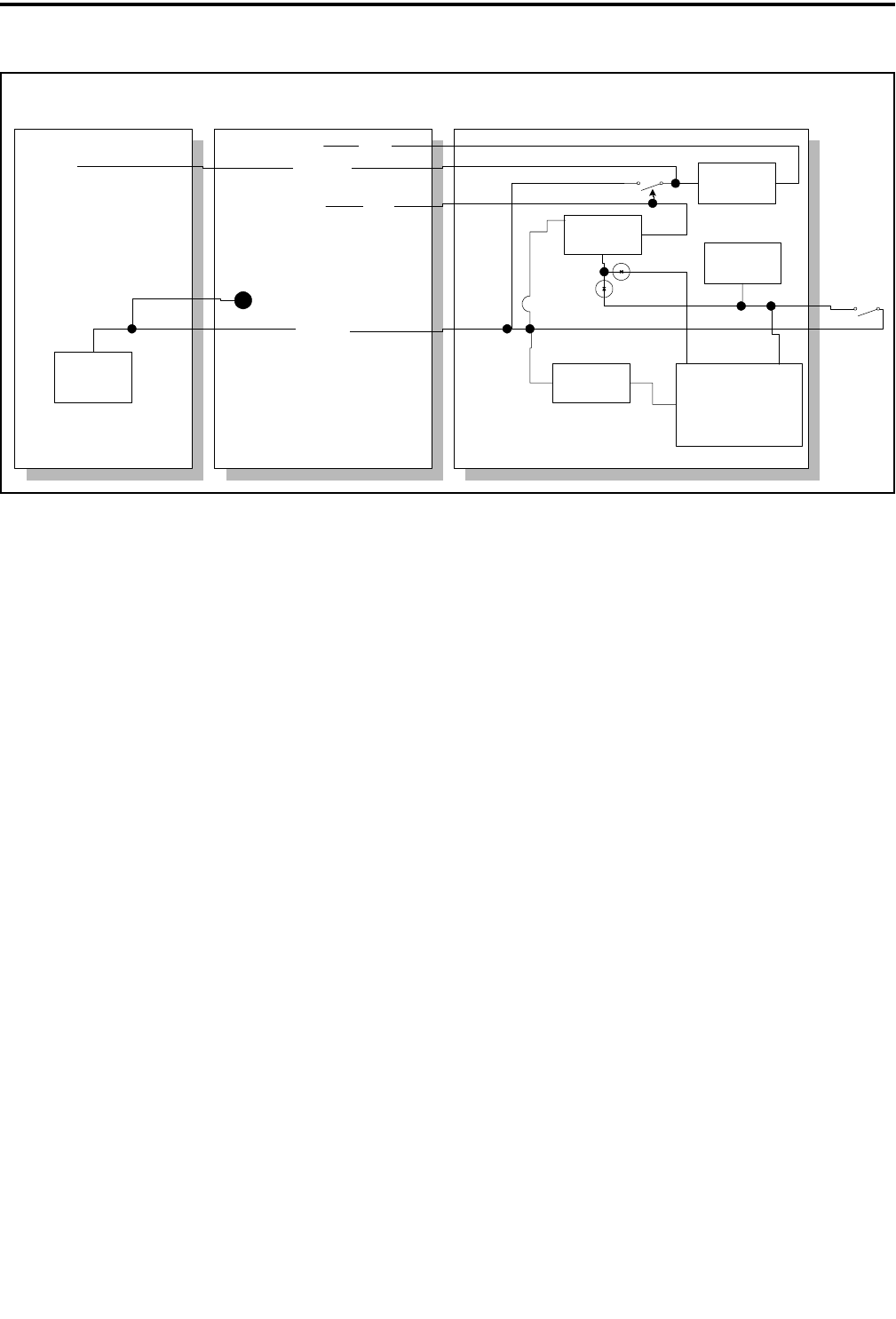
CIRCUIT DESCRIPTION
4-3 September 2001
Part No. 001-5100-001
Figure 4-1 Power Supply Diagram
Low Power
Detector
Audio PA
5V Digital
DC/DC
5V Analog
Regulator
Controller
Unswitched
B+
Power
Amplifier
5V
Analog
5 V
Digital
Battery Probe
Transceiver Board Keypad Board
Digital Board
on/off
Switched RF
B+
The receiver back end consists of a two-pole
crystal filter, IF amplifier, a second two-pole crystal
filter, and the ABACUS digital back-end IC. The two
pole filters are wide enough to accommodate 5 kHz
modulation. Final IF filtering is done digitally in the
ADSIC.
The ABACUS digital back-end chip consists of
an amplifier, second mixer, IF analog-to-digital
converter, a baseband down-converter, and a 2.4 MHz
synthesis circuit to provide a clock to the ADSIC on
the Digital Board. The second LO is generated by
discrete components external to the ABACUS. The
output of the ABACUS is a digital bit stream that is
current driven on a differential pair to reduce noise
generation.
The transmitter consists of an RF power amplifier
IC that amplifies an injection signal from the VCO.
Transmit power is controlled by two custom ICs that
monitor the output of a directional coupler and adjust
the power amplifier control voltages correspondingly.
The signal passes through a Rx/Tx switch that uses
PIN diodes to automatically provide an appropriate
interface to transmit or receive signals.
4.1.5 DIGITAL BOARD
The Digital Board contains the ADSIC, DSP
(TMS320C50), static RAM, FLASH memory, and a
programmable logic IC. The RF Board and Keypad/
Display Board are connected to the Digital Board. The
ADSIC performs the Frequency Discrimination and
receiver filtering functions. It also performs analog-to-
digital (A/D) and digital-to-analog (D/A) conversion.
The DSP performs demodulation and modulation,
voice encoding and decoding, audio filtering, and
squelch signaling. The software for the radio is stored
in FLASH memory that is loaded in to static RAM at
turn-on. The programmable logic IC controls which
device (Flash, SRAM, or UART) is connected to the
DSP address and data bus.
4.1.6 KEYPAD/DISPLAY BOARD
The Keypad Board contains the microcontroller
(HC08), audio circuits, front LCD display assembly,
display driver, and 5V analog and 5V digital regula-
tors. All interfaces to the side connector and the
switches are on this board. The microcontroller deter-
mines transmit/receive frequencies, power levels, and
display content. It communicates with the DSP via a
serial interface.

CIRCUIT DESCRIPTION
4-4 September 2001
Part No. 001-5100-001
4.2 POWER SUPPLY
4.2.1 GENERAL
The radio is typically powered by a battery which
is fastened at the back of the radio. The electrical
contact between the battery and the radio occurs on
probes located on the Digital board (see Figure 4-1).
However the positive battery voltage (UNSWB+) is
directly routed through a small flex circuit (Power
Flex) to contacts located on the bottom of the RF
Board.
The UNSWB+ signal is then routed to the RF
power amplifier module and ALC IC on the RF Board.
It also passes through a fuse and is then routed to the
Digital Board.
The UNSWB+ signal passes through the Digital
Board without being used and is transferred to the
Keypad Board. On the keypad board, the UNSWB+
signal is routed as follows:
•Input of the 5V digital regulator
•Electronic switch which controls the input of the 5V
analog regulator and the “switched RF B+”
•“On/off switch” located on the top of the radio
•Low voltage detector
•Audio amplifier power FET
4.2.2 POWER ON OPERATION
When the user turns the radio on using the top
panel “on/off switch”, the following sequence of
events occur:
1. Power is applied to the shutdown pin of the 5V
digital regulator.
2. The 5-volt digital supply is created.
3. The appearance of the 5V digital supply turns on the
electronic switch which applies the battery voltage
to the “Switched RF B+” line and to the input of the
5V analog regulator.
4. The 5-volt analog supply is created.
5. If the battery voltage is high enough, the low voltage
detector output goes high.
6. The controller sets the control line to the shutdown
pin of the DC/DC converter to a high level.
7. The controller sets the radio in an operational mode.
4.2.3 POWER OFF OPERATION
When the user turns the radio off using the top
panel “on/off switch”, the following sequence of
events occur:
1. The “on/off switch” opens.
2. Power is removed from the shutdown pin of the 5V
DC/DC converter.
3. The controller detects that the power is off through
the pin connected to Switched B+.
4. The controller performs all required save
operations.
5. The controller resets the control line to the shut-
down pin of the DC/DC converter.
6. The 5-volt Digital source disappears.
7. The electronic switch opens.
8. The switched RF B+ and 5V analog sources
disappear.
4.2.4 LOW VOLTAGE DETECT
Low battery voltage is detected by a comparator
chip. When a low voltage condition is detected (less
than 6.3V), the following actions occur:
1. The low voltage detector output goes low which
alerts the controller.
2. The controller prevents any action which could have
a damaging effect (like writing in flash memory).
3. The controller releases its control of the shutdown
pin of the DC/DC converter.
4. The transmitter switches to the low power mode.
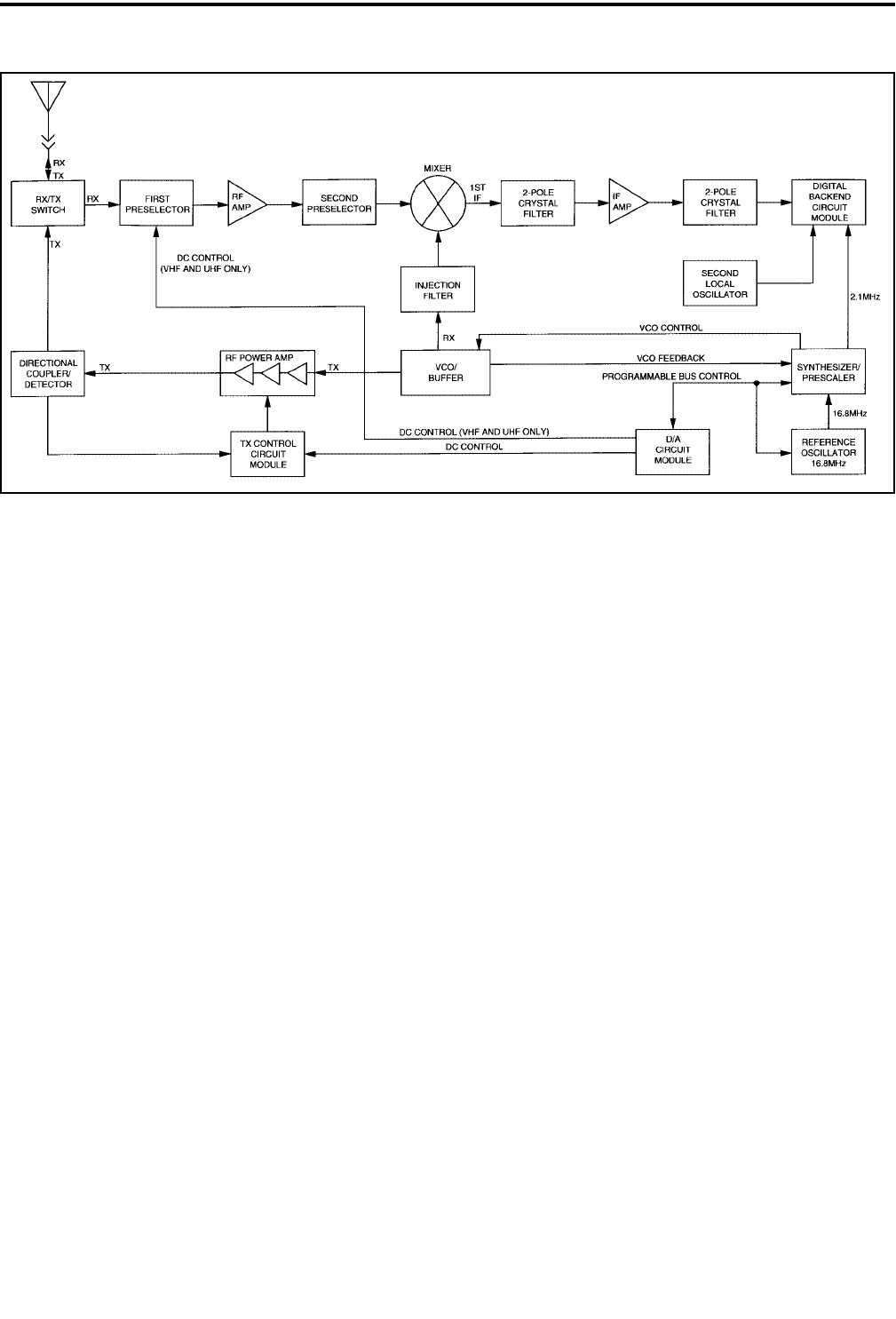
CIRCUIT DESCRIPTION
4-5 September 2001
Part No. 001-5100-001
Figure 4-2 RF Board Block Diagram
5. When the voltage gets really low, the 5 volt DC/DC
converter automatically shuts down.
6. The 5-volt analog and switched RF B+ sources turn
off.
4.3 RF BOARD CIRCUIT DESCRIPTION
4.3.1 FREQUENCY GENERATION UNIT
The Frequency Generation Unit (FGU) consists
of these three major sections: (1) high stability refer-
ence oscillator, (2) fractional-N synthesizer, and (3)
VCO buffer. A 5-volt regulator supplies power to the
FGU. The regulator output voltage is filtered and then
distributed to the transmit and receive VCOs and the
VCO buffer IC. The mixer LO injection signal and
transmit frequency are generated by the receive VCO
and transmit VCO, respectively. The receive VCO
uses an external active device, and the transmit VCO
active device is a transistor inside the VCO buffer.
The receive VCO is a Colpitts-type oscillator.
The receive VCO signal is received by the VCO buffer
where it is amplified by a buffer inside the IC. The
amplified signal is routed through a low-pass filter and
injected as the first LO signal into the mixer. In the
VCO buffer, the receive VCO signal is also routed to
an internal prescaler buffer. The buffered output is
applied to a low-pass filter. After filtering, the signal is
routed to a prescaler divider in the synthesizer.
The divide ratios for the prescaler circuits are
determined from information stored in an EEPROM.
The microprocessor extracts data for the division ratio
as determined by the position of the channel-select
switch and routes the signal to a comparator in the
synthesizer. A 16.8 MHz reference oscillator applies
the 16.8 MHz signal to the synthesizer. The oscillator
signal is divided into one of three pre-determined
frequencies. A time-based algorithm is used to
generate the fractional-N ratio.
If the two frequencies in the synthesizer’s
comparator differ, an error voltage is produced. The
phase detector error voltage is applied to the loop
filter. The filtered voltage alters the VCO frequency
until the correct frequency is synthesized.
In the transmit mode, the modulation of the
carrier is achieved by using a two-port modulation
technique. The modulation for low frequency tones,
such as CTCSS and DCS, is achieved by injecting the
tones into the A/D section of the fractional-N divider,
generating the required deviation. Modulation of the
high frequency audio signals is achieved by modu-
lating the varactor through a frequency compensation
network.
RF BOARD

CIRCUIT DESCRIPTION
4-6 September 2001
Part No. 001-5100-001
The transmit VCO signal is amplified by an inter-
nal buffer, routed through a low-pass filter, and then
sent to the transmit power amplifier module. The refer-
ence oscillator supplies a 16.8 MHz clock to the synthe-
sizer where it is divided down to a 2.1 MHz clock. This
divided down clock is fed to the ABACUS IC.
4.3.2 ANTENNA SWITCH
A pair of diodes is used to electronically steer the
RF signal between the receiver and transmitter. In the
transmit mode, RF is routed through a transmit switch-
ing diode and sent to the antenna. In receive mode, RF
is received from the antenna, routed through a receive
switching diode and applied to the RF amplifier.
4.3.3 RECEIVER FRONT END
The RF signal from the antenna is sent through a
bandpass filter. The bandpass filter is electronically
tuned by the microcontroller via the D/A IC by
applying a control voltage to the varactor diodes in the
filter. The D/A output range is extended through the
use of a current mirror. Wideband operation of the
filter is achieved by retuning the bandpass filter across
the band.
The output of the bandpass filter is applied to a
wideband amplifier. After being amplified by the RF
amplifier, the RF signal is further filtered by a second
broadband, fixed tuned, bandpass filter to improve
spurious rejection.
The filtered RF signal is routed via a broadband
50 Ω transformer to the input of a broadband mixer/
buffer. The mixer uses GaAs FETs in a double-
balanced Gilbert Cell configuration. The RF signal is
mixed with a first LO signal of about –10 dBm
supplied by the FGU. Mixing of the RF and the first
LO results in an output signal which is the first IF
frequency according to Figure 4-1. The first IF signal
output is routed through a transformer and impedance
matching components and is then applied to a two-
pole crystal filter. The 2-pole crystal filter removes
unwanted mixer products.
4.3.4 RECEIVER BACK END
The output of the crystal filter is matched to the
input of the IF buffer amplifier transistor. The output
of the IF amplifier is applied to a second crystal filter
through a matching circuit. This filter supplies further
attenuation at the IF sidebands to increase radio
selectivity.
In the ABACUS IC the first IF frequency is
amplified and then downconverted to 450 KHz, the
second IF frequency. At this point, the analog signal is
converted into two digital bit streams via a sigma-delta
A/D converter. The bit streams are then digitally
filtered and mixed down to baseband and filtered
again. The differential output data stream is then sent
to the ADSIC on the Digital Board where it is
processed to produce the recovered audio.
The ABACUS IC is electronically program-
mable, and the amount of filtering, which is dependent
on the radio channel spacing and signal type, is
controlled by the microcontroller. Additional filtering,
which used to be provided externally by a conven-
tional ceramic filter, is replaced by internal digital
filters in the ABACUS IC. The ABACUS IC contains
a feedback AGC circuit to expand the dynamic range
of the sigma-delta converter. The differential output
data contains the quadrature (I and Q) information in
16-bit words, the AGC information in a 9-bit word,
imbedded word sync information and fill bits depen-
dent on sampling speed. A fractional-N synthesizer is
also incorporated on the ABACUS IC for 2nd LO
generation.
The 2nd LO/VCO is a Colpitts oscillator. The
VCO has a varactor diode to adjust the VCO
frequency. The control signal for the varactor is
derived from a loop filter.
4.3.5 TRANSMITTER
The transmitter consists of three major sections:
Harmonic Filter, RF Power Amplifier, and the ALC
(Automatic Level Control) circuit.
The RF signal from the PA module is routed
through a coupler, then through the harmonic filter,
then to the antenna switch. The RF power amplifier
module is a wide-band multi-stage amplifier. The
nominal input and output impedance of the power
amplifier is 50 Ω. The DC bias for the RF power
amplifier is controlled by a switching transistor. The
microcontroller uses the D/A IC to produce a ready
RF BOARD (CONT’D)

CIRCUIT DESCRIPTION
4-7 September 2001
Part No. 001-5100-001
signal for the transmit ALC IC. The synthesizer sends
a LOC signal to the transmit ALC IC. When both the
ready signal and LOC signal are available to the
transmit ALC IC, the switching transistor for the RF
power amplifier is turned on.
A coupler module samples the forward power and
the reverse power of the PA output voltage. Reverse
power is present when there is other than 50 Ω imped-
ance at the antenna port. Sampling is achieved by
coupling some of the forward and/or reverse power for
rectification and summing. The resulting DC voltage
is then applied to the transmit ALC IC as an RF
strength indicator.
The transmit ALC circuit is the core of the power
control loop. Circuits in the transmit ALC module
compare the RF strength indicator to a reference value
and generate a bias signal that is applied to the base of
a transistor. This transistor varies the DC control
voltage applied to the RF PA controlling the RF
power.
4.4 DIGITAL BOARD
4.4.1 INTRODUCTION
The Digital Signal Processing (DSP) functions
are performed by the DSP chip (U12) and the ADSIC
(U3) with the support of FLASH (U2) and SRAM
(U5, U6) memory devices. Functions previously
performed in hardware like filtering and limiting are
performed by software running in the DSP chip. The
digital board connects with the Keypad Board via J4
and with the RF board via J1.
4.4.2 DIGITAL SIGNAL PROCESSING
OVERVIEW
The DSP section consists of a DSP chip (U12),
the ADSIC (U3), two 128K x 8-bit Static RAM chips
(U5, U6), one 512K x 16-bit FLASH ROM memory
chip (U2), a UART chip (U7), a programmable logic
IC (U1), and two glue-logic chips (U4, U9). The
FLASH ROM contains the program code executed by
the DSP. Depending on the operational mode selected
for the radio, different sections of the program code in
the FLASH ROM are copied into SRAM for faster
execution.
The ADSIC is a support chip for the DSP. It
provides the interface between the DSP and the analog
signal paths, and between the DSP and the ABACUS
chip on the RF Board. Configuration of the ADSIC is
handled primarily by the microcontroller. The DSP has
access to a few memory-mapped registers on the
ADSIC.
In receive mode, the ADSIC interfaces the DSP
with the ABACUS IC on the RF Board. The ADSIC
collects the I and Q samples from the ABACUS and
performs channel filtering and frequency discrimina-
tion on the signals. The resulting demodulated signal
is routed to the DSP via the serial port for further
processing. After the DSP processing, the signal is
sent to the ADSIC Speaker D/A by writing to a
memory- mapped register. The ADSIC then converts
the processed signal from the DSP to an analog signal
and then outputs this signal to the speaker power
amplifier on the keypad board.
In transmit mode the ADSIC Microphone A/D
digitizes the analog signal from the microphone. The
DSP reads these values from a memory-mapped
register in the ADSIC. After processing, the DSP
sends the modulation signal to the ADSIC via the
serial port. In the ADSIC, the VCO D/A converts the
sampled modulation signal into an analog signal and
then routes this signal to the VCO on the RF Board.
4.4.3 RECEIVE SIGNAL PATH
The ABACUS IC on the RF Board provides a
digital back end for the receiver section. It provides a
digital output of I (in phase) and Q (quadrature)
samples which represent the IF signal at the receiver
back end. These samples are routed to the ADSIC
where the signal is filtered and frequency discrimi-
nated to recover the modulating signal.
The recovered signal is sent to the DSP chip for
processing. The ADSIC interface to the ABACUS is
comprised of four signals SBI, DIN, DIN*, and ODC.
The ODC signal is a clock the ABACUS provides to
the ADSIC. Most internal ADSIC functions are
clocked by this ODC signal at a rate of 2.4 MHz and
are available as soon as the power is supplied to the
circuitry. This signal initially may be 2.4 or 4.8 MHz
after power-up. It is programmed by the ADSIC
through the SBI signal to 2.4 MHz when the ADSIC is
REVISION 2 DIGITAL BOARD

CIRCUIT DESCRIPTION
4-8 September 2001
Part No. 001-5100-001
initialized by the microcontroller through the SPI bus.
For any functionality of the ADSIC to exist, including
initial programming, the reference clock must be
present.
SBI is a programming data line for the ABACUS.
This line is used to configure the operation of the
ABACUS and is driven by the ADSIC. The microcon-
troller programs many of the ADSIC operational
features through the SPI interface. There are 36
configuration registers in the ADSIC of which 4
contain configuration data for the ABACUS. When
these particular registers are programmed by the
microcontroller, the ADSIC in turn sends this data to
the ABACUS through the SBI.
DIN and DIN* are the data lines in which the I
and Q data words are transferred from the ABACUS.
These signals make up a differentially encoded current
loop. Instead of sending TTL-type voltage signals, the
data is transferred by flowing current one way or the
other through the loop. This helps reduce internally
generated spurious emissions on the RF Board. The
ADSIC contains an internal current loop decoder
which translates these signals back to TTL logic and
stores the data in internal registers.
The ADSIC performs digital IF filtering and
frequency discrimination on the signal, sending the
baseband demodulated signal to the DSP. The internal
digital IF filter is programmable with up to 24 taps.
These taps are programmed by the microcontroller
through the SPI interface.
The DSP processes this data through the SSI
serial port. This is a six-port synchronous serial bus.
The ADSIC transfers the data to the DSP on the TxD
line at a rate of 2.4 MHz. This is clocked synchro-
nously by the ADSIC which provides a 2.4 MHz clock
on SCKT. In addition, a 20 kHz interrupt is provided
on TFS to signal the arrival of a data packet. This
means a new I and Q sample data packet is available to
the DSP at a 20 kHz rate which represents the
sampling rate of the received data. The DSP then
processes this data to extract audio, signaling, and
other information based on the 20 kHz interrupt.
In addition to the SPI programming bus, the
ADSIC also contains a parallel configuration bus. This
bus is used to access registers mapped into the DSP
memory. Some of these registers are used for addi-
tional ADSIC configuration controlled directly by the
DSP. Some of the registers are data registers for the
speaker D/A. Analog speaker audio is processed
through this parallel bus where the DSP outputs the
speaker audio digital data words to this speaker D/A.
In addition, an analog waveform is generated which is
output to SDO (Speaker Data Out).
In conjunction with speaker D/A, ADSIC
contains a programmable attenuator to set the rough
signal attenuation. However, the fine levels and differ-
ences between signal types are adjusted through the
DSP software algorithms. The speaker D/A attenuator
setting is programmed by the microcontroller through
the SPI bus.
The ADSIC provides an 8 kHz interrupt to the
DSP on IRQB for processing the speaker data
samples. This 8 kHz signal must be enabled through
the SPI programming bus by the microcontroller and is
necessary for any audio processing to occur.
4.4.4 TRANSMIT SIGNAL PATH
The ADSIC contains an analog-to-digital (ADC)
converter for the microphone. The microphone path in
the ADSIC also includes an attenuator that is
programmed by the microcontroller through the SPI
bus. The microphone input in the ADSIC is on pin
MAI (U3-19). The microphone ADC converts the
analog signal to a series of data words and stores them
in internal registers. The DSP accesses this data
through the parallel data bus. As with the speaker data
samples, the DSP reads the microphone samples from
registers mapped into its memory space. The ADSIC
provides an 8 kHz interrupt to the DSP on IRQB for
processing the microphone data samples.
The DSP processes these microphone samples
and generates and mixes the appropriate signaling and
filters the resultant data. This data is then transferred
to the ADSIC on the DSP SSI port. The ADSIC gener-
ates a 48 kHz interrupt so that a new sample data
packet is transferred at a 48 kHz rate and sets the
transmit data sampling rate at 48 ksps. These samples
are then input to a transmit D/A which converts the
data to an analog waveform. This waveform is the
modulation signal from the ADSIC and is connected to
the VCO on the RF Board.
DIGITAL BOARD (CONT’D)
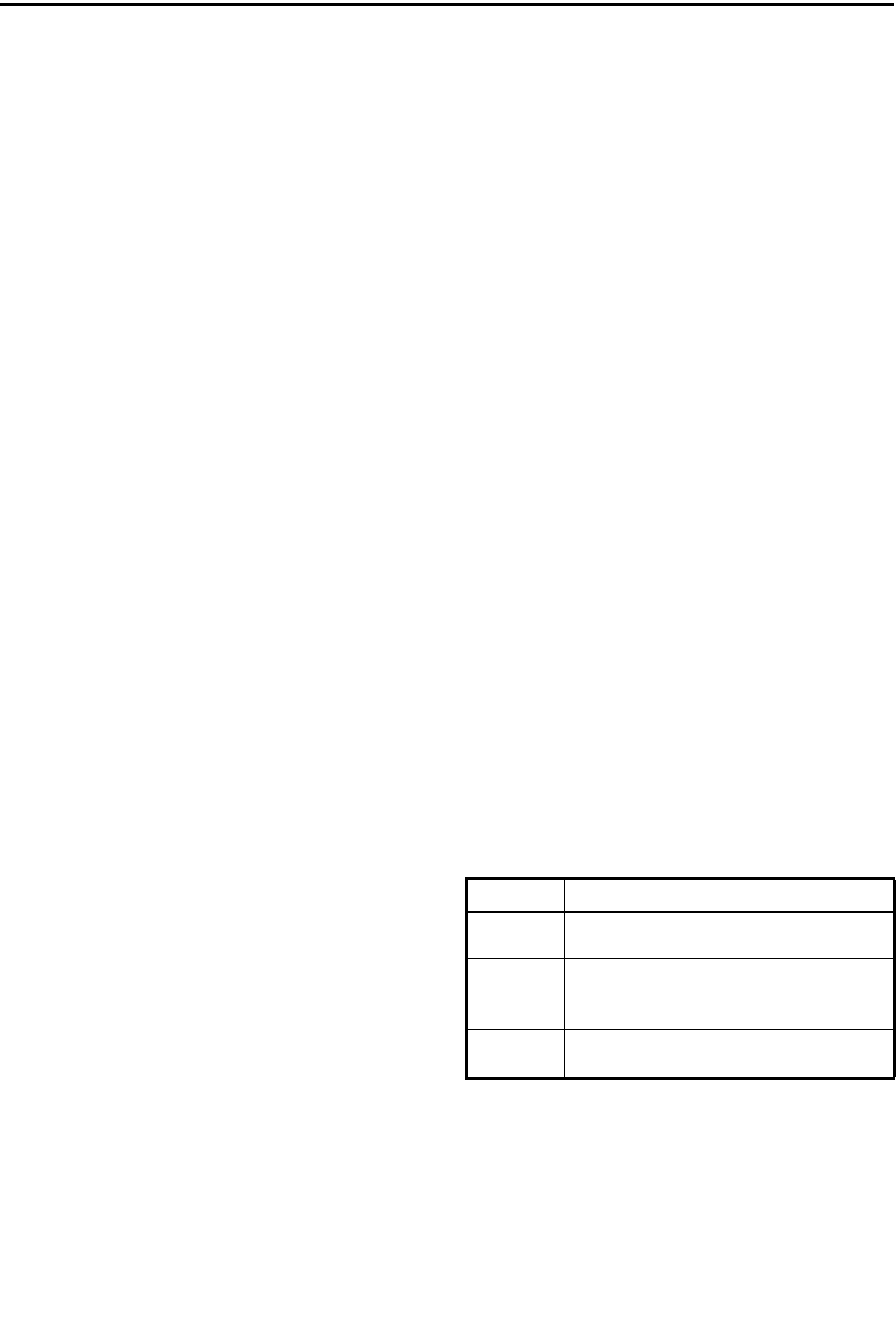
CIRCUIT DESCRIPTION
4-9 September 2001
Part No. 001-5100-001
4.4.5 DSP CHIP (U12)
DSP chip U12 has a 16-bit data bus and a 16-bit
address bus. It has 10K words of internal SRAM from
which 0.5K are used only to store data and 9.5K are
used either for data or for program storage. The DSP
bus can access through its buses the following external
devices:
SRAM U5 and U6 - These two chips are 128K x 8
chips. U5 stores the lower byte of the word while U6
stores the higher byte. Those chips are selected by
asserting CE2 high and CE1* low. The programmable
logic IC is responsible for controlling the select lines
of these ICs.
FLASH ROM U2 - This chip is 512K x 16 words in
size. It is selected by asserting CE* low. The program-
mable logic IC is responsible for controlling the select
line of this IC.
ADSIC U3 - The ADSIC contains several registers
which can be read from or written to by the DSP. The
ADSIC IC has an output which drives a data/address
bus enable signal for the programmable logic IC.
UART U7 - This chip converts data from the DSP into
serial data. It is used to interface with the optional
encryption board.
Programmable Logic U1 - This IC arbitrates access
to the DSP’s address/data bus between the flash (U2),
SRAMs (U5,U6), and UART (U7). The DSP can
modify the memory configuration by writing to a
series of registers in the programmable logic IC. In
order to reduce power consumption, the programmable
logic IC can be “disconnected” from the DSP’s
address/data bus using the bus enable input on the
programmable logic IC (pin 44).
The DSP uses memory as data space, program
space, and I/O space as follows. Refer to Figure 4-3
for more information.
Program Space - Internal SRAM, external SRAM,
and FLASH memory.
Data Space - Internal SRAM and external SRAM.
I/O Space - Programmable logic IC, ADSIC, and the
UART.
The DSP accesses the difference spaces by setting
the corresponding lines PS*, DS*, IS* low. Only one
of these three signals can be low at a given time. When
the DSP accesses internal SRAM, none of these lines
is activated.
The programmable logic IC (PLD) acts as the
primary arbitrator of the DSP’s memory map. The
FLASH ROM and the SRAM are both mapped in the
program space and cannot both be active at the same
time. The DSP may control which type of memory is
mapped in program space by enabling the program-
mable logic IC (PLD), then manipulating a register in
the PLD. In addition, the DSP can manipulate other
registers to control paging of both the Flash and the
SRAM. Paging refers to the swapping of 64K word
blocks of Flash or SRAM into or out of the DSP’s
memory map.
FLASH ROM U2 is used to permanently store
the program to be executed in the DSP. However, it is
slow to access, so to fully utilize the speed of the DSP,
the program stored in the FLASH ROM must be
copied into the SRAM. As the size of the SRAM is
half the size of the FLASH ROM, only the code
required for the current mode of operation is copied in
the SRAM. As previously mentioned, the FLASH
ROM and the SRAM cannot be active at the same
time. Thus we use the internal data memory as a
temporary buffer to transfer the program from the
FLASH ROM to the SRAM.
The following hardware interrupts are used on the
DSP:
Connector J2 allows connection to an emulator
for debugging purposes. The emulator connects to
some dedicated pins on the DSP.
Interrupt Description
INT1* 8 kHz interrupt for speaker DAC and micro-
phone ADC from ADSIC
INT2* 125 kHz signal from ADSIC
INT3* 2 kHz timer interrupt from the Controller on
the Keypad Board.
INT4* Interrupt from the UART
NMI* Not used
DIGITAL BOARD (CONT’D)
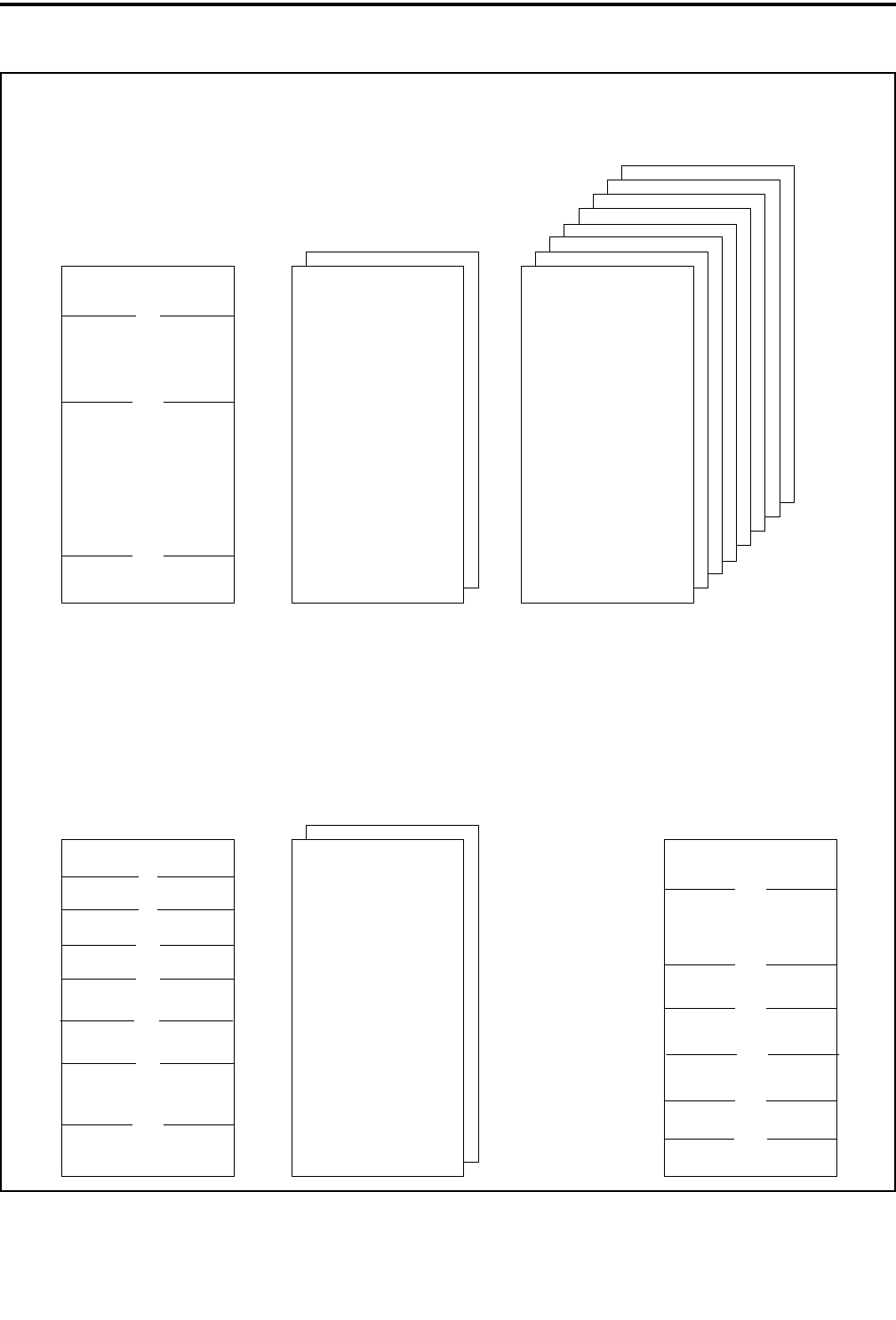
CIRCUIT DESCRIPTION
4-10 September 2001
Part No. 001-5100-001
Figure 4-3 Memory Utilization
External Flash
(pages 0-7)
External SRAM
(pages 0 and 1)
$7FF
$800
$2BFF
$2C00
$FBFF
$FE00
On-chip ROM (MP/MC = 0)
external (MP/MC = 1)
On-chip SRAM (RAM = 1)
external (RAM = 0)
external
On-Chip SRAM (CNF=1)
external (CNF=0)
Internal Map ps_map = 1 ps_map = 0
Program Space
Data Space
External SRAM
(pages 0 and 1)
Note: same sram in data
space is also mapped to
program space
Internal Map External Map
I/O Space
$5F
$60
$7F
$80
$7FF
$800
external
$FF
$100
$2FF
$300
$4FF
$500
$2BFF
$2C00
On-Chip SRAM (OVLY = 1)
external (OVLY = 0)
On-Chip SRAM
On-Chip SRAM (CNF=0)
reserved
reserved
On-Chip SRAM
mmregs
$0FFF
$1000
$7FFF
$8000
$8FFF
$9000
$9FFF
$A000
$AFFF
$B000
$DFFF
$E000
UART control/status regs
unused
flash page reg (r/w)
mem control reg (r/w)
i2c interface reg (r/w)
unused
ADSIC registers (r/w)
DIGITAL BOARD (CONT’D)

CIRCUIT DESCRIPTION
4-11 September 2001
Part No. 001-5100-001
4.4.6 UART
The UART performs parallel to serial and serial
to parallel conversion. The serial format used is a 9-bit
format with start and stop bits. The serial transmission
speed is 19200 bps. The UART appears as eight regis-
ters visible in the I/O space of the DSP starting at
every multiple of 0008h from 0000h to 07FFh. U11
performs the address decoding by selecting the UART
when both IS* and A15 are low. Crystal Y2 along with
the internal oscillator of the UART provides the clock
required to generate the correct bit rate on the serial
output of the UART.
When the UART receives a new serial word or is
ready to accept a new word to send from the DSP, it
generates an interrupt on INTRN. This pin is
connected to one of the hardware interrupt lines on the
DSP. The DSP responds by reading the status register
in the UART and by answering accordingly.
4.4.7 ADSIC
The ADSIC is a complex custom IC which
performs many analog-to-digital, digital-to-analog,
and purely digital functions as previously described.
The ADSIC has four internal registers accessible by
the DSP. They are selected through the use of address
lines A15, A14, A13, A2, A1, A0, IS* (IS* needs to be
inverted with U4 to be compatible with the logic level
required by the ADSIC), RD*, and WR*. Two of these
registers are read-only while the two others are write-
only. Therefore, they can be accessed as two locations
in the I/O spaces. Due to the decoding performed,
those locations appear at the following addresses:
Fxx0h, Fxx1h, Fxx8h, Fxx9h, Exx0h, Exx1h, Exx8h,
and Exx9h.
Crystal Y1 along with the internal oscillator in
the ADSIC provide a 20 MHz clock. This clock signal
is used internally by the ADSIC and is also multiplied
by two to provide a 40 MHz clock to the DSP. The
frequency of the clock can be electronically shifted a
small amount by controlling varicap D1 through the
OSCW pin (U3-97). This removes interference created
on some channels by the clock.
The ADSIC and DSP exchange the sampled
receive data and the sampled VCO modulation signal
through a serial port. This serial port consists of pins
SCKR*, RFS, RxD, TxD, SCKT, and TFS on the
ADSIC. U21 and U1 modify the relative phase of TxD
and TFS to be compatible with the timing required on
the serial port of the DSP.
SDO is the output of the internal speaker DAC.
MAI is the input of the internal microphone attenuator
and is followed by the microphone ADC.
The ADSIC is configured partially by the DSP
through its data and address bus (see preceding).
However, most of the configuring is provided through
an SPI compatible serial bus. This SPI serial bus
consists of pins SEL*, SPD, and SCLK. The other side
of this bus is connected to the controller on the
Keypad Board.
4.5 KEYPAD BOARD
4.5.1 INTRODUCTION
The Keypad Board contains a microcontroller,
LCD Display, Display Driver, Audio circuits, and
Power supply. The Keypad Board interfaces with the
Digital board via J4, with the Top Control rigid flex
circuit via J13, and with the side buttons, PTT switch,
and accessory connector through J5.
4.5.2 FUNCTIONAL DESCRIPTION
The microcontroller provides an interface
between the hardware and the DSP (on the Digital
Board). When the user presses or rotates a control such
as the channel selector switch, a side option or PTT
switch, or a keypad key, the microcontroller signals
the change to the DSP. Conversely, when the DSP
needs to change the display or an LED, it signals the
microcontroller which then performs the action. The
microcontroller also controls peripheral ICs such as
the synthesizer, reference oscillator, display, and
ADSIC.
The microcontroller uses a serial bus to commu-
nicate with the DSP and another RS232 bus to
communicate with the side port connector. The side
connector bus is used for external communication with
a computer running the programming or tuning soft-
ware. Finally, the microcontroller maintains certain
operating parameters in the associated EEPROM
which is controlled via a two-wire serial bus.
DIGITAL BOARD (CONT’D)

CIRCUIT DESCRIPTION
4-12 September 2001
Part No. 001-5100-001
4.5.3 MICROCONTROLLER
The microcontroller is a Motorola
M68HC08XL36 chip. It includes 28K bytes of internal
ROM memory and 1K byte of internal SRAM. It does
not have an external bus and therefore cannot access
any external program memory.
The clock to the microcontroller is provided by
Y1 and an internal oscillator. The frequency of the
clock can be slightly offset by polarizing the base of
Q3 through software control. This prevents RF inter-
ference on some channels caused by the clock.
The microcontroller contains an SPI-compatible
synchronous serial bus. This bus consists of pins
MISO (U1-53), MOSI (U1-52), SPSCK (U1-50), and
a chip enable for each device with which it communi-
cates. The devices which communicate with the
microcontroller through this bus are as follows:
•Top Display driver chip (Top Display board)
•Front Display driver chip (Digital board)
•ADSIC chip (Digital board)
•Reference Oscillator (RF Board)
•Front-End DAC (RF Board)
•Synthesizer chip (RF Board)
•Optional DES board.
The microcontroller communicates with the DSP
chip (Digital board) through a custom serial bus. This
serial port includes pins PTA3 (U1-8), PTA4 (U1-9),
PTA5 (U1-10), PTA6 (U1-11), and PTA7 (U1-12).
The microcontroller uses its SCI asynchronous
serial bus for external communication with a computer
running programming or tuning software. The SCI
pins RxD (U1-42) and TxD (U1-43) are connected to
RS232 driver receiver U5. The other signals of a stan-
dard RS232 computer port (DSR, DTR, CTS, RTS)
are generated using microcontroller input/outputs.
The RS232 driver U5 converts signals from a
logic level of 0 and 5 V to a logic level of –10 and
+10V. The chip contains an internal charge pump to
generate –10V and +10V from the 5V power supply.
The RS232 chip can be put in standby mode by
leaving the line K/F-RS232* floating. This line is
connected to the side connector which allows it to turn
on U5 only when a computer is connected to the radio.
The keypad interfaces with the microcontroller
through eight lines (4 rows x 4 columns). The micro-
controller regularly polls these lines to detect a key
closure.
Serial EEPROM U3 is used to store some impor-
tant radio parameters. The EEPROM is read to or
written from using I/O lines PTC6 and PTC7 of the
microcontroller. PTC6 is used for the Data line, and
PTC7 is used as a clock line.
Shift register U14 expands the number of I/O
lines of the microcontroller. It uses the same data and
clock as the EEPROM plus an additional line (U1-45)
to control the latch. Other user interface inputs such as
the PTT and toggle switches are directly connected to
an I/O line of the microcontroller.
4.5.4 LOW VOLTAGE DETECT
Voltage comparator U4 detects a low voltage
condition and communicates this information to the
microcontroller through the pin PTC5 (U1-30). The
microcontroller can also detect through I/O IRQ2*
(U1-62) that a battery is connected.
4.5.5 LCD DISPLAYS AND DISPLAY DRIVERS
The radio has two displays which each have eight
characters, several icons and a backlight. One display
is located on the Keypad Board while the other display
is located on the Top Display Board. Each display is
driven by its own driver. The drivers are programmed
by the microcontroller through the SPI bus. Both
display drivers are connected to the common PI bus
but are individually addressable so that the displays
may show different information at the same time.
4.5.6 AUDIO CIRCUITS
The audio circuits on the Keypad/Display Board
consist of four op amps, two audio power amplifiers,
and an analog switch.
In receive mode, the analog receive waveform
created by the ADSIC (on the Digital Board) is fed to
an op amp summing amplifier (U9B). This amplifier
sums in the audio tones that are generated by the
microcontroller. The output of the summing amplifier
KEYPAD BOARD (CONT’D)

CIRCUIT DESCRIPTION
4-13 September 2001
Part No. 001-5100-001
is then fed through the volume control potentiometer
to a second op amp buffer.
The buffer output is routed to a pair of audio
power amplifiers: one to drive the internal speaker and
another to drive the external speaker. Only one of
these audio power amplifiers can be active at a time.
The active power amplifier is selected by the OPT
SEL 1 line (J5-12). The MUTE line turns the active
power amplifier on or off by disconnecting the battery
voltage from the audio power amplifier IC using the
transistor Q4. Transistors Q8 and Q9 and their associ-
ated RC networks remove popping sounds from the
speaker audio by delaying the unmuting of the audio
amp compared to the unMUTE command.
In transmit mode, the audio for transmission can
be selected from either an internal or external micro-
phone, depending upon the presence of an external
microphone and which PTT is pressed. An analog
switch is used to route either the internal or external
microphone signal to the microphone amplifier. The
external microphone signal is buffered by an op amp.
The microphone amplifier has a gain of ten, and is
equipped with a pair of clipping diodes to prevent the
amplified microphone signal from over-driving the A/
D input on the ADSIC.
4.5.7 VOLTAGE REGULATION
The 5-Volt Digital Supply is produced by
switching DC-DC converter U12 which operates off
the Unswitched B+ Supply. The switching frequency
is around 160 kHz. A switching regulator is used to
improve efficiency since the 5-Volt Digital Supply
power consumption is a large percentage of the total
power consumption of the radio. The peak-to-peak
residual ripple on the 5-Volt Digital supply is approxi-
mately 50 mV.
The DC-DC converter is controlled by a wired
AND gate on the Shutdown pin of the device. The two
inputs of the wired AND gate are the SW_B+ and the
output PTC4 of the microcontroller U1. When either
input is high, the DC-DC converter is operating.
The DC-DC converter has a soft-start feature
(R98, C136) to prevent chattering of the output regu-
lated voltage due to “bouncing” of the on/off switch.
The converter has current limiting that limits output
current to 1.5 A. The under voltage protection turns
the converter off if the input (Unswitched B+) voltage
drops below 5.45 V.
The 5-Volt Analog Supply is produced by a linear
regulator running from the Unswitched B+ Supply.
The Unswitched B+ input to the regulator is switched
on and off by a FET that is turned on by the 5-Volt
Digital Supply. The peak-to-peak output ripple of the
5-Volt Analog regulator is less than 10 mV which is
appropriate for analog circuits.
4.6 TRANSMIT FREQUENCY
DETERMINATION
The operational frequency of the transmitter is
determined by the PLL (Phase-Locked-Loop)
consisting of synthesizer U204 and VCO circuit Q202/
U201. Reference oscillator U203 generates and
supplies a reference signal of 16.8 MHz to synthesizer.
The synthesizer contains a programmable reference
divider, programmable A and B dividers, a program-
mable prescaler counter (P), and a programmable frac-
tional N divider with two programmable values (N
numerator and N denominator).
All of these dividers are programmed through the
serial interface which connects the synthesizer to the
controller microprocessor. The 16.8 MHz reference
oscillator frequency is divided down to a synthesizer
reference frequency of 2.1, 2.4, or 2.225 MHz. This
signal is fed to the phase detector which generates the
steering voltage for the VCO. The output of the VCO
circuit is coupled back and divided by AP+B and then
divided by the fractional divider and fed into the
second input of the phase detector. The VCO buffer
has two outputs. One input goes to the input of Rx
mixer chip U2, and the other is applied to the input of
power amplifier module U105.
4.7 HARMONIC FILTER
The transmitter harmonic filter consists of C148-
C151, L126, L127, and L128.With VHF models only,
it also consists of C129 and C130. The circuit is essen-
tially a seven-pole low-pass filter. With VHF units
only, two additional poles are inserted by C129 and
C130 which are series resonant with L126 and L127.
KEYPAD BOARD (CONT’D)
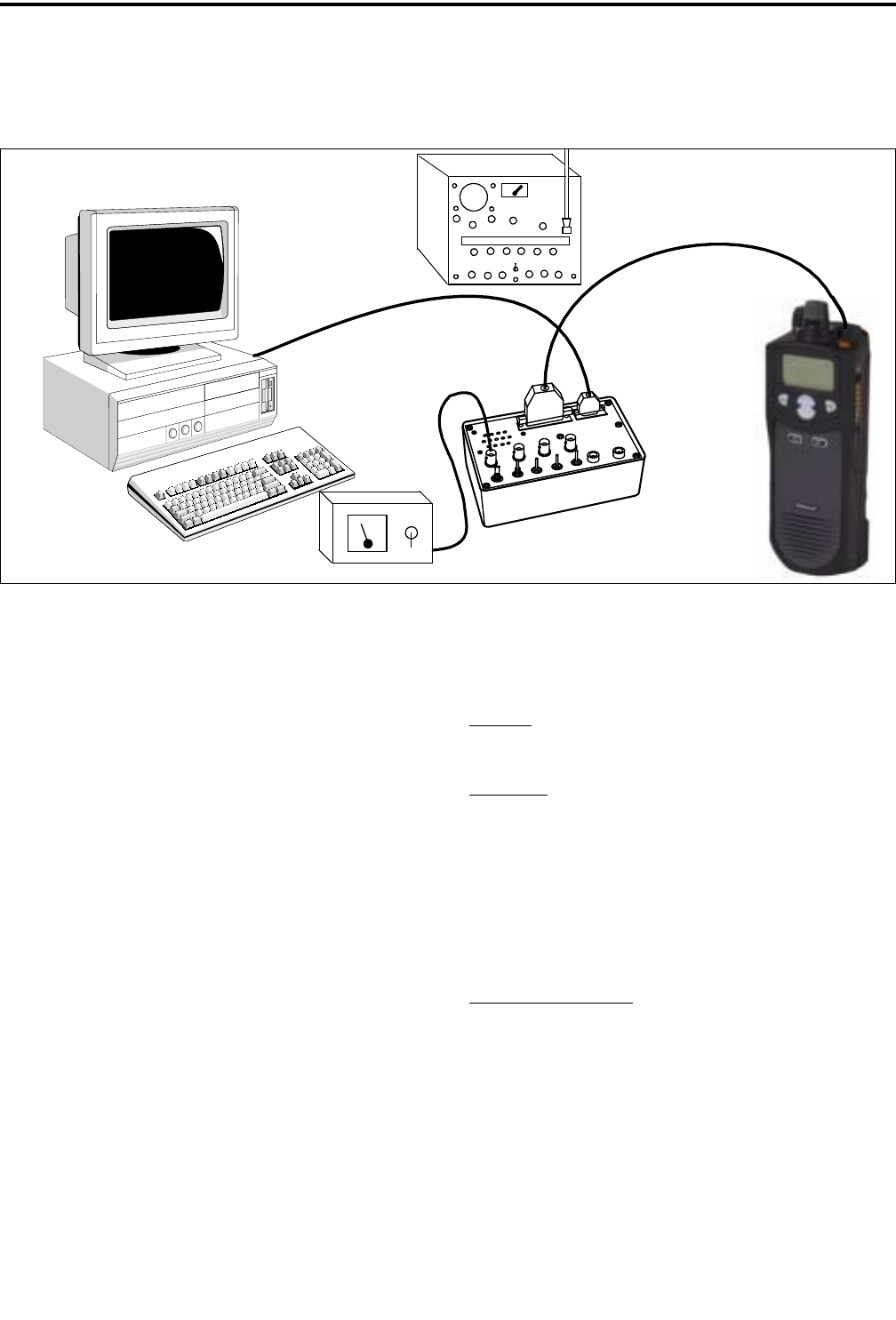
5-1 September 2001
Part No. 001-5100-001
ALIGNMENT PROCEDURE
SECTION 5 ALIGNMENT PROCEDURE
Figure 5-1 Alignment Setup
Communication
SINAD Meter
Monitor
5.1 GENERAL
5.1.1 INTRODUCTION
The following alignment procedure should be
performed if repairs are made that could affect the
factory alignment or if adjustments may have changed
for some other reason.
To perform transceiver alignment, a PC-compat-
ible computer, the programming interface cable, and
PCTune software are required (see Table 1-1). In addi-
tion, to adjust the squelch level, the Radio Interface
Box (RIB) and radio-to-RIB cable are required. The
programming setup is shown in Figure 5-1.
All adjustments are set digitally using the
computer. Therefore, there is no need to disassemble
the transceiver to access adjustment points. In addi-
tion, audio test signals are generated internally, so an
audio generator is not required. The required test
equipment is shown in Figure 5-1.
5.1.2 TUNE SOFTWARE
General
The PCTune software is a Windows® program.
Minimum software and hardware requirements are as
follows:
•Windows® 95, 98, or 3.1
•386SX or faster microprocessor
•4 megabytes of RAM
•3 megabytes free space available on hard drive.
•An available serial port
Software Installation
Proceed as follows to install this software:
1. Close all applications that are currently running
(other than Windows).
2. Insert the disk containing the PCTune software in
drive A: (or B:).
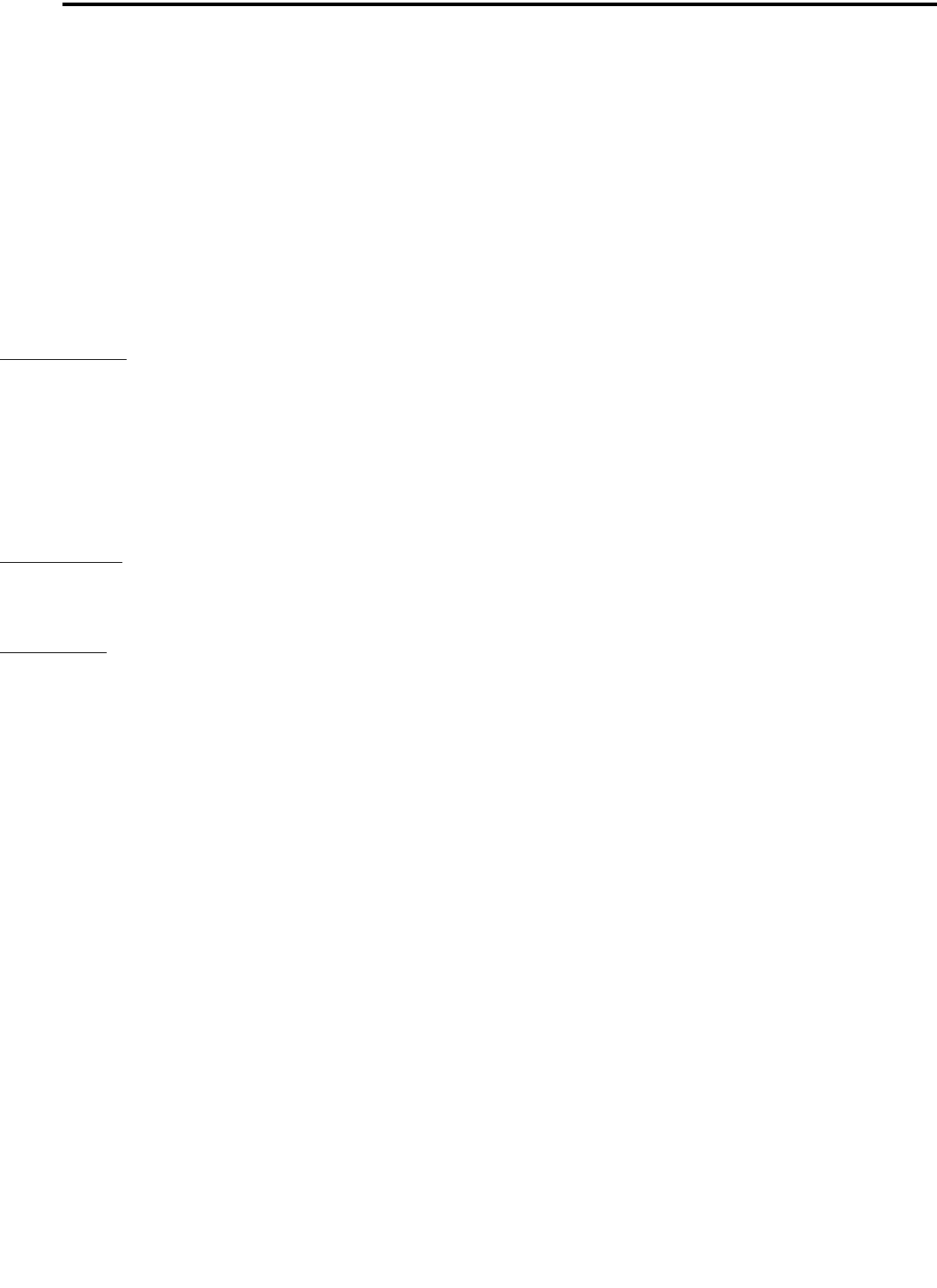
ALIGNMENT PROCEDURE
5-2 September 2001
Part No. 001-5100-001
3. From the Windows 95 taskbar, choose RUN and
open SETUP.EXE on drive A: (or B:). Alternatively,
use File Explorer and double click SETUP.EXE.
From the Windows 3.1 Program Manager, choose
FILE > RUN and select the SETUP.EXE file on
drive A: (or B:).
4. Follow the instructions on the screen. The program
is automatically loaded on the hard drive and start-
up shortcuts or groups are created.
Starting PCTune
From Windows 95 - Select Start in the taskbar, then
Programs > PCTune > PCTune x.x.x.
From Windows 3.1 - From the Program Manager,
open the PCTune group and then double click the
PCTune icon.
Exiting PCTune
Select FILE > EXIT or press ALT + F4.
On-Line Help
On-line help is not available at this time.
5.1.3 PRELIMINARY
1. With transceiver power turned off, connect the
female DB9 connector of the programming inter-
face cable to an unused serial port of the computer.
2. Connect the other end of the programming interface
cable to the accessory/programming jack on the side
of the transceiver.
3. Start the program as described in the preceding
section. Select Options > Set Com Port and make
sure that the correct serial port is selected (see
screen in Figure 5-2).
4. Turn transceiver power on and select Tuning >
Complete Tuning to automatically step through a
complete alignment or Partial Tuning to adjust only
certain settings or randomly select adjustments.
5. The computer then attempts to establish communi-
cation with the transceiver. A message is displayed
to indicate success or failure. From this point,
prompts are displayed for each step of the program-
ming procedure.
5.2 TRANSMIT FREQUENCY TUNING
The transmit frequency is set by transmitting on
the indicated frequency and then adjusting the refer-
ence oscillator frequency via the tuning software.
Proceed as follows:
1. Connect a 50-ohm load to the antenna jack and
monitor the transmit signal with a communication
monitor.
2. Set the communication monitor to the indicated
frequency and click OK to key the transmitter.
3. Adjust the frequency by clicking the + and – keys.
The current setting is indicated in the “Current
Value” box. When the frequency is correct, click
OK again to complete the adjustment and store the
setting.
5.3 TRANSMIT MODULATION TUNING
Transmit modulation is set by balancing the
modulation produced by 80 Hz and 3 kHz tones and
then setting modulation limiting using a 1 kHz tone.
All these tones are internally generated by the trans-
ceiver, so no external audio generator is required.
Proceed as follows:
1. Click OK with “TX Modulation” selected. Set the
communication monitor for the displayed
frequency.
2. Click OK to transmit a signal modulated with an 80
Hz tone. Enter the resulting deviation (in hertz) in
the displayed box and click OK.
3. Continue following the screen instructions to adjust
the 3 kHz tone deviation. The + and – buttons are
clicked to set the deviation to the indicated level.
The 1 kHz tone deviation is then adjusted.
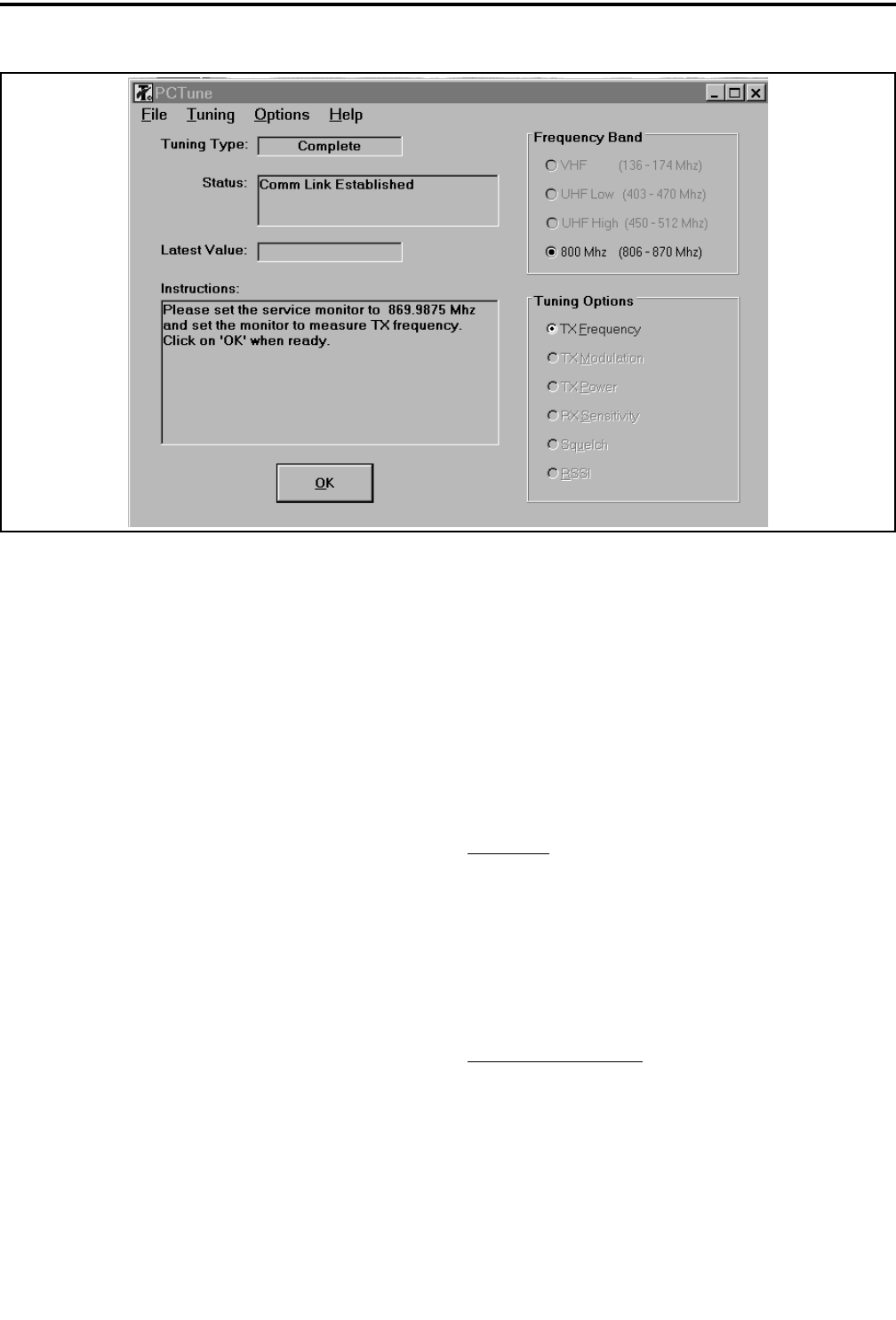
ALIGNMENT PROCEDURE
5-3 September 2001
Part No. 001-5100-001
Figure 5-2 Tuning Software Screen (800 MHz Models)
4. The preceding 3 kHz and 1 kHz tone adjustments
are then repeated on several other frequencies across
the band. After the last adjustment is made, the
transmitter unkeys and the settings are stored.
5.4 TRANSMIT POWER ADJUSTMENT
Set transmitter power output as follows:
1. Connect a wattmeter and 50-ohm load to the
antenna jack. Click OK with “TX Power” selected.
2. Follow on-screen instructions to adjust for the
displayed power output at various frequencies
across the band.
3. When the last setting is complete, the transmitter
unkeys and the settings are stored.
5.5 RECEIVE SENSITIVITY TUNING
NOTE: This adjustment is not performed with 800
MHz models.
The receiver front end is tuned as follows:
1. Connect an RF signal generator to the antenna jack.
Click OK with “RX Sensitivity” selected.
2. Inject the frequencies and signal levels indicated on
the computer screen. When tuning is complete, a
message is displayed and the settings are saved.
5.6 SQUELCH ADJUSTMENT
NOTE: With some early models, this adjustment
cannot be made using the PCTune software so an error
message is displayed when it is selected.
Test Setup
This adjustment requires access to the receive
audio signal so that SINAD can be measured. It is
recommended that this be done using the RIB (Radio
Interface Box). This box allows the receive audio signal
to be monitored while the computer is connected to the
accessory/programming jack.
Adjustment Procedure
1. Connect an RF signal generator to the antenna jack.
Click OK with “Squelch” selected.
2. Set the signal generator for the indicated frequency
and modulation. Adjust the generator output level
for 12 dB SINAD and click OK.

ALIGNMENT PROCEDURE
5-4 September 2001
Part No. 001-5100-001
3. When prompted, adjust the output level for 8 dB
SINAD and click OK.
4. Proceed as prompted and when this adjustment is
complete, a message is displayed and the settings
are stored.
5.7 RSSI ADJUSTMENT
NOTE: With some early models, this adjustment
cannot be made using the PCTune software so an error
message is displayed when it is selected.
This adjustment calibrates the RSSI signal level.
Proceed as follows:
1. Connect an RF signal to the antenna jack. Click OK
with “RSSI” selected.
2. Set the generator for the indicated frequency and
output level and click OK.
3. Select the other output levels as prompted. When
this adjustment is complete, a message is displayed
the settings are stored.
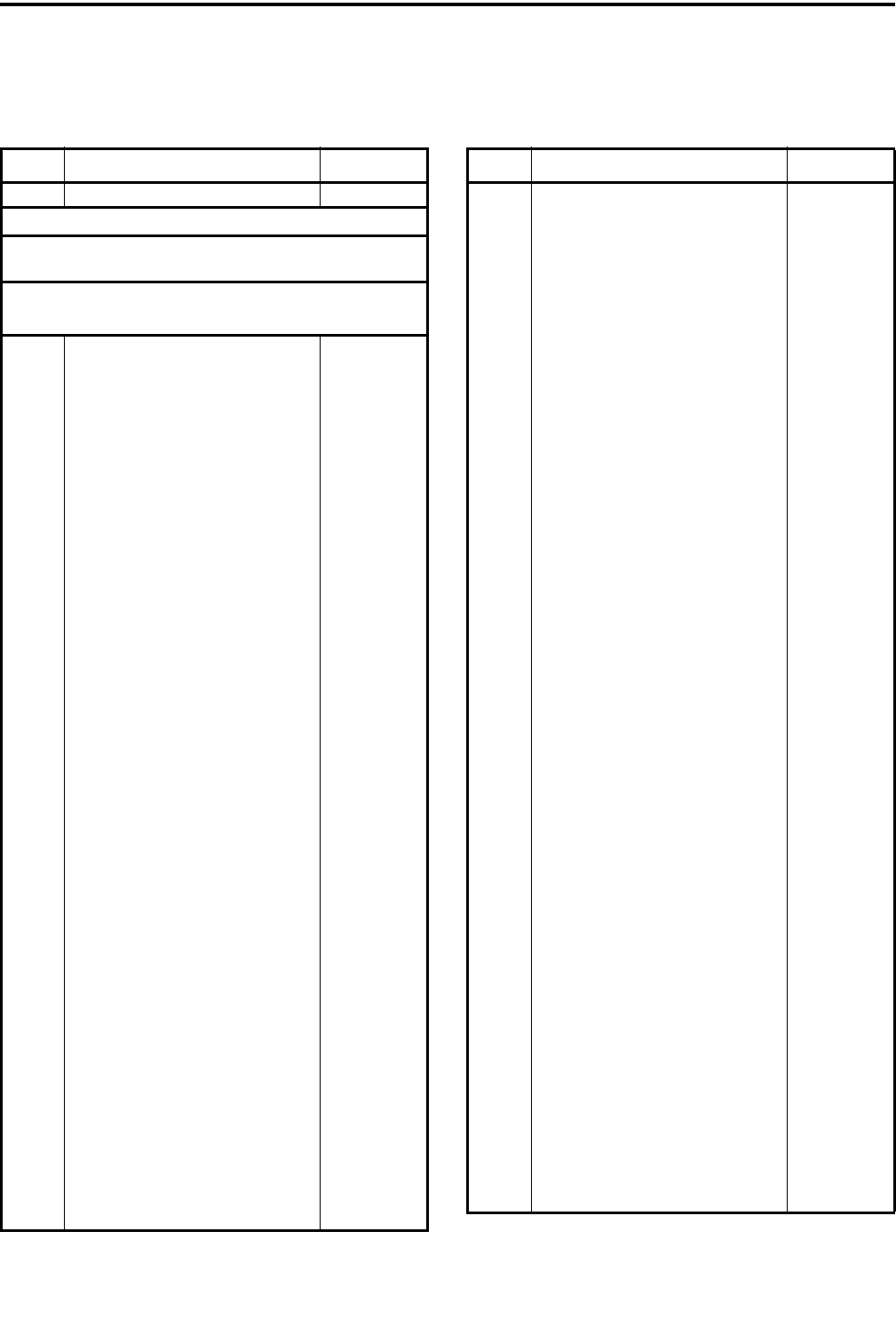
6-1 September 2001
Part No. 001-5100-001
PARTS LIST
SECTION 6 PARTS LIST
Ref No. Description Part No.
RF BOARD (A450)
Individual replacement parts not available. Replace entire
assembly.
DIGITAL BOARD (A100)
Part No. 023-5005-100/-105
C 001 .1 µF +80/–20% Z5U 25V cer smd 510-3680-104
C 002 .1 µF +80/–20% Z5U 25V cer smd 510-3680-104
C 003 .1 µF +80/–20% Z5U 25V cer smd 510-3680-104
C 004 .1 µF +80/–20% Z5U 25V cer smd 510-3680-104
C 005 .1 µF +80/–20% Z5U 25V cer smd 510-3680-104
C 006 .1 µF +80/–20% Z5U 25V cer smd 510-3680-104
C 007 .1 µF +80/–20% Z5U 25V cer smd 510-3680-104
C 008 220 pF ±5% NPO 50V cer smd 510-3674-221
C 009 220 pF ±5% NPO 50V cer smd 510-3674-221
C 010 .1 µF +80/–20% Z5U 25V cer smd 510-3680-104
C 011 .1 µF +80/–20% Z5U 25V cer smd 510-3680-104
C 012 .1 µF +80/–20% Z5U 25V cer smd 510-3680-104
C 013 .1 µF +80/–20% Z5U 25V cer smd 510-3680-104
C 014 .1 µF +80/–20% Z5U 25V cer smd 510-3680-104
C 015 .1 µF +80/–20% Z5U 25V cer smd 510-3680-104
C 016 .1 µF +80/–20% Z5U 25V cer smd 510-3680-104
C 017 .1 µF +80/–20% Z5U 25V cer smd 510-3680-104
C 018 .1 µF +80/–20% Z5U 25V cer smd 510-3680-104
C 019 .1 µF +80/–20% Z5U 25V cer smd 510-3680-104
C 020 .1 µF +80/–20% Z5U 25V cer smd 510-3680-104
C 021 .1 µF +80/–20% Z5U 25V cer smd 510-3680-104
C 022 .1 µF +80/–20% Z5U 25V cer smd 510-3680-104
C 023 .1 µF +80/–20% Z5U 25V cer smd 510-3680-104
C 024 .1 µF +80/–20% Z5U 25V cer smd 510-3680-104
C 025 10 pF ±0.1 pF NPO 50V cer smd 510-3673-100
C 026 .1 µF +80/–20% Z5U 25V cer smd 510-3680-104
C 027 10 pF ±0.1 pF NPO 50V cer smd 510-3673-100
C 028 6.2 pF ±0.1 pF NPO 50V cer smd 510-3673-629
C 029 5.1 pF ±0.1pF NPO 50V cer smd 510-3673-519
C 030 470 pF ±5% NPO 50V cer smd 510-3674-471
C 031 470 pF ±5% NPO 50V cer smd 510-3674-471
C 032 .22 µF ±10% Z5U 25V cer smd 510-3686-224
C 033 220 pF ±5% NPO 50V cer smd 510-3674-221
C 034 220 pF ±5% NPO 50V cer smd 510-3674-221
C 035 .1 µF +80/–20% Z5U 25V cer smd 510-3680-104
C 036 .1 µF +80/–20% Z5U 25V cer smd 510-3680-104
C 037 220 pF ±5% NPO 50V cer smd 510-3674-221
C 038 220 pF ±5% NPO 50V cer smd 510-3674-221
C 039 220 pF ±5% NPO 50V cer smd 510-3674-221
C 040 220 pF ±5% NPO 50V cer smd 510-3674-221
C 041 470pF ±5% NPO 50V cer smd 510-3674-471
C 042 220 pF ±5% NPO 50V cer smd 510-3674-221
C 043 .1 µF +80/–20% Z5U 25V cer smd 510-3631-104
C 044 220 pF ±5% NPO 50V cer smd 510-3674-221
C 045 .1 µF +80/–20% Z5U 25V cer smd 510-3680-104
C 046 220 pF ±5% NPO 50V cer smd 510-3674-221
C 047 220 pF ±5% NPO 50V cer smd 510-3674-221
C 048 10pF ±0.1 pF NPO 50V cer smd 510-3673-100
C 049 10 pF ±0.1 pF NPO 50V cer smd 510-3673-100
C 050 33 pF ±10% X7R 25V cer smd 510-3675-330
C 051 33 pF ±10% X7R 25V cer smd 510-3675-330
C 052 470 pF ±5% NPO 50V cer smd 510-3674-471
C 053 470 pF ±5% NPO 50V cer smd 510-3674-471
C 054 470 pF ±5% NPO 50V cer smd 510-3674-471
C 055 470 pF ±5% NPO 50V cer smd 510-3674-471
C 056 220 pF ±5% NPO 50V cer smd 510-3674-221
C 057 .1 µF +80/–20% Z5U 25V cer smd 510-3680-104
C 058 470 pF ±5% NPO 50V cer smd 510-3674-471
C 059 470 pF ±5% NPO 50V cer smd 510-3674-471
C 060 .1 µF +80/–20% Z5U 25V cer smd 510-3680-104
C 061 220 pF ±5% NPO 50V cer smd 510-3674-221
C 062 220 pF ±5% NPO 50V cer smd 510-3674-221
C 063 .1 µF +80/–20% Z5U 25V cer smd 510-3680-104
C 064 .1 µF +80/–20% Z5U 25V cer smd 510-3680-104
C 065 220 pF ±5% NPO 50V cer smd 510-3674-221
C 066 .1 µF +80/–20% Z5U 25V cer smd 510-3680-104
C 067 220 pF ±5% NPO 50V cer smd 510-3674-221
C 068 .1 µF +80/–20% Z5U 25V cer smd
(-100 boards)
510-3680-104
220 pF ±5% NPO 50V cer smd
(-105 boards)
510-3674-221
C 069 .1 µF +80/–20% Z5U 25V cer smd
(-100 boards)
510-3680-104
220 pF ±5% NPO 50V cer smd
(-105 boards)
510-3674-221
C 070 220 pF ±5% NPO 50V cer smd 510-3674-221
C 071 220 pF ±5% NPO 50V cer smd 510-3674-221
C 072 220 pF ±5% NPO 50V cer smd 510-3674-221
Ref No. Description Part No.
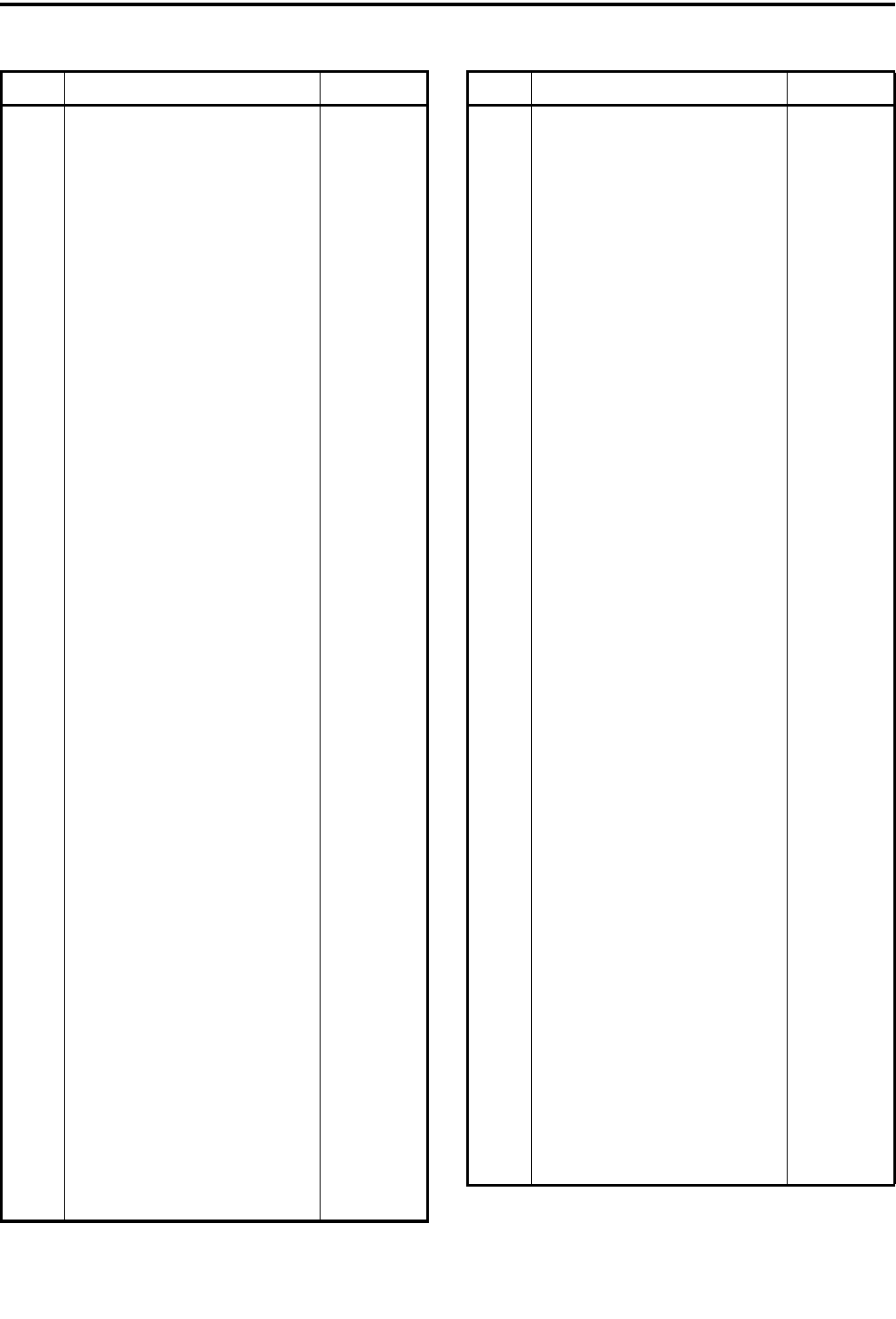
PARTS LIST
6-2 September 2001
Part No. 001-5100-001
C 074 220 pF ±5% NPO 50V cer smd 510-3674-221
C 076 .1 µF +80/–20% Z5U 25V cer smd 510-3680-104
C 078 220 pF ±5% NPO 50V cer smd 510-3674-221
C 079 .1 µF +80/–20% Z5U 25V cer smd 510-3680-104
C 080 220 pF ±5% NPO 50V cer smd 510-3674-221
C 081 220 pF ±5% NPO 50V cer smd 510-3674-221
C 082 220 pF ±5% NPO 50V cer smd 510-3674-221
C 091 220 pF ±5% NPO 50V cer smd 510-3674-221
C 092 220 pF ±5% NPO 50V cer smd 510-3674-221
C 093 220 pF ±5% NPO 50V cer smd 510-3674-221
C 094 220 pF ±5% NPO 50V cer smd 510-3674-221
C 095 220 pF ±5% NPO 50V cer smd 510-3674-221
C 096 220 pF ±5% NPO 50V cer smd 510-3674-221
C 097 220 pF ±5% NPO 50V cer smd 510-3674-221
C 098 220 pF ±5% NPO 50V cer smd 510-3674-221
C 157 220 pF ±5% NPO 50V cer smd 510-3674-221
C 158 33 pF ±10% X7R 25V cer smd 510-3675-330
C 159 33 pF ±10% X7R 25V cer smd 510-3675-330
C 160 33 pF ±10% X7R 25V cer smd 510-3675-330
C 161 220 pF ±5% NPO 50V cer smd 510-3674-221
C 162 220 pF ±5% NPO 50V cer smd 510-3674-221
C 163 33 pF ±10% X7R 25V cer smd 510-3675-330
C 164 33 pF ±10% X7R 25V cer smd 510-3675-330
C 165 33 pF ±10% X7R 25V cer smd 510-3675-330
C 166 33 pF ±10% X7R 25V cer smd 510-3675-330
C 167 33 pF ±10% X7R 25V cer smd 510-3675-330
C 168 33 pF ±10% X7R 25V cer smd 510-3675-330
C 169 33 pF ±10% X7R 25V cer smd 510-3675-330
C 170 33 pF ±10% X7R 25V cer smd 510-3675-330
C 171 220 pF ±5% NPO 50V cer smd 510-3674-221
D 001 Diode, 1.5 pF SOT-23 523-1504-029
D 002 Zener diode, 5.6V SOT-23 523-2601-569
EP 101 Contact, power 013-1724-001
EP102 Z ground strip 017-1210-056
EP 103 Contact, battery pogo pin 515-9500-104
J 001 10-pin socket, x 2 515-7113-070
J 002 18-pin flex connector 515-7010-438
J 004 31-pin connector 515-7109-130
L 001 1.8 µH inductor, 350mA 542-9230-027
L 002-
L 036
Inductor, ferrite smd
(-100 boards)
542-9230-023
Ref No. Description Part No.
Inductor, ferrite smd
(-105 boards)
542-9230-021
MP 101 Shield, pogo 017-1210-053
PC 101 Flex circuit, power 035-1800-180
PC 100 PC board, digital trunking 035-5005-100
PC board, digital non-trunk 035-5005-105
PC101 Power flex circuit board, pogo pin 035-5005-101
Q 001 NPN general purpose SOT-23 576-0003-658
R 001 4.7k ohm ±5% 1/16W smd 569-0155-472
R 002 4.7k ohm ±5% 1/16W smd 569-0155-472
R 003 10k ohm ±5% 1/16W smd 569-0155-103
R 004 4.7k ohm ±5% 1/16W smd 569-0155-472
R 005 10k ohm ±5% 1/16W smd 569-0155-103
R 006 10k ohm ±5% 1/16W smd 569-0155-103
R 007 390k ohm ±5% 1/16W smd 569-0155-394
R 008 100k ohm ±5% 1/16W smd 569-0155-104
R 009 4.7k ohm ±5% 1/16W smd 569-0155-472
R 010 100k ohm ±5% 1/16W smd 569-0155-104
R 011 10k ohm ±5% 1/16W smd 569-0155-103
R 012 33k ohm ±5% 1/16W smd 569-0155-333
R 013 100k ohm ±5% 1/16W smd 569-0155-104
R 014 10k ohm ±5% 1/16W smd 569-0155-103
R 015 10k ohm ±5% 1/16W smd 569-0155-103
R 016 0 ohm jumper 569-0155-001
R 017 0 ohm jumper 569-0155-001
R 018 10k ohm ±5% 1/16W smd 569-0155-103
R 019 10k ohm ±5% 1/16W smd 569-0155-103
R 020 0 ohm jumper 569-0155-001
R 021 1.0M ohm ±5% 1/16W smd 569-0155-105
R 022 15k ohm ±5% 1/16W smd 569-0155-153
R 023 6.8k ohm ±5% 1/16W smd 569-0155-682
R 024 1k ohm ±5% 1/16W smd 569-0155-102
R 025 0 ohm jumper 569-0155-001
R 026 0 ohm jumper 569-0155-001
R 027 0 ohm jumper
(-100 board)
569-0155-001
47k ohm ±5% 1/16W smd
(-105 board)
569-0155-473
R 028 0 ohm jumper
(-100 board)
569-0155-001
Ref No. Description Part No.
DIGITAL BOARD (CONT’D)

PARTS LIST
6-3 September 2001
Part No. 001-5100-001
100k ohm ±5% 1/16W smd
(-105 board)
569-0155-104
R 029 47k ohm ±5% 1/16W smd 569-0155-473
R 030 1k ohm ±5% 1/16W smd
(-100 board)
569-0155-102
0 ohm jumper
(-105 board)
569-0155-001
R 031 10 ohm ±5% 1/16W smd 569-0155-100
R 032 10 ohm ±5% 1/16W smd 569-0155-100
R 033 0 ohm jumper
(-100 board)
569-0155-001
10k ohm ±5% 1/16W smd
(-105 board)
569-0155-103
R 034 22k ohm ±5% 1/16W smd 569-0155-223
R 035 22k ohm ±5% 1/16W smd 569-0155-223
R 036 22k ohm ±5% 1/16W smd 569-0155-223
R 037 0 ohm jumper 569-0155-001
R 038 0 ohm jumper 569-0155-001
R 039 10k ohm ±5% 1/16W smd 569-0155-103
R 040 10k ohm ±5% 1/16W smd 569-0155-103
R 041 0 ohm jumper 569-0155-001
R 042 0 ohm jumper 569-0155-001
R 043 0 ohm jumper 569-0155-001
R 044 0 ohm jumper 569-0155-001
R 045 22k ohm ±5% 1/16W smd 569-0155-223
R 046 22k ohm ±5% 1/16W smd 569-0155-223
R 047 22k ohm ±5% 1/16W smd 569-0155-223
R 048 22k ohm ±5% 1/16W smd 569-0155-223
R 049 22k ohm ±5% 1/16W smd 569-0155-223
R 050 22k ohm ±5% 1/16W smd 569-0155-223
R 051 22k ohm ±5% 1/16W smd 569-0155-223
R 052 22k ohm ±5% 1/16W smd 569-0155-223
R 053 22k ohm ±5% 1/16W smd 569-0155-223
R 054 22k ohm ±5% 1/16W smd 569-0155-223
R 055 22k ohm ±5% 1/16W smd 569-0155-223
R 056 22k ohm ±5% 1/16W smd 569-0155-223
R 057 22k ohm ±5% 1/16W smd 569-0155-223
R 058 22k ohm ±5% 1/16W smd 569-0155-223
R 059 22k ohm ±5% 1/16W smd 569-0155-223
R 060 22k ohm ±5% 1/16W smd 569-0155-223
R 061 22k ohm ±5% 1/16W smd 569-0155-223
R 062 22k ohm ±5% 1/16W smd 569-0155-223
R 063 22k ohm ±5% 1/16W smd 569-0155-223
R 064 0 ohm jumper 569-0155-001
R 065 1k ohm ±5% 1/16W smd 569-0155-102
Ref No. Description Part No.
R 087 0 ohm jumper 569-0155-001
R 090 10k ohm ±5% 1/16W smd 569-0155-103
R 091 1k ohm ±5% 1/16W smd 569-0155-102
R 092 1k ohm ±5% 1/16W smd 569-0155-102
R 093 1k ohm ±5% 1/16W smd 569-0155-102
R 094 1k ohm ±5% 1/16W smd 569-0155-102
R 095 1k ohm ±5% 1/16W smd 569-0155-102
R 096-
R 100
0 ohm jumper 569-0165-001
U 001 Programmable logic
(-100 board, revision 2)
544-1015-032
Microprocessor assembly
(-100 board, revision 3)
023-1870-043
Counter, preset 74HC161
(-105 board)
544-1010-161
U 002 Flash ROM 512k x 16 AT49
(-100 board)
544-1028-192
U 003 ADSIC, DSP supp BGA106
(all except following)
544-1010-015
ADSIC, DSP supp QFP package
(-100 board, rev 3)
544-9100-002
U 004 NAND, 2 Input TC7SHOOFU 544-1010-012
U 005 RAM 128k x 8 CY7C1009
(-100 board)
544-1011-028
SRAM, 64k x 8,IS61C512
(-105 board)
544-1011-026
U 006 RAM 128k x 8 CY7C1009
(-100 board)
544-1011-028
SRAM, 64k x 8,IS61C512
(-105 board)
544-1011-026
U 007 Rec/trans SCC2691 544-1012-691
U 008 EEPROM, 32k x 8 AT24C256W
(-100 board)
544-1020-256
PEROM, FLASH AT29C010A
(-105 board)
544-1010-010
U 009 NAND, 2-input TC7SH00FU
(-100 board)
544-1010-012
OR, 2-input TC7SH32FU
(-105 board)
544-1010-013
U 010 PEROM, FLASH AT29C010A 544-1010-010
U 011 OR, 2-input TC7SH32FU 544-1010-013
U 012 DSP TMS320C50PGEA 544-1010-018
U 021 D-flip flop TC7W74FU 544-1010-014
Y 001 Crystal,20.0000 MHz 521-3060-037
Y 002 Crystal,3.6864 MHz 521-3060-053
Ref No. Description Part No.
DIGITAL BOARD (CONT’D)
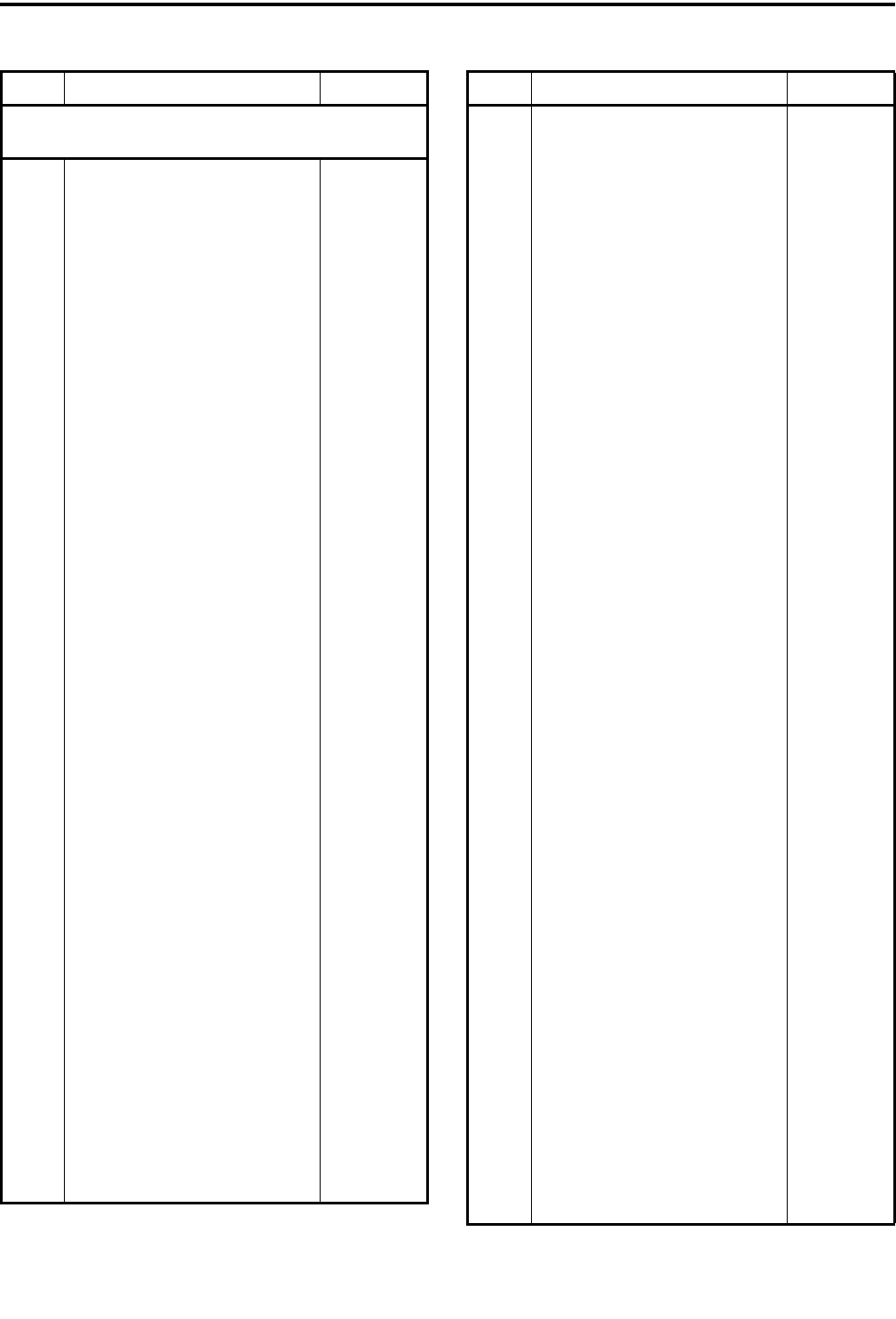
PARTS LIST
6-4 September 2001
Part No. 001-5100-001
KEYPAD BOARD (A4xx)
Part No. 023-5005-4xx
A 430 DES interface board assembly 023-5005-430
C 001 .1 µF +80/–20% Z5U 25V cer smd 510-3680-104
C 002 .1 µF +80/–20% Z5U 25V cer smd 510-3680-104
C 003 .1 µF +80/–20% Z5U 25V cer smd 510-3680-104
C 004 .1 µF +80/–20% Z5U 25V cer smd 510-3680-104
C 005 330 pF ±10% X7R 25V cer smd 510-3675-331
C 006 220 pF ±5% NPO 25V cer smd 510-3674-221
C 007 .1 µF +80/–20% Z5U 25V cer smd 510-3680-104
C 008 .1 µF +80/–20% Z5U 25V cer smd 510-3680-104
C 009 .1 µF +80/–20% Z5U 25V cer smd 510-3680-104
C 010 22 pF ±5% NPO 25V cer smd 510-3674-220
C 011 2.7 pF ±10% NPO 25V cer smd 510-3674-279
C 012 .1 µF +80/–20% Z5U 25V cer smd 510-3680-104
C 013 22 pF ±5% NPO 25V cer smd 510-3674-220
C 014 4700 pF ±10% X7R 25V cer smd 510-3675-472
C 015 220 pF ±5% NPO 25V cer smd 510-3681-221
C 016 220 pF ±5% NPO 25V cer smd 510-3674-221
C 017 220 pF ±5% NPO 25V cer smd 510-3674-221
C 018 220 pF ±5% NPO 25V cer smd 510-3674-221
C 019 220 pF ±5% NPO 25V cer smd 510-3674-221
C 020 220 pF ±5% NPO 25V cer smd 510-3674-221
C 021 220 pF ±5% NPO 25V cer smd 510-3674-221
C 022 220 pF ±5% NPO 25V cer smd 510-3674-221
C 023 220 pF ±5% NPO 25V cer smd 510-3674-221
C 024 220 pF ±10% X7R 25V cer smd 510-3681-221
C 025 220 pF ±5% NPO 25V cer smd 510-3674-221
C 026 220 pF ±5% NPO 25V cer smd 510-3674-221
C 027 220 pF ±10% X7R 25V cer smd 510-3681-221
C 028 .01 µF ±10% X7R 25V cer smd 510-3675-103
C 029 220 pF ±5% NPO 25V cer smd 510-3674-221
C 030 220 pF ±5% NPO 25V cer smd 510-3674-221
C 031 220 pF ±10% X7R 25V cer smd 510-3681-221
C 032 220 pF ±10% X7R 25V cer smd 510-3681-221
C 033 100 pF ±5% NPO 25V cer smd 510-3674-101
C 034 10 pF ±0.1 pF NP0 50V cer smd 510-3673-100
C 035 220 pF ±5% NPO 25V cer smd 510-3674-221
C 036 220 pF ±5% NPO 25V cer smd 510-3674-221
C 037 220 pF ±5% NPO 25V cer smd 510-3674-221
C 038 33 pF ±5% NPO 50V cer smd 510-3601-330
C 039 100 µF 16V smd tantalum 510-2616-101
C 040 1 µF +80/–20% Z5U 25V cer smd 510-3631-105
Ref No. Description Part No.
C 041 220 pF ±10% X7R 25V cer smd 510-3681-221
C 042 220 pF ±5% NPO 25V cer smd 510-3674-221
C 043 1 µF +80/–20% Z5U 25V cer smd 510-3631-105
C 044 220 pF ±10% X7R 25V cer smd 510-3681-221
C 045 220 pF ±5% NPO 25V cer smd 510-3674-221
C 046 220 pF ±5% NPO 25V cer smd 510-3674-221
C 047 220 pF ±5% NPO 25V cer smd 510-3674-221
C 048 220 pF ±5% NPO 25V cer smd 510-3674-221
C 049 10 pF ±0.1 pF NP0 50V cer smd 510-3673-100
C 050 220 pF ±5% NPO 25V cer smd 510-3674-221
C 051 220 pF ±5% NPO 25V cer smd 510-3674-221
C 052 .1 µF +80/–20% Z5U 25V cer smd 510-3680-104
C 053 .1 µF +80/–20% Z5U 25V cer smd 510-3680-104
C 054 10 pF ±0.1 pF NP0 50V cer smd 510-3673-100
C 055 100 pF ±5% NPO 25V cer smd 510-3674-101
C 056 100 µF 10V smd tantalum 510-2624-100
C 057 .47 µF ±10% Z5U 16V cer smd 510-3605-474
C 058 4.7 µF 10V smd tantalum 510-2624-479
C 059 .1 µF +80/–20% Z5U 25V cer smd 510-3680-104
C 060 .1 µF +80/–20% Z5U 25V cer smd 510-3680-104
C 061 .1 µF +80/–20% Z5U 25V cer smd 510-3680-104
C 062 .47 µF ±10% Z5U 16V cer smd 510-3605-474
C 063 .1 µF +80/–20% Z5U 25V cer smd 510-3680-104
C 064 .47 µF ±10% Z5U 16V cer smd 510-3605-474
C 065 .47 µF ±10% Z5U 16V cer smd 510-3605-474
C 066 .1 µF +80/–20% Z5U 25V cer smd 510-3680-104
C 067 220 pF ±5% NPO 25V cer smd 510-3674-221
C 068 4.7 µF 10V smd tantalum 510-2624-479
C 069 .1 µF +80/–20% Z5U 25V cer smd 510-3680-104
C 070 220 pF ±5% NPO 25V cer smd 510-3674-221
C 071 220 pF ±5% NPO 25V cer smd 510-3674-221
C 072 220 pF ±5% NPO 25V cer smd 510-3674-221
C 073 220 pF ±5% NPO 25V cer smd 510-3674-221
C 074 100 pF ±5% NPO 25V cer smd 510-3674-101
C 075 .1 µF +80/–20% Z5U 25V cer smd 510-3680-104
C 076 220 pF ±5% NPO 25V cer smd 510-3674-221
C 077 .1 µF +80/–20% Z5U 25V cer smd 510-3680-104
C 078 .1 µF +80/–20% Z5U 25V cer smd 510-3680-104
C 079 1 µF +80/–20% Z5U 25V cer smd 510-3631-105
C 080 100 pF ±5% NPO 25V cer smd 510-3674-101
C 081 1 µF +80/–20% Z5U 25V cer smd 510-3631-105
C 082 .001 µF ±10% X7R 25V cer smd 510-3675-102
C 083 1 µF +80/–20% Z5U 25V cer smd 510-3631-105
C 084 220 pF ±10% X7R 50V cer smd 510-3681-221
C 085 220 pF ±5% NPO 25V cer smd 510-3674-221
Ref No. Description Part No.
KEYPAD BOARD

PARTS LIST
6-5 September 2001
Part No. 001-5100-001
C 086 220 pF ±5% NPO 25V cer smd 510-3674-221
C 087 100 pF ±5% NPO 25V cer smd 510-3674-101
C 088 220 pF ±5% NPO 25V cer smd 510-3674-221
C 089 220 pF ±5% NPO 25V cer smd 510-3674-221
C 090 220 pF ±5% NPO 25V cer smd 510-3674-221
C 091 10 pF ±0.1 pF NP0 50V cer smd 510-3673-100
C 092 1 µF +80/–20% Z5U 25V cer smd 510-3631-105
C 093 100 pF ±5% NPO 25V cer smd 510-3674-101
C 094 100 pF ±5% NPO 25V cer smd 510-3674-101
C 095 220 pF ±5% NPO 25V cer smd 510-3674-221
C 096 220 pF ±5% NPO 25V cer smd 510-3674-221
C 097 220 pF ±5% NPO 25V cer smd 510-3674-221
C 098 220 pF ±5% NPO 25V cer smd 510-3674-221
C 099 220 pF ±5% NPO 25V cer smd 510-3674-221
C 100 220 pF ±5% NPO 25V cer smd 510-3674-221
C 101 220 pF ±5% NPO 25V cer smd 510-3674-221
C 102 220 pF ±5% NPO 25V cer smd 510-3674-221
C 103 220 pF ±5% NPO 25V cer smd 510-3674-221
C 104 220 pF ±5% NPO 25V cer smd 510-3674-221
C 105 220 pF ±5% NPO 25V cer smd 510-3674-221
C 106 220 pF ±5% NPO 25V cer smd 510-3674-221
C 107 220 pF ±5% NPO 25V cer smd 510-3674-221
C 108 220 pF ±5% NPO 25V cer smd 510-3674-221
C 109 220 pF ±5% NPO 25V cer smd 510-3674-221
C 110 220 pF ±5% NPO 25V cer smd 510-3674-221
C 111 220 pF ±5% NPO 25V cer smd 510-3674-221
C 112 220 pF ±5% NPO 25V cer smd 510-3674-221
C 113 220 pF ±5% NPO 25V cer smd 510-3674-221
C 114 220 pF ±5% NPO 25V cer smd 510-3674-221
C 115 220 pF ±5% NPO 25V cer smd 510-3674-221
C 116 220 pF ±5% NPO 25V cer smd 510-3674-221
C 117 220 pF ±5% NPO 25V cer smd 510-3674-221
C 118 220 pF ±5% NPO 25V cer smd 510-3674-221
C 119 220 pF ±5% NPO 25V cer smd 510-3674-221
C 120 220 pF ±5% NPO 25V cer smd 510-3674-221
C 121 220 pF ±5% NPO 25V cer smd 510-3674-221
C 122 220 pF ±5% NPO 25V cer smd 510-3674-221
C 123 220 pF ±5% NPO 25V cer smd 510-3674-221
C 124 220 pF ±5% NPO 25V cer smd 510-3674-221
C 125 220 pF ±5% NPO 25V cer smd 510-3674-221
C 126 220 pF ±5% NPO 25V cer smd 510-3674-221
C 127 220 pF ±5% NPO 25V cer smd 510-3674-221
C 128 220 pF ±5% NPO 25V cer smd 510-3674-221
C 129 68 µF ±10% 16V tantalum 510-3674-221
C 130 220 pF ±5% NPO 25V cer smd 510-3674-221
Ref No. Description Part No.
C 131 220 pF ±10% X7R 25V cer smd 510-3681-221
C 132 47 pF ±5% NPO 25V cer smd 510-3674-470
C 133 47 pF ±5% NPO 25V cer smd 510-3674-470
C 134 47 pF ±5% NPO 25V cer smd 510-3674-470
C 135 1 µF +80/–20% Z5U 25V cer smd 510-3631-105
C 136 .1 µF +80/–20% Z5U 25V cer smd 510-3680-104
C 137 .01 µF ±10% X7R 25V cer smd 510-3675-103
C 138 1 µF +80/–20% Z5U 25V cer smd 510-3631-105
C 139 68 µF ±10% 16V tantalum 510-2625-680
C 140 68 µF ±10% 16V tantalum 510-2625-680
C 141 100 µF 16V smd tantalum 510-2616-101
C 142 4.7 µF 10V smd tantalum 510-2624-479
C 143 4.7 µF 10V smd tantalum 510-2624-479
C 144 68 µF ±10% 16V tantalum 510-3674-221
C 146 220 pF ±10% X7R 25V cer smd 510-3674-221
C 147 3900 pF ±10% X7R 25V cer smd 510-3675-392
C 148 220 pF ±10% X7R 25V cer smd 510-3681-221
C 149 220 pF ±10% X7R 25V cer smd 510-3681-221
C 150 220 pF ±10% X7R 25V cer smd 510-3681-221
C 151 220 pF ±10% X7R 25V cer smd 510-3681-221
C 152 220 pF ±10% X7R 25V cer smd 510-3681-221
C 153 220 pF ±10% X7R 25V cer smd 510-3681-221
C 154 220 pF ±10% X7R 25V cer smd 510-3681-221
C 155 220 pF ±10% X7R 25V cer smd 510-3681-221
C 156 220 pF ±10% X7R 25V cer smd 510-3681-221
C 157 220 pF ±10% X7R 25V cer smd 510-3681-221
C 158 220 pF ±10% X7R 25V cer smd 510-3681-221
C 159 220 pF ±10% X7R 25V cer smd 510-3681-221
C 160 220 pF ±10% X7R 25V cer smd 510-3681-221
C 161 220 pF ±10% X7R 25V cer smd 510-3681-221
C 162 220 pF ±10% X7R 25V cer smd 510-3681-221
C 163 220 pF ±10% X7R 25V cer smd 510-3681-221
C 164 220 pF ±10% X7R 25V cer smd 510-3681-221
C 165 220 pF ±10% X7R 25V cer smd 510-3681-221
C 166 220 pF ±10% X7R 25V cer smd 510-3681-221
C 167 220 pF ±10% X7R 25V cer smd 510-3681-221
C 168 220 pF ±10% X7R 25V cer smd 510-3681-221
C 169 220 pF ±10% X7R 25V cer smd 510-3681-221
CR 400 Front display backlight 585-5000-001
D 001 5.6V zener SOT-23 523-2601-569
D 002 Diode MMBD301LT1 523-1504-040
D 004 5.6V zener SOT-23 523-2601-569
D 005 Schottky diode rectifier 523-0519-034
Ref No. Description Part No.
KEYPAD BOARD (CONT’D)

PARTS LIST
6-6 September 2001
Part No. 001-5100-001
D 007 5.6V zener SOT-23 523-2601-569
D 008 10V zener SOT-23 523-2601-100
D 009 10V zener SOT-23 523-2601-100
D 010 10V zener SOT-23 523-2601-100
D 011 Diode MMBD301LT1 523-1504-040
D 013 Diode MMBD301LT1 523-1504-040
D 014 Diode MMBD301LT1 523-1504-040
D 015 5.6V zener SOT-23 523-2601-569
D 017 LED, green SMD HSMG-C670 549-4101-019
D 019 LED, green SMD HSMG-C670 549-4101-019
D 020 LED, green SMD HSMG-C670 549-4101-019
D 021 LED, green SMD HSMG-C670 549-4101-019
D 022 LED, green SMD HSMG-C670 549-4101-019
D 023 10V zener SOT-23 523-2601-100
D 024 10V zener SOT-23 523-2601-100
D 025 5.1V zener SOT-23 523-2601-519
D 035 LED, green SMD HSMG-C670 549-4101-019
D 036 LED, green SMD HSMG-C670 549-4101-019
D 037 LED, green SMD HSMG-C670 549-4101-019
D 038 LED, green SMD HSMG-C670 549-4101-019
D 039 LED, green SMD HSMG-C670 549-4101-019
D 040 LED, green SMD HSMG-C670 549-4101-019
D 041 LED, green SMD HSMG-C670 549-4101-019
D 042 LED, green SMD HSMG-C670 549-4101-019
D 043 LED, green SMD HSMG-C670 549-4101-019
D 044 LED, green SMD HSMG-C670 549-4101-019
D 045 LED, reen SMD HSMG-C670 549-4101-019
DS 400 LCD glass, radio front 549-5000-002
EP 400 Grounding contact 537-5001-009
J 002 Connector, flex 18-pin 515-7010-438
J 004 Connector, microminiature 515-7113-073
J 005 24-pin socket, ZIF 515-9500-017
J 013 24-pin socket, ZIF 515-9500-017
L 002 1.8 µH 250 mA smd inductor 542-9230-027
L 003 33 µH 1.2A smd inductor 542-9230-025
L 004 Ferrite bead, 600 ohm smd 542-9230-035
L 005 Ferrite bead, 600 ohm smd 542-9230-035
L 006 Ferrite bead, 600 ohm smd 542-9230-035
L 007 Ferrite bead, 600 ohm smd 542-9230-035
L 008 Ferrite bead, 600 ohm smd 542-9230-035
L 009 Ferrite bead, 600 ohm smd 542-9230-035
L 010 Ferrite bead, 600 ohm smd 542-9230-035
Ref No. Description Part No.
L 011 Ferrite bead, 600 ohm smd 542-9230-035
L 012 Ferrite bead, 600 ohm smd 542-9230-035
L 013 Ferrite bead, 600 ohm smd 542-9230-035
L 014 Ferrite bead, 600 ohm smd 542-9230-035
L 015 Ferrite bead, 600 ohm smd 542-9230-035
L 016 Ferrite bead, 600 ohm smd 542-9230-035
L 017 Ferrite bead, 600 ohm smd 542-9230-035
L 018 Ferrite bead, 600 ohm smd 542-9230-035
L 019 Ferrite bead, 600 ohm smd 542-9230-035
L 020 Ferrite bead, 600 ohm smd 542-9230-035
L 021 Ferrite bead, 600 ohm smd 542-9230-035
L 022 Ferrite bead, 600 ohm smd 542-9230-035
L 023 Ferrite bead, 600 ohm smd 542-9230-035
L 024 Ferrite bead, 600 ohm smd 542-9230-035
L 025 Ferrite smd inductor 542-9230-023
L 026 Ferrite smd inductor 542-9230-023
L 027 Ferrite smd inductor 542-9230-023
L 028 Ferrite smd inductor 542-9230-023
L 029 Ferrite smd inductor 542-9230-023
L 030 Ferrite smd inductor 542-9230-023
L 031 Ferrite smd inductor 542-9230-023
L 032 Ferrite smd inductor 542-9230-023
L 033 Ferrite bead, 600 ohm smd 542-9230-035
L 034 Ferrite bead, 600 ohm smd 542-9230-035
L 035 Ferrite bead, 600 ohm smd 542-9230-035
L 036 Ferrite bead, 600 ohm smd 542-9230-035
L 037 Ferrite bead, 600 ohm smd 542-9230-035
L 038 Ferrite bead, 600 ohm smd 542-9230-035
L 039 Ferrite bead, 600 ohm smd 542-9230-035
L 040 Ferrite bead, 600 ohm smd 542-9230-035
L 041 Ferrite smd inductor 542-9230-023
L 042 Ferrite smd inductor 542-9230-023
L 043 Ferrite smd inductor 542-9230-023
L 044 Ferrite smd inductor 542-9230-023
L 045 Ferrite smd inductor 542-9230-023
L 046 Ferrite smd inductor 542-9230-023
L 047 Ferrite smd inductor 542-9230-023
L 048 Ferrite smd inductor 542-9230-023
L 049 Ferrite smd inductor 542-9230-023
L 050 Ferrite smd inductor 542-9230-023
L 053 Ferrite smd inductor 542-9230-023
L 054 Ferrite smd inductor 542-9230-023
L 055 Ferrite smd inductor 542-9230-023
L 056 Ferrite smd inductor 542-9230-023
L 057 Ferrite smd inductor 542-9230-023
Ref No. Description Part No.
KEYPAD BOARD (CONT’D)

PARTS LIST
6-7 September 2001
Part No. 001-5100-001
L 058 Ferrite smd inductor 542-9230-023
L 059 Ferrite smd inductor 542-9230-023
L 060 Ferrite smd inductor 542-9230-023
L 061 Ferrite smd inductor 542-9230-023
L 063 Ferrite smd inductor 542-9230-023
L 064 Ferrite smd inductor 542-9230-023
MP 400 Front LCD holder,stamped 014-2229-508
P 400 Elastomeric connector 515-9900-007
P 430 Header, 8-pin 515-9500-018
PC400 PC board, keypad 035-5005-400
PC430 PC board, DES interface 035-5000-030
Q 001 NPN general purpose SOT-23 576-0003-658
Q 002 NPN general purpose SOT-23 576-0003-658
Q 004 P-chan enh mode MOSFET 576-0003-707
Q 005 NPN general purpose SOT-23 576-0003-658
O 006 NPN general purpose SOT-23 576-0003-658
Q 007 NPN general purpose SOT-23 576-0003-658
Q 008 NPN general purpose SOT-23 576-0003-658
Q 009 NPN general purpose SOT-23 576-0003-658
0 010 NPN general purpose SOT-23 576-0003-658
Q 011 P-chan enh mode MOSFET 576-0003-707
Q 012 NPN general purpose SOT-23 576-0003-658
Q 013 NPN general purpose SOT-23 576-0003-658
Q 014 NPN general purpose SOT-23 576-0003-658
Q 015 P-chan enh mode MOSFET 576-0003-707
R 001 100k ohm ±5% 1/16W smd 569-0155-104
R 002 100k ohm ±5% 1/16W smd 569-0155-104
R 003 100k ohm ±5% 1/16W smd 569-0155-104
R 004 100k ohm ±5% 1/16W smd 569-0155-104
R 005 10k ohm ±5% 1/16W smd 569-0155-103
R 006 10k ohm ±5% 1/16W smd 569-0155-103
R 007 100k ohm ±5% 1/16W smd 569-0155-104
R 008 10k ohm ±5% 1/16W smd 569-0155-103
R 009 1k ohm ±5% 1/16W smd 569-0155-102
R 010 10k ohm ±5% 1/16W smd 569-0155-103
R 011 10k ohm ±5% 1/16W smd 569-0155-103
R 012 100k ohm ±5% 1/16W smd 569-0155-104
R 013 10k ohm ±5% 1/16W smd 569-0155-103
R 014 56k ohm ±5% 1/16W smd 569-0155-563
R 015 10k ohm ±5% 1/16W smd 569-0155-103
Ref No. Description Part No.
R 016 0 ohm jumper 569-0155-001
R 017 1.0M ohm ±5% 1/16W smd 569-0155-105
R 018 100k ohm ±5% 1/16W smd 569-0155-104
R 019 10k ohm ±5% 1/16W smd 569-0155-103
R 020 100k ohm ±5% 1/16W smd 569-0155-104
R 021 100k ohm ±5% 1/16W smd 569-0155-104
R 022 100k ohm ±5% 1/16W smd 569-0155-104
R 023 1k ohm ±5% 1/16W smd 569-0155-102
R 024 220 ohm ±5% 1/16W smd 569-0155-221
R 025 220 ohm ±5% 1/16W smd 569-0155-221
R 026 0 ohm jumper 569-0155-001
R 027 47k ohm ±5% 1/16W smd 569-0155-473
R 028 4.75k ohm ±1% 1/16W smd 569-0156-903
R 029 10k ohm ±5% 1/16W smd 569-0155-103
R 030 6.19k, ±1% 1/16W smd 569-0156-904
R 031 10k ohm ±5% 1/16W smd 569-0155-103
R 032 10k ohm ±5% 1/16W smd 569-0155-103
R 033 100k ohm ±5% 1/16W smd 569-0155-104
R 034 220 ohm ±5% 1/16W smd 569-0155-221
R 035 0 ohm jumper 569-0155-001
R 036 100k ohm ±5% 1/16W smd 569-0155-104
R 037 27k ohm ±5% 1/16W smd 569-0155-273
R 038 10k ohm ±5% 1/16W smd 569-0155-103
R 039 2k ohm ±5% 1/16W smd 569-0155-202
R 040 100k ohm ±5% 1/16W smd 569-0155-104
R 041 100k ohm ±5% 1/16W smd 569-0155-104
R 042 100k ohm ±5% 1/16W smd 569-0155-104
R 043 100k ohm ±5% 1/16W smd 569-0155-104
R 044 4.7k ohm ±5% 1/16W smd 569-0155-472
R 045 47k ohm ±5% 1/16W smd 569-0155-473
R 046 390 ohm ±5% 1/16W smd 569-0155-391
R 047 4.7k ohm ±5% 1/16W smd 569-0155-473
R 048 22k ohm ±5% 1/16W smd 569-0155-223
R 049 10k ohm ±5% 1/16W smd 569-0155-103
R 050 390 ohm ±5% 1/16W smd 569-0155-391
R 051 4.7k ohm ±5% 1/16W smd 569-0155-472
R 052 10k ohm ±5% 1/16W smd 569-0155-103
R 053 10k ohm ±5% 1/16W smd 569-0155-103
R 054 100k ohm ±5% 1/16W smd 569-0155-104
R 055 100k ohm ±5% 1/16W smd 569-0155-104
R 056 47k ohm ±5% 1/16W smd 569-0155-473
R 057 360k ohm ±5% 1/16W smd 569-0155-364
R 058 130k ohm ±5% 1/16W smd 569-0155-134
R 059 180k ohm ±5% 1/16W smd 569-0155-184
R 060 220 ohm ±5% 1/16W smd 569-0155-221
Ref No. Description Part No.
KEYPAD BOARD (CONT’D)

PARTS LIST
6-8 September 2001
Part No. 001-5100-001
R 061 150 ohm ±5% 1/8W smd 569-0115-151
R 062 1k ohm ±5% 1/16W smd 569-0155-102
R 063 100k ohm ±5% 1/16W smd 569-0156-104
R 064 27k ohm ±5% 1/16W smd 569-0155-273
R 065 22k ohm ±5% 1/16W smd 569-0155-223
R 066 10k ohm ±5% 1/16W smd 569-0155-103
R 067 100k ohm ±5% 1/16W smd 569-0155-104
R 068 2.2k ohm ±5% 1/16W smd 569-0155-222
R 069 220 ohm ±5% 1/16W smd 569-0155-221
R 070 220 ohm ±5% 1/16W smd 569-0155-221
R 071 220 ohm ±5% 1/16W smd 569-0155-221
R 072 47k ohm ±5% 1/16W smd 569-0155-473
R 073 220 ohm ±5% 1/16W smd 569-0155-221
R 074 220 ohm ±5% 1/16W smd 569-0155-221
R 075 220 ohm ±5% 1/16W smd 569-0155-221
R 076 220 ohm ±5% 1/16W smd 569-0155-221
R 077 220 Ohm ±5% 1/16W smd 569-0155-221
R 078 0 ohm jumper 569-0155-001
R 079 100k ohm ±5% 1/16W smd 569-0155-104
R 080 100k ohm ±5% 1/16W smd 569-0155-104
R 081 200k ohm ±5% 1/16W smd 569-0155-204
R 082 100k ohm ±5% 1/16W smd 569-0155-104
R 083 100k ohm ±5% 1/16W smd 569-0155-104
R 084 100k ohm ±5% 1/16W smd 569-0155-104
R 085 100k ohm ±5% 1/16W smd 569-0155-104
R 086 1k ohm ±5% 1/16W smd 569-0155-102
R 087 150k ohm ±5% 1/16W smd 569-0155-154
R 088 2.2k ohm ±5% 1/16W smd 569-0155-222
R 089 220 ohm ±5% 1/16W smd 569-0155-221
R 090 220 ohm ±5% 1/16W smd 569-0155-221
R 091 10k ohm thermistor 569-3004-041
R 092 2k ohm ±5% 1/16W smd 569-0155-202
R 093 0 ohm jumper 569-0155-001
R 094 0 ohm jumper 569-0155-001
R 095 150 ohm ±5% 1/8W smd 569-0115-151
R 096 220 ohm ±5% 1/16W smd 569-0155-221
Ref No. Description Part No.
R 097 220 ohm ±5% 1/16W smd 569-0155-221
R 098 510k ohm ±5% 1/16W smd 569-0155-514
R 099 150k ohm ±5% 1/16W smd 569-0155-154
R 100 27k ohm ±5% 1/16W smd 569-0155-273
R 101 100k ohm ±5% 1/16W smd 569-0155-104
R 102 100k ohm ±5% 1/16W smd 569-0155-104
R 103 0 ohm jumper 569-0155-001
R 104 0 ohm jumper 569-0155-001
R 108 1k ohm ±5% 1/16W smd 569-0155-102
R 109 220k ohm ±5% 1/16W smd 569-0155-224
R 110 0 ohm jumper 569-0155-001
R 111 100k ohm ±5% 1/16W smd 569-0155-104
R 112 150 ohm ±5% 1/16W smd 569-0115-151
R 113 150 ohm ±5% 1/16W smd 569-0115-151
R 114 100k ohm ±5% 1/16W smd 569-0155-104
R 116 Zero ohm jumper 569-0165-001
R 117 Zero ohm jumper 569-0165-001
R 118 Zero ohm jumper 569-0165-001
R 119 Zero ohm jumper 569-0115-001
U 001 Microprcsr, MC68HC708 (unrev bd) 023-1870-045
Microprcsr, MC68HC908 (rev bd) 544-9100-003
U 002 Analog MUX TC4W53FU 544-1010-011
U 003 EEPROM, 1K 2.5V 24LC02B 544-1012-402
U 004 Voltage detector, micropower 544-1027-665
U 005 RS-232 driver LTC13381G 544-1015-706
U 006 Audio amp, 0.5W w/vol control 544-2006-026
U 007 Audio amp, 0.5W w/vol control 544-2006-026
U 008 Analog MUX TC4W53FU 544-1010-011
U 009 Op amp, SO-8 MC33182D 544-1010-030
U 010 Op amp, SO-8 MC33182D 544-1010-030
U 011 LCD driver MC14LC5003 544-1010-017
U 012 DC-DC converter 5V MAX744AE 544-1010-744
U 013 Regulator, 5V LT11211ST-5 544-1011-121
U 014 Shift register, 8-bit 4094 544-3016-094
W 101 Wire, black 30 gauge solid 592-0080-069
Y 001 Crystal,4.9152 MHz 521-3060-023
Ref No. Description Part No.
KEYPAD BOARD (CONT’D)
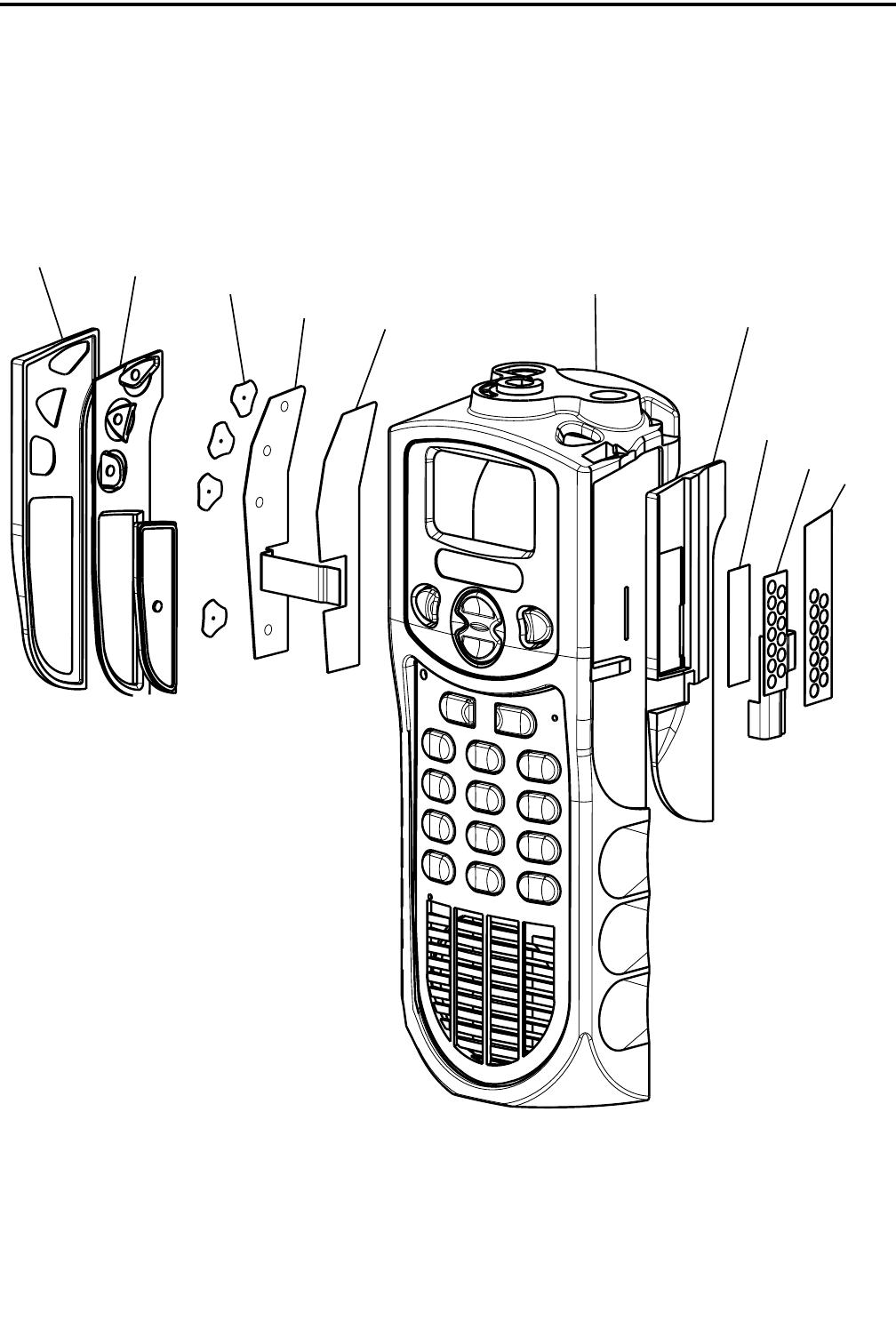
6-9 September 2001
Part No. 001-5100-001
PARTS LIST
EXPLODED VIEWS
MP005 MP004 S020 (5) PC020 EP020
MP001
MP002
EP010
PC010
MP003
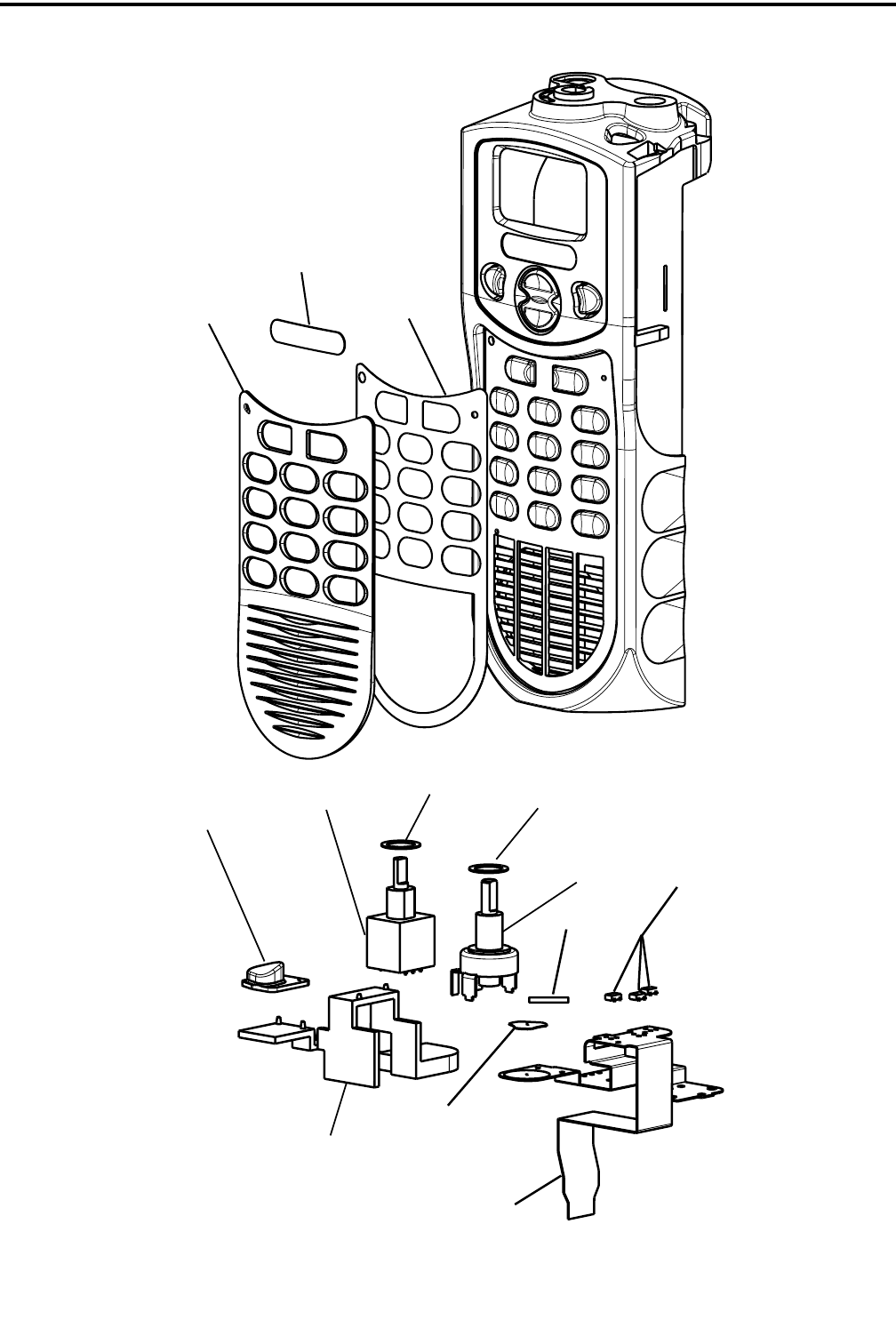
PARTS LIST
6-10 September 2001
Part No. 001-5100-001
MP101
NP101
MP102
MP104 S101 EP102 EP101
MP040
S040
PC040
R101
EP040
?
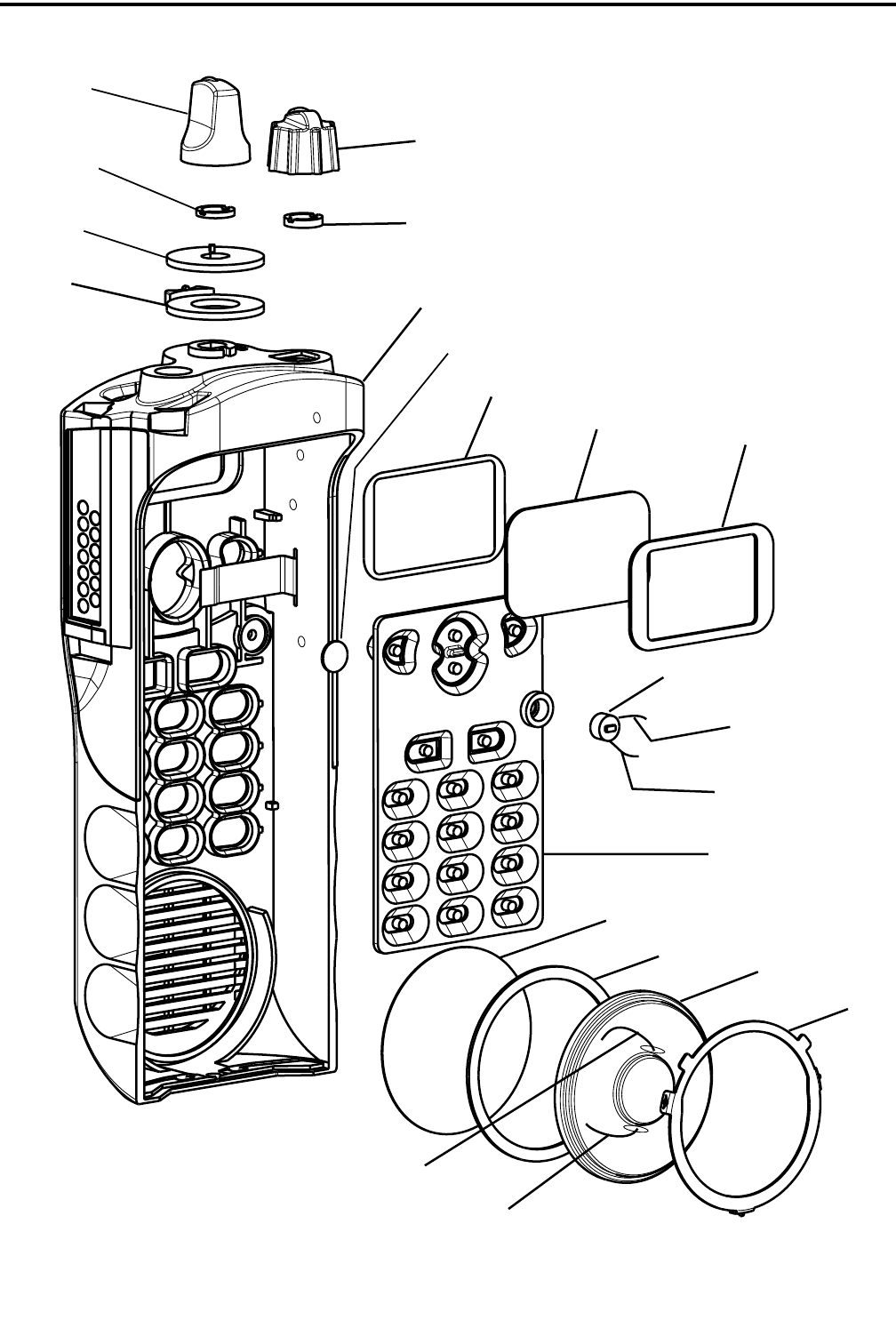
PARTS LIST
6-11 Revised October 2000
Part No. 001-5005-002
MP105
MP106
HW102
MP107
MP108
HW101
A051
MP109
MP114
MP115 MP116
MK101
W101
W102
MP110
MP111
MP112 SP101
MP113
W104
W103
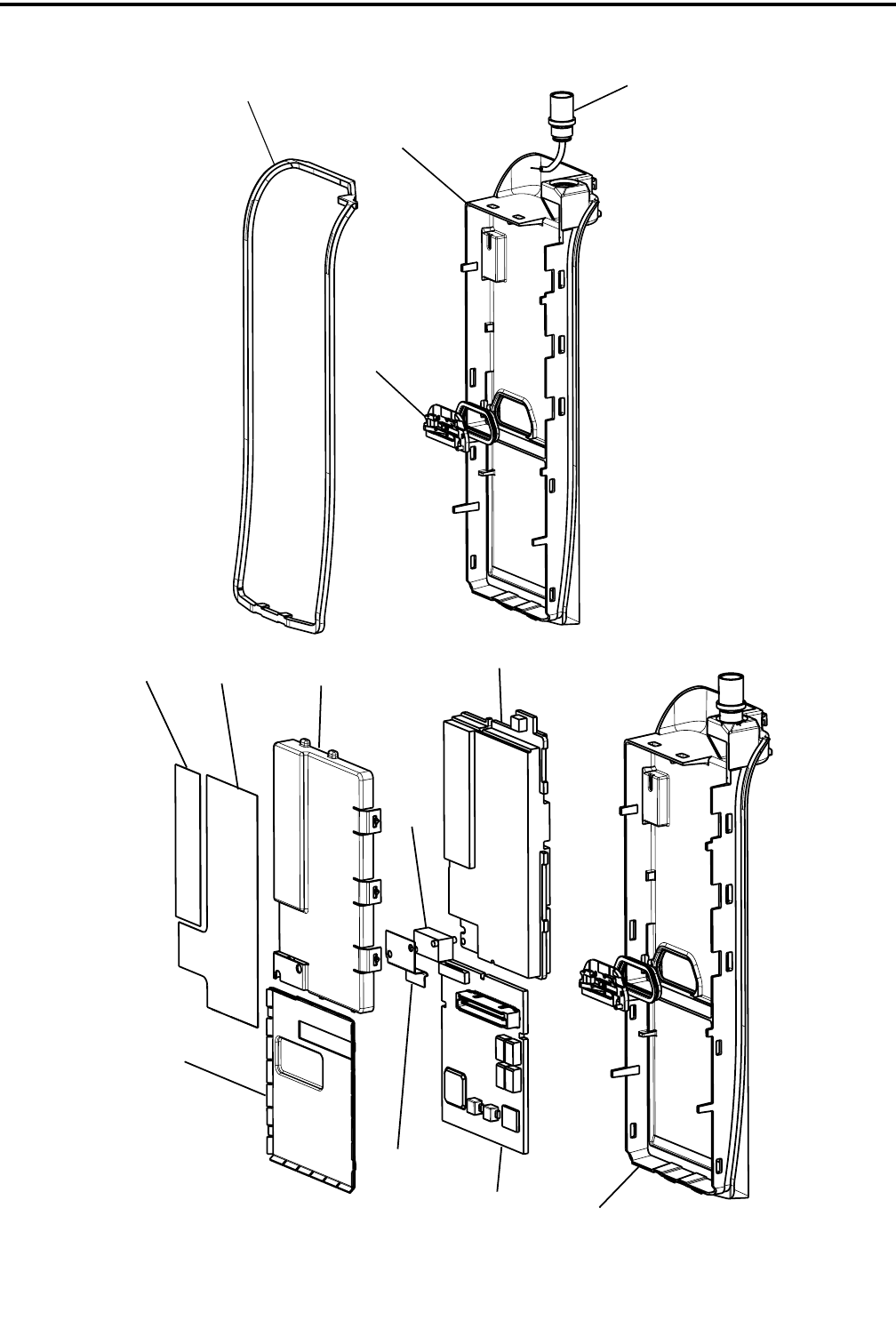
PARTS LIST
6-12 September 2001
Part No. 001-5100-001
CH030
CH030
MP035
A035
MP032 MP033 MP030
A200
PC050
MP035
A100
J050
A030
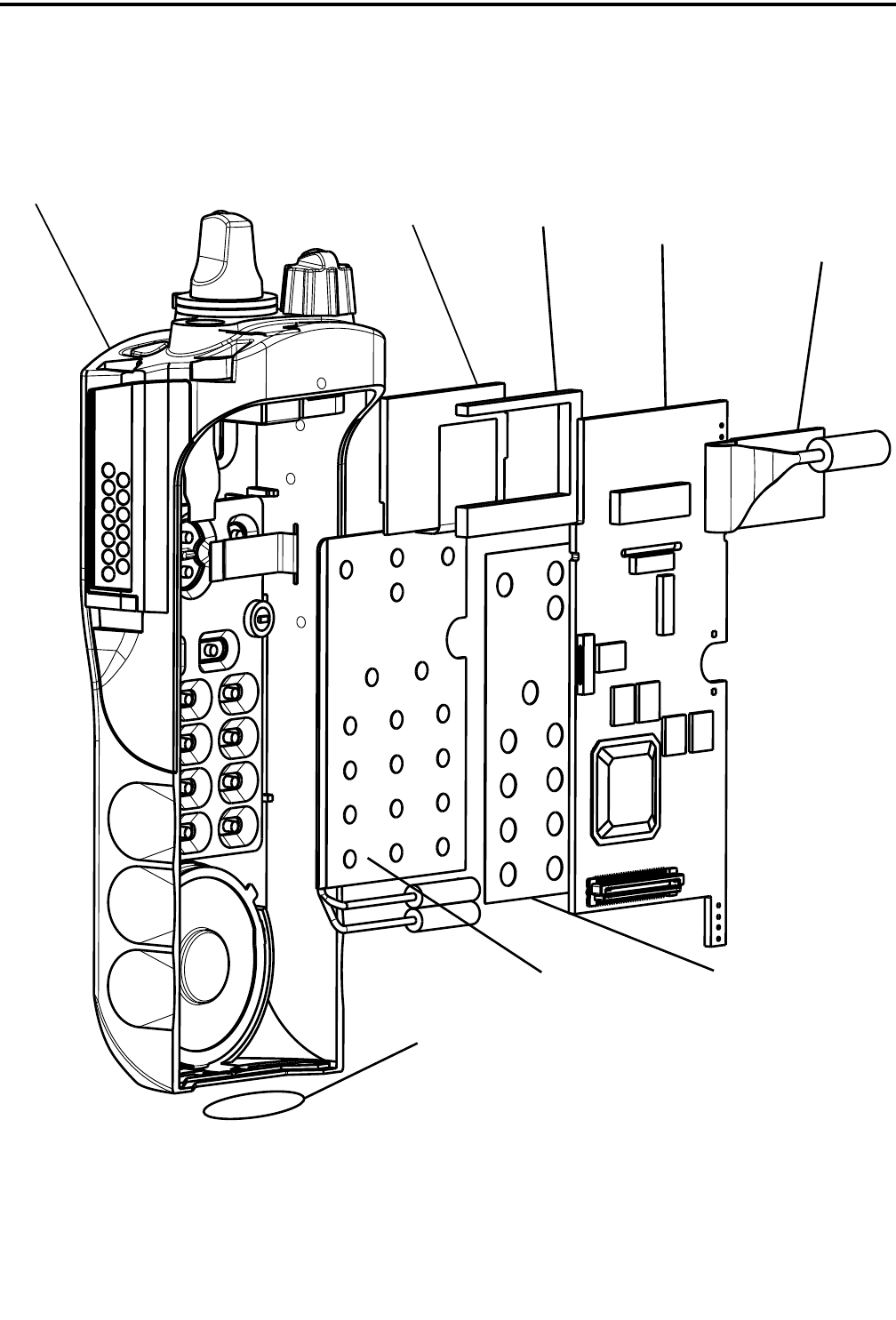
PARTS LIST
6-13 September 2001
Part No. 001-5100-001
A050 DS401 MP401 A400 A401
NP102
A402 MP402
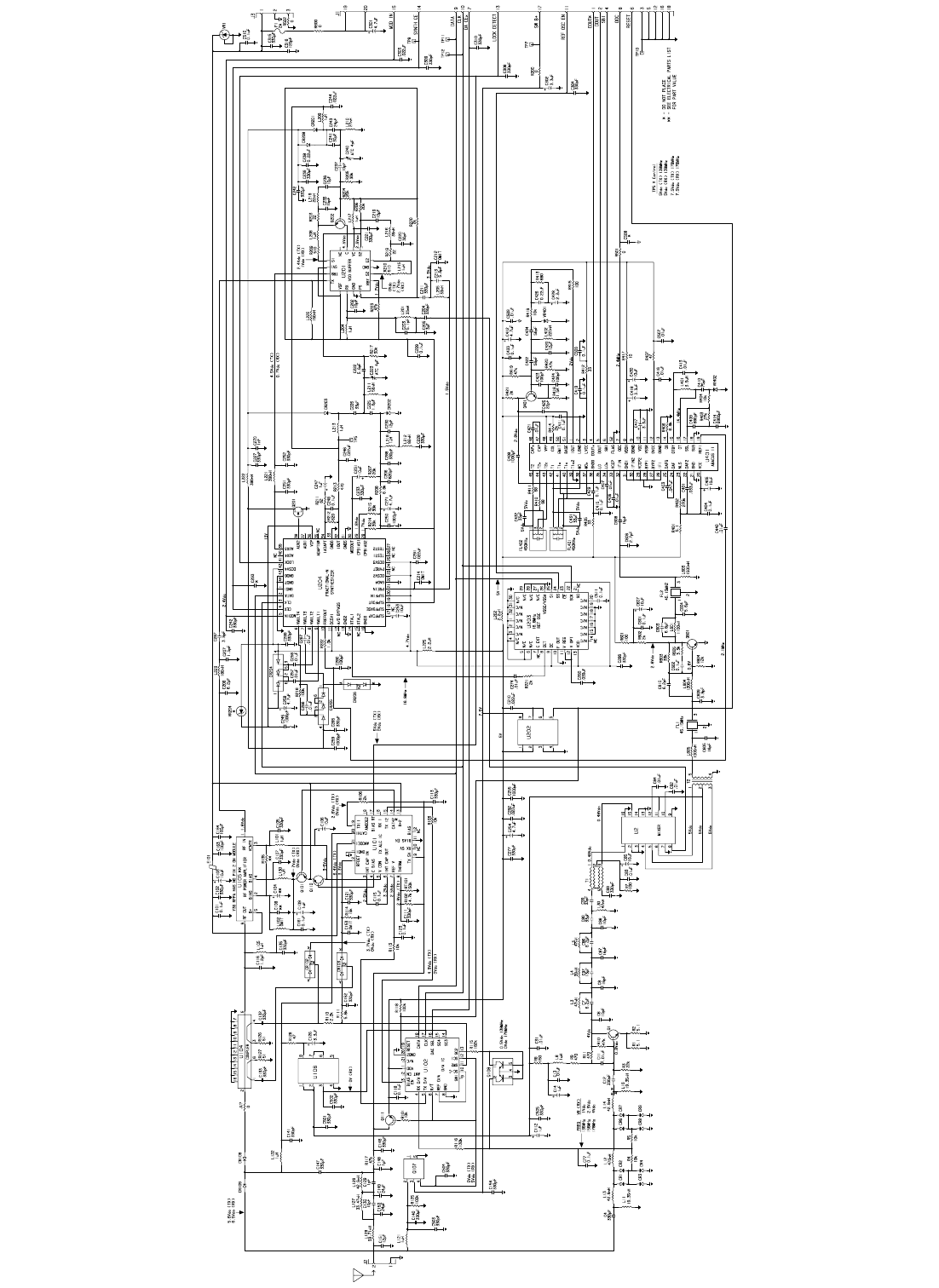
September 2001
Part No. 001-5100-001
8-1
VHF RF BOARD SCHEMATIC
NOTE: Individual replacement parts are not available for the
RF board, so the entire board must be replaced if it is defective.
SECTION 8 SCHEMATIC DIAGRAMS AND COMPONENT LAYOUTS
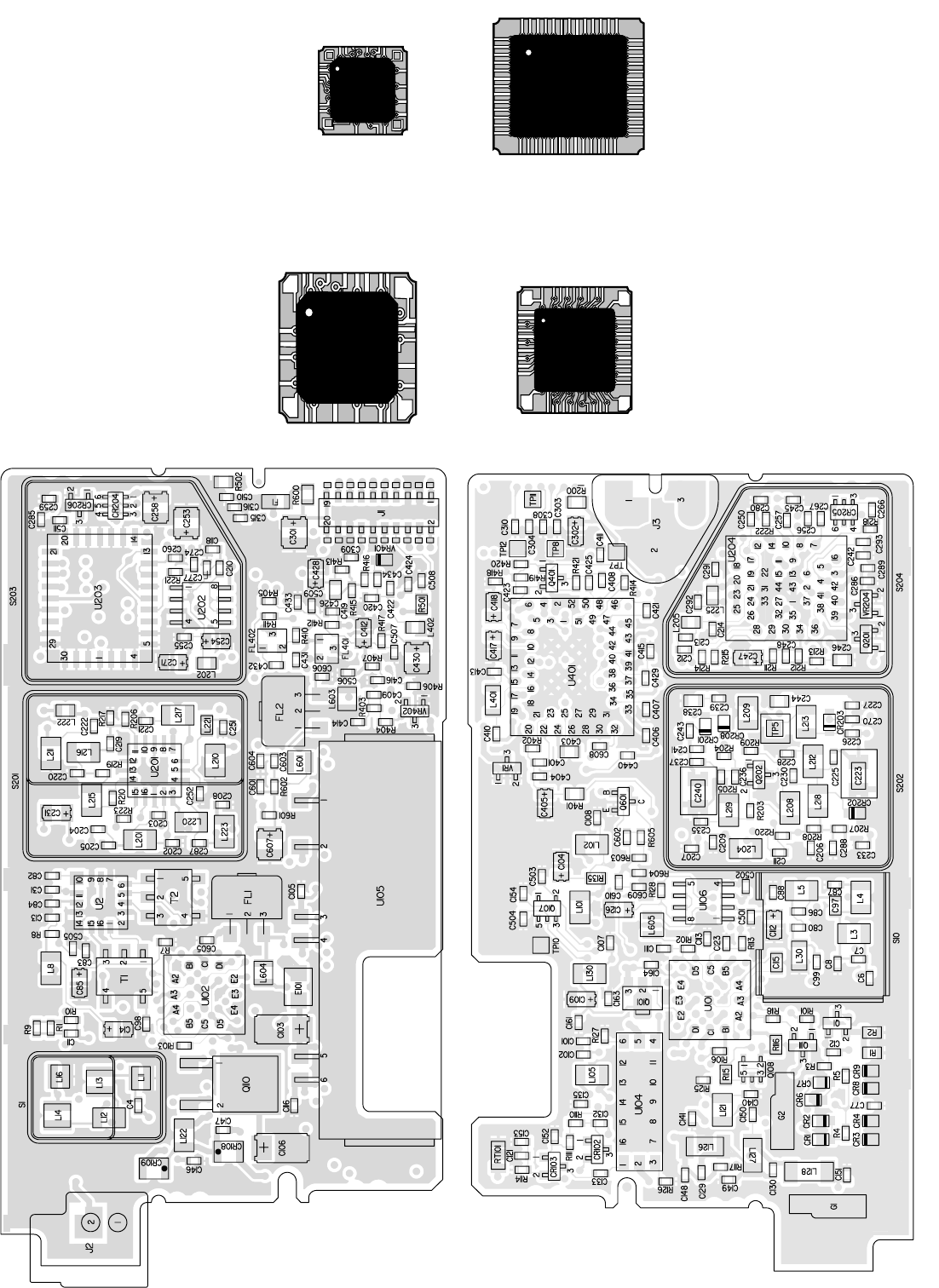
September 2001
Part No. 001-5100-001
8-2
BOTTOM VIEW
TOP VIEW
TX 5V
THERM
INT CAP OUT
REF V
V CON CATH 1
TX 1
ANODE 2
RT BIAS
RX 1
TX 2
CATH 2
INT CAP IN
RF DET
GND
ANODE 1
RX 5V
BIAS EN
BIAS
B+2
ALC
62U72 X
XXYY X
U101
CE*
SC4
SC3
SC2
SC1
SW2
RX_D/A
TX_D/A
R/T
BIAS_EN
ANT_EN
REG5V
RESET
DATA
CLOCK
REF_D/A
GND
SW1
SWC
D/A
62U70 X
XXYY X
U102
FRAC N SYNTH
25U31 0
XXYY 0
VCP
ADAPT_SW
IADAPT
IOUT
MODOUT
CPBIAS 1
CPBIAS 2
TEST 2
VMULT 4
VMULT 3
VMULT 2
VMULT 1
FREFOUT
DC5
A/D BYPASS
XTAL 1
XTAL 2
A/D BYPASS
MODIN
CEX
CLK
DATA
DC5V
LOCK
AUX4
AUX3
AUX2
AUX1
SUPFCAP
SUPFBASE
SUPFOUT
SUPFIN
PREIN
DC5V
TEST 1
DC5V
PVREF
GND
U204
57W20
E28X
9307
REF1
SUB
SSL
OT
OTBY
OB
OGND
OVCC
VSSR
VDD
DGND
VDDH
ODC
CAPX
CAP
VPP
COL
EMIT
BASE
FLAG
IOUT
LGND
LVCC
DOUTX
DOUT
SBI
VCCP
LOX
LO
GND0
MOX
MO
T1C2
T1C
T1X
T1
T2C
T2X
T2
IFIN
GND1
IFIN2
VCCP2
BYP1
BYP2
IFI
DAFG
DAF
NLS
DAF2
GND
VCC
U401
VHF RF BOARD LAYOUT
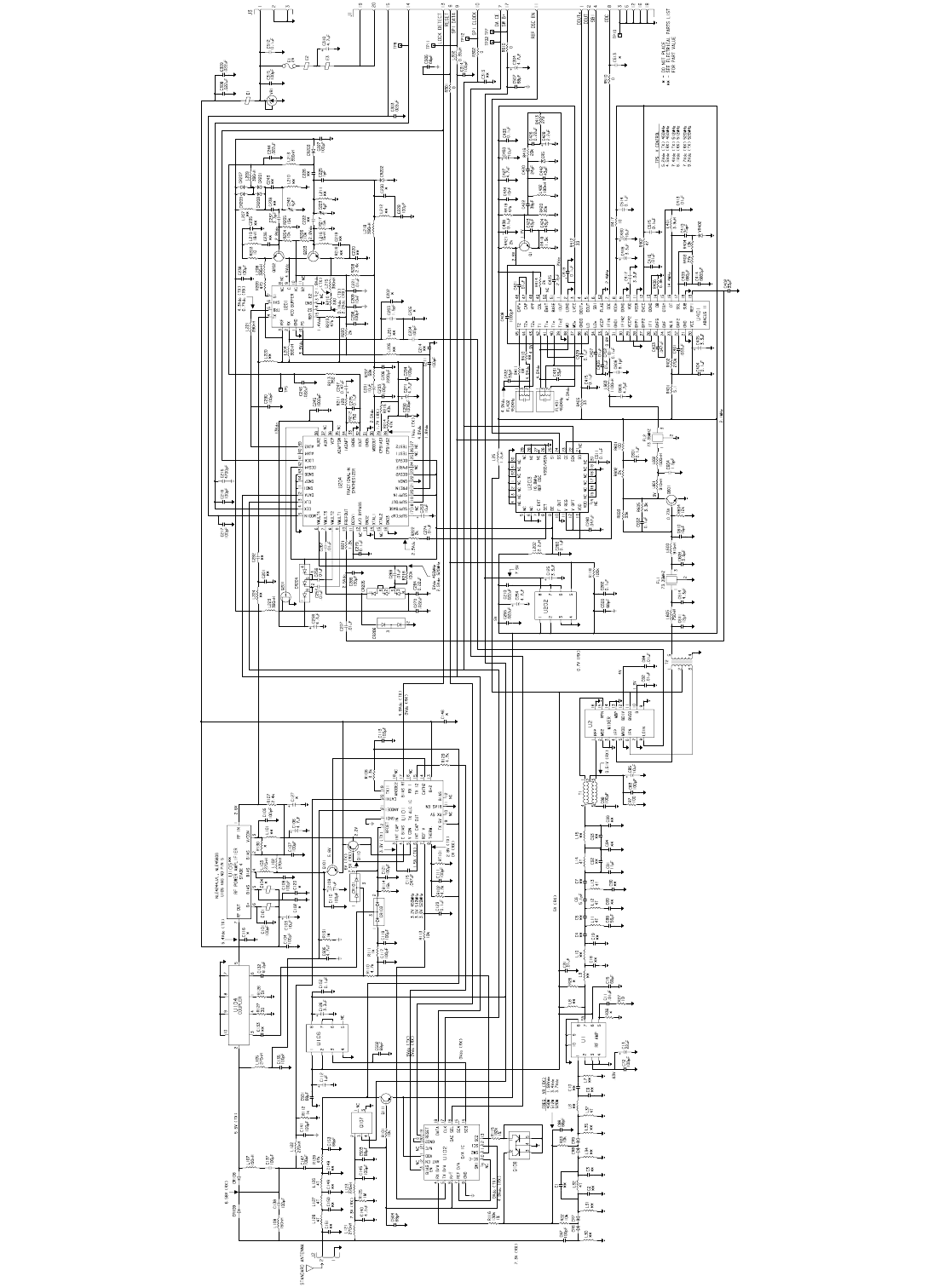
September 2001
Part No. 001-5100-001
8-3
UHF RF BOARD SCHEMATIC
NOTE: Individual replacement parts are not available for the
RF board, so the entire board must be replaced if it is defective.
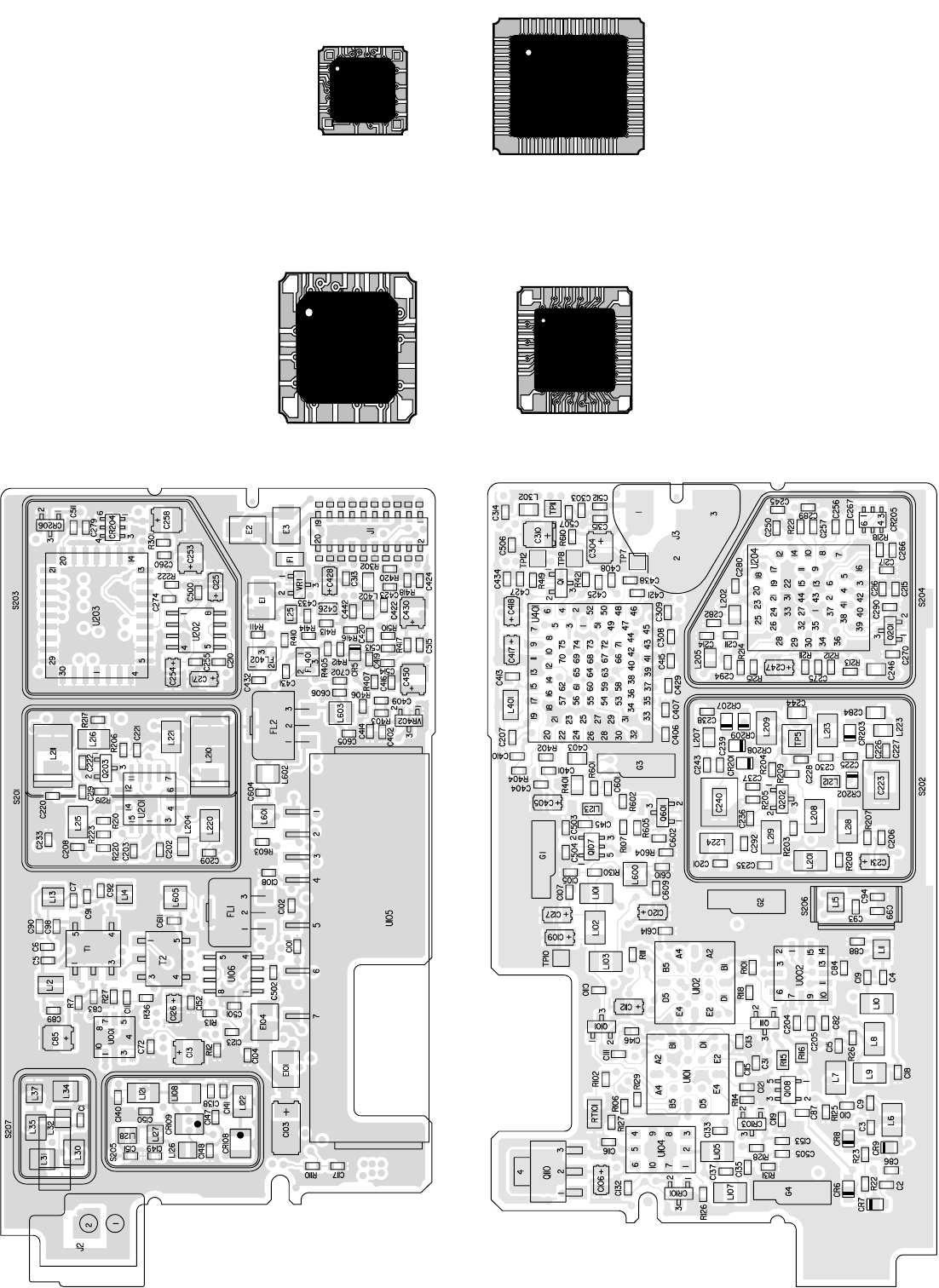
September 2001
Part No. 001-5100-001
8-4
BOTTOM VIEW
TOP VIEW
TX 5V
THERM
INT CAP OUT
REF V
V CON CATH 1
TX 1
ANODE 2
RT BIAS
RX 1
TX 2
CATH 2
INT CAP IN
RF DET
GND
ANODE 1
RX 5V
BIAS EN
BIAS
B+2
ALC
62U72 X
XXYY X
U101
CE*
SC4
SC3
SC2
SC1
SW2
RX_D/A
TX_D/A
R/T
BIAS_EN
ANT_EN
REG5V
RESET
DATA
CLOCK
REF_D/A
GND
SW1
SWC
D/A
62U70 X
XXYY X
U102
FRAC N SYNTH
25U31 0
XXYY 0
VCP
ADAPT_SW
IADAPT
IOUT
MODOUT
CPBIAS 1
CPBIAS 2
TEST 2
VMULT 4
VMULT 3
VMULT 2
VMULT 1
FREFOUT
DC5
A/D BYPASS
XTAL 1
XTAL 2
A/D BYPASS
MODIN
CEX
CLK
DATA
DC5V
LOCK
AUX4
AUX3
AUX2
AUX1
SUPFCAP
SUPFBASE
SUPFOUT
SUPFIN
PREIN
DC5V
TEST 1
DC5V
PVREF
GND
U204
57W20
E28X
9307
REF1
SUB
SSL
OT
OTBY
OB
OGND
OVCC
VSSR
VDD
DGND
VDDH
ODC
CAPX
CAP
VPP
COL
EMIT
BASE
FLAG
IOUT
LGND
LVCC
DOUTX
DOUT
SBI
VCCP
LOX
LO
GND0
MOX
MO
T1C2
T1C
T1X
T1
T2C
T2X
T2
IFIN
GND1
IFIN2
VCCP2
BYP1
BYP2
IFI
DAFG
DAF
NLS
DAF2
GND
VCC
U401
UHF RF BOARD LAYOUT
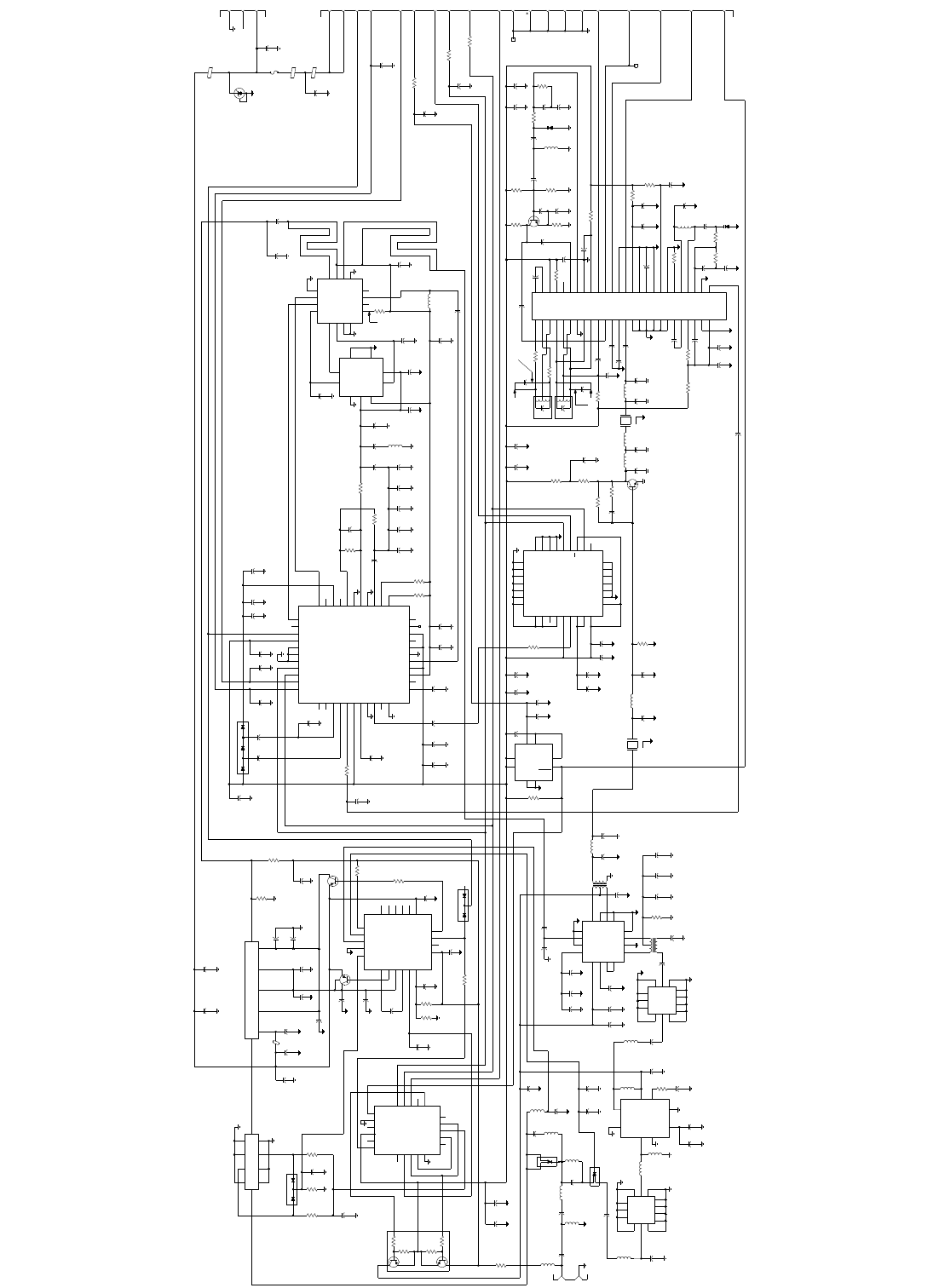
September 2001
Part No. 001-5100-001
8-5
CAPx
CAP
VPP
COL
EMIT
BASE
1 OUT
LGND
LVCC
46
47
48
49
50
51
1
2
3
DOUTx
DOUT
SB1
FLAG
ODC
VDDH
DGND
VDD
VSSR
OVCC
OGND
OB
OTBY
OT
SSL
SUB
REF 1
4
5
6
52
7
8
9
10
11
12
13
14
15
16
17
18
19
T2
T2x
T2c
T1
T1x
T1c
T1c2
45
44
43
42
41
40
39
MO
38
37
36
35
MOx
IF IN
GND1
IF IN 2
VCCP2
BYP1
BYP2
34
33
32
31
30
29
28
27
26
25
24
23
22
21
20 VCC
GND
DAF2
NLS
DAF
DAFS
IF1
VCCP
LOx
LO
GND0
ABACUS 11
U401
C421
.01uF
R414
2k
+C438
0.1uF
C419
0.1uF R412
33
Q1
C423
56pF
R418
1.5k
C424
56pF
R420
47k
C422
39pF
R419
47k
L402
180nH
C420
20pF
VR401
R416
20k
C426
0.22uF
R413
270
+C428
2.2uF
AUX2
AUX1
VCP
38
37
36
35
34
33
32
31
1ADAPT
ADAPTSW
GND6
1OUT
GND5
MODOUT
CPB1AS1
CPB1AS2
30
29
28
SUPFCAP
SUPFBASE
SUPFOUT
SUPFIN
PREIN
GND4
DC5V2
PVREF
DC5V3
TEST1
TEST2
GND3
XTAL2
XTAL1
GND2
A/D BYPASS
DC5V1
16
15
14
13
12
11
10
9
8
7
6VMULT4
VMULT3
VMULT2
VMULT1
FREFOUT
MODIN
CEX
CLK
DATA
GND1
GND7
GND6
DC5V4
LOCK
AUX4
AUX3
17 18 19 20 21 22 23 24 25 26 27
54321444342414039
TP302
R315
39k R309
51k
+C319
10uF
C320
33pF
+
C310
10uF
C309
.022uF
C372
0.1uF
C312
0.1uF
3
12
45
11 10 9
8
7
IN OUT
U201 6
13
1
2
C110
3.3pF
L104
RF INPUT
L201
17nH
L202
24nH
RF IN
1
8
RF
BYPASS GND
GND
B+
RF
BYPASS
GND RF OUT
U202
RF AMPLIFIER
4
5
23
L203
180nH
R202
10
+C201
10uF
C202
39pF
C203
100pF
76
C204
.022uF
L204
24nH
C222
6.2pF
3
12
45
11 10 9
8
7
IN OUT
U203 6
13
1
2
C223
5.1pF
MBP
GND
BDlv
13
14
12
11
RF
GND
RF MG2
GND
IFn
IFp
MVdd
3
4
5
6
211615
GND
LO IN
BBP
GND
10987
2
1
34
5
C218
.022uF
54
T202
123
C227
330pF
R204
100
+C210
10uF C211
.022uF
C212
39pF
C611
10pF
L605
750nH
C614
5.6pF
T201
Q503 REG 5V
1
2
5
4
3
RX D/A
TX D/A
R/T
REF D/A
GND
8
7
6
5
4
5V
ANT EN
BIAS EN
N/C
GND
RESET
32121 20 19
DAT
CLK
C.E.
SC4
SC3
U503
D/A IC
SW1
SW-C
SW2
SC1
SC2
9 10111213
18
17
16
15
14
INTCAP
C BIAS
V CON
INTCAP OUT
REF V
THERM
RFDET
GND1
ANODE1
CATH1
TX 11
ANODE2
BIAS RT
RX 1
TX 12
CATH2
B+2
U504
TX ALC IC
TX 5V
RX 5V
BIAS EN
BIAS
9 101112
8
7
6
5
4
318
17
16
15
14
13
C524
33pF
19
20
211
2
C517
33pF
C519
33pF
R514
10k
RT501
50k
R511
2k
+
C513
4.7uF
C523
33pF
C518
.022uF
C504
33pF
CR502 N/C
R501
10k
Q502
Q501
CR501
16
R508
6.8k
C503
33pF
R505
15k
R503
10k
C525
33pF
10 9
2
8
354
7
U501
COUPLER 7
65432
1
U502
RF PA
RF OUT
B+
RF IN
BIAS
BIAS
STABE 4 V/CON
STABE 3 V/CON
C510
.022uF
C509
33pF
C522
0.1uF
C505
33uF
+C18
1.0uF
E1
C512
.022uF
1
2
J2
L106
180nH
C114
33pF C101
20pF
L108
180nH
L105
C106
2.4pF L103
180nH
L102
15nH
C108
33pF L101
180nH
C105
33pF
C103
33pF
C213
.022uF
C209
.022uF
C226
39pF
C221
.022uF
C208
39pF +C216
10uF
C104
20pF C527
.022uF
CR102
CR104
C514
.022uF
C206
33pF
C207
3pF
R101
51k
C521
.022uF
+C520
10uF
C507
33pF
C506
33pF
R507
3.3k
C511
33pF
R508
1k
34 52
61
CR301
C301
0.1uF C302
0.1uF
C350
0.1uF
C303
100pF C313
0.1uF
C305
100pF
C370
4.3pF
R310
1k
C308
0.22uF
C328
100pF
C340
0.1uF
+C307
4.7uF C314
.022uF
N/C
N/C
C EXT
DET
DE
F OUT
V REG
V OPT
VDD
5
6
7
8
9
10
11
12
13
VDD
N/C
N/C
N/C
N/C
N/C
N/C
25
24
23
22
21
28
27
26
29
N/C
N/C
N/C
N/C
N/C
N/C
N/C
N/C
N/C
N/C
VSSD/VSSA
S1
SS
CE
SCK
SO
4321323130
14 191715 16 18 20
U304
18.8MHz
REF OSC
C353
.022uF
C354
33pF
R306
4.7k
C352
33pF
C351
.047uF
SENSE +5
SHDN
GND
B+ IN
FDBK
ERROR
5VTAP
U305
5V REG
3
4
8
7
21
56
C347
.022uF
R304
51k C345
0.1uF
C344
.022uF
+C348
10uF C349
.022uF
C322
0.1uF C317
0.1uF C318
0.1uF C329
0.1uF C330
0.1uF
RF IN
SW2
GND
GND
TRB
FL IP
GNDSW1
TX OUT
Vcc
RX OUT
GND
U303
VCO BUFFER
RXBB
N/C
PRE
TXBB
3
2
1
4
8765
9
10
11
12
13 14 15 16
R311
15k
C323
.022uF
GND
V CON
B+
SW1
SW2
OUT
2
1
9
V CON
GND
GND
U307
VCO
MODULE
5
6
34
87
C373
.022uF
C304
33pF C306
33pF
C373
.022uF
C315
1000pF
R307
1k
C324
.047uF
R314
51
R305
2k
C316
.022uF
C325
680pF
L302
10uH
C311
33pF
L301
15nH
C341
.022uF
C377
3pF
C339
12pF
C342
4.7pF
C408
.001uF
C425
2.2pF
R421
2.4k
C407
.01uF
C613
0.1uF
C406
.01uF
C403
.047uF
C404
0.1uF
+C405
3.3uF
C401
.033uF
R402
270k
C409
680pF
R403
27
R404
10k
L401
3.9uH
C410
75pF
R406
6.8k
C413
.01uF
VR402
C414
.0088uF
+
C417
3.3uF
+
C418
3.3uF
+
C430
10uF
R417
10
R407
47
C416
.01uF
C441
10000pF
C429
0.1uF
C415
0.1uF
C431
33pF
R411
68
1
3
2
1
3
2
C432
33pF
R410
68
L603
1100nH
FL402
450k
FL401
450k
R405
33
C605
3.6pF C606
7.5pF
R401
5.1
C433
0.1uF
+C450
10uF
L602
1500nH
L601
910nH
C604
4.3pF
C612
3pF
Q601
R605
3.3k
C602
0.1uF
R603
33k
FL2
73.35MHz
R602
2k
R601
100
C601
0.1uF
L600
910nH
FL1
73.35MHz
C609
3.3pF C610
7.5pF R604
12k
13
2
2
TP401
DOUT*
DOUT
SB1
DOC
RESET
1
2
TP400
4
8
6
18
16
12
5
3
7
DA CE
R327
0
CLOCK 10
C5
33pF
R326
0
R328
0
+C1
4.7uF
C2
.022uF
DATA 9
11
REF OSC EN
17
SW B+
SYN CE 14
15
MOD IN
13
LOCK DET
20
19
RAW B+
RAW B+
J1
(P1)
GND
J3
IS B+
RAW B+ IN
2
3
1
C14
33pF
+
C20
4.7uF
F001
2A
E3
E4
E2
VR1
C17
.022uF C15
.022uF
R509
1k
5V (RX)
0V (TX)
5V dc
0V (RX)
5V (TX)
6.0V (TX)
0V (RX)
5V (TX)
6.6V (TX)
7.6V (RX)
.37V (TX)
7.5V (RX)
0V (RX)
5V (TX)
7.4V (RX)
4.2V (TX) 5V dc 5V dc
5V dc
.43.43
2.5V dc2.5V dc
13V
3 - 11V dc
2.8V dc
4.6V 1.8V dc
5V
5V (TX)
0V (RX)
5V dc
.55 - .77V
7.5V dc
16.8MHz
4.7V dc
0V 4.7V
4.7V
4.7V
2.4V (RX)
4.8V (TX)
2.8V dc
2V dc
2.4 MHz
14.4MHz
.8V dc
3V dc
4.9V dc 4.9V dc
4.9V dc
2.1 MHz
STRIPLINE
STRIPLINE
C434
10nF C427
4.7nF
800 MHZ RF BOARD SCHEMATIC
NOTE: Individual replacement parts are not available for the
RF board, so the entire board must be replaced if it is defective.
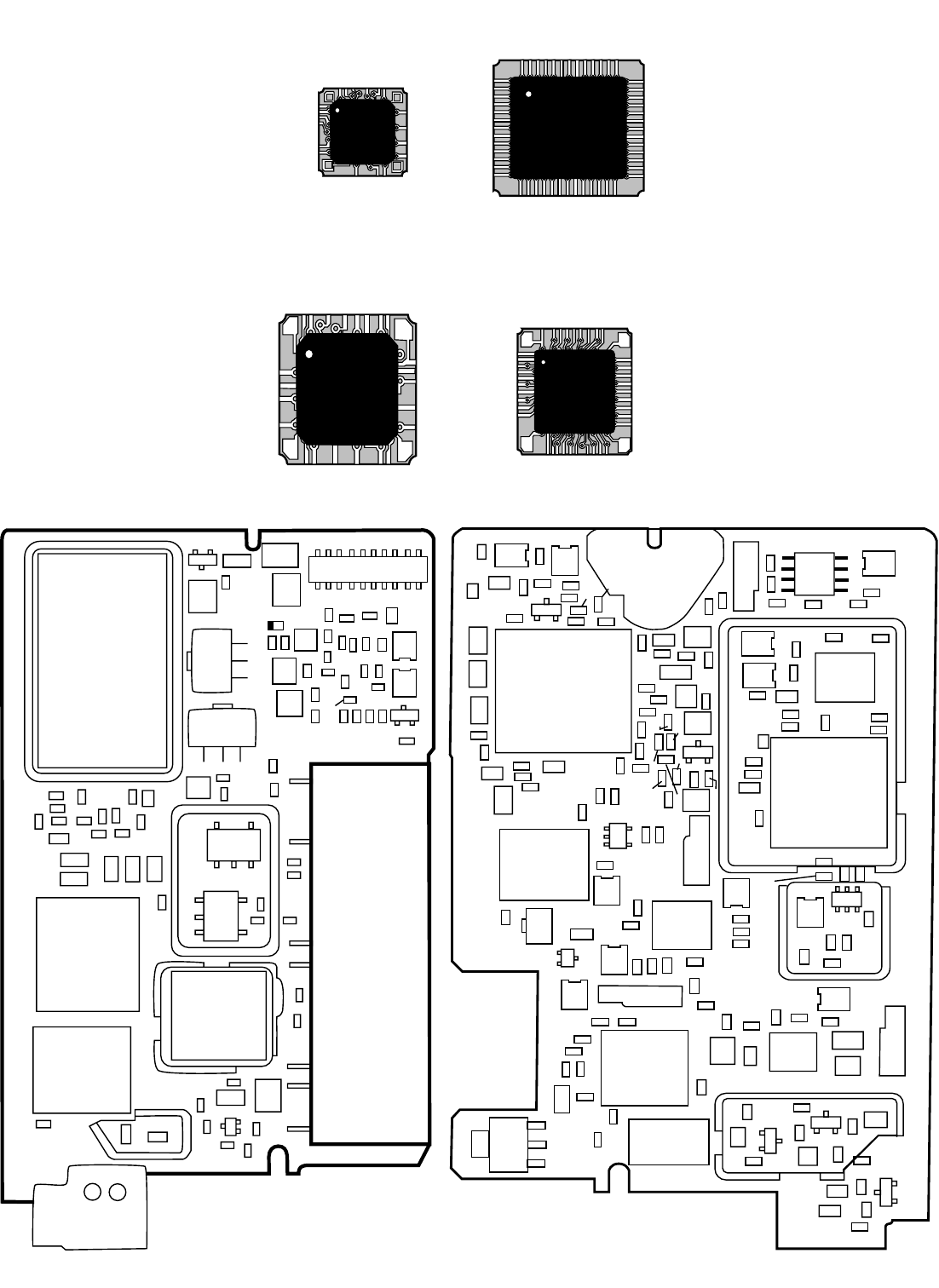
September 2001
Part No. 001-5100-001
8-6
1
VR402
R503
C525
R505 C503
R506
7
CR501
CR501
C16
K
AA
E1
567
4
C523 C507
C510
U203
8
9
321
L102
L103
SH6
3
2U201
45
6
7
8
9
C110
J2 1
2
30
29
4
513
14
20
21
U304
C350
C322
L302
C370
R310
C372
R305
R307
C305
C304
C316
C323
C328
C303
SH7
U307
2
34
8
7
95
6
E2
C4
F001
VR1
KA
FL2
23
4
FL1
3
24
FL401
E4 E3
R416 VR401
FL402
C431
R411
3
3
1212
C424
L402
C420
C422
C423
C420
R418C440
C416 R420
C432
20 19
J1
(P1)
21
R327
C412
R417
R412
C434
R407
C427
C419
C430
C450
+
+
K
A
C413
C414
C409
R403
R406
R404
C342
R507
C614
C611
L605
T201
3
4
3
2
1
C227
C223
T202
54
32
1
C522
C508
C324
SH4
R314
C317
C318
C329
C353
SH5
654
321
U502
1
1
+
C512
Q501
BCE
RT501 C519
C505
C506
C504
C517
R511
R514
C513
+
AA
K
CR502
C216
+
A2 E2 C207
R509
Q502
123
R501
+
C520
U503
E2 E4
D5
D1
B1
A2 A4
B5
35
C511
C339
C403
C404
C405
+
R401 C441
C410
L401 +
C417
+
C418
C401
R402
TP400
19 17 15 13 11 9 7
6
4
2
52
20
22
24
26
28
30
32
2116 15 14 12 10 8
U401
5
3
1
23 57 62 70 75
25 56 61 65 69 74
55 60 64 68 73
54 59 63 67 72 51 50
49 48
27
29
31 53 58 66 71 47
34 36 38 40 42 44
33 35 37 39 41 43 45
46
C5
R419
R326
C1
+
C2
C20+
B
EC
Q1
TP401
R328
C433
R421
C408
C438 R414
C425
J3
2
3
C421
C426
L603
C605
C606
R413
C428
+
C413
L602
C604
L601
R601
R405
C429
C601
C406
C407
C613
C612
Q601
C
E
B
R605
C602
C610
R602
R603
C609
R604
L600
R508
G2
C218
C514
21
Q503
C521
C310
+
C319
+
C320
C206
C221
C226
10 7 6
14 1 2
U205
C209
C205
C213
C222
L204
L203
C204
C527
U504
A4 E4
G3
C518
+
C210
R204
U501
C108 L101 C105
AA
K
CR104
C106
L105 C104
A
AK
C103
L104
C102
CR102
L108
C107
LC114 R101
C101
K
A
A
VR2
SH3
G4
L201
L202
+
C201
C202
C201
C203
R202
SH2
C309
R306
C352
C351
C340
C307
+
3
1
4
6
CR301
C211
C212
C314
C315 R309
R315
TP302
C350
C301 C354
C302
U302
36 34 30 29 28
39 38 35 32 26 25
40 41 37 27 33 24 23
243 44 31
42
34613 15 22 19 20
16 5911 17 18
7810 14 12
21
C377
C311
C323 C313
C312
L301
R311 C341
C373
C321
15 14 12 11
7
6
4
3
1U303
C17
C15
G1
C306
C347
C345
U305
14
5
8
C344
R304
C349 C348
+
L106
210
57
C208
1
BOTTOM VIEW
TOP VIEW
TX 5V
THERM
INT CAP OUT
REF V
V CON CATH 1
TX 1
ANODE 2
RT BIAS
RX 1
TX 2
CATH 2
INT CAP IN
RF DET
GND
ANODE 1
RX 5V
BIAS EN
BIAS
B+2
ALC
62U72 X
XXYY X
U101
CE*
SC4
SC3
SC2
SC1
SW2
RX_D/A
TX_D/A
R/T
BIAS_EN
ANT_EN
REG5V
RESET
DATA
CLOCK
REF_D/A
GND
SW1
SWC
D/A
62U70 X
XXYY X
U102
FRAC N SYNTH
25U31 0
XXYY 0
VCP
ADAPT_SW
IADAPT
IOUT
MODOUT
CPBIAS 1
CPBIAS 2
TEST 2
VMULT 4
VMULT 3
VMULT 2
VMULT 1
FREFOUT
DC5
A/D BYPASS
XTAL 1
XTAL 2
A/D BYPASS
MODIN
CEX
CLK
DATA
DC5V
LOCK
AUX4
AUX3
AUX2
AUX1
SUPFCAP
SUPFBASE
SUPFOUT
SUPFIN
PREIN
DC5V
TEST 1
DC5V
PVREF
GND
U204
57W20
E28X
9307
REF1
SUB
SSL
OT
OTBY
OB
OGND
OVCC
VSSR
VDD
DGND
VDDH
ODC
CAPX
CAP
VPP
COL
EMIT
BASE
FLAG
IOUT
LGND
LVCC
DOUTX
DOUT
SBI
VCCP
LOX
LO
GND0
MOX
MO
T1C2
T1C
T1X
T1
T2C
T2X
T2
IFIN
GND1
IFIN2
VCCP2
BYP1
BYP2
IFI
DAFG
DAF
NLS
DAF2
GND
VCC
U401
800 MHZ RF BOARD LAYOUT
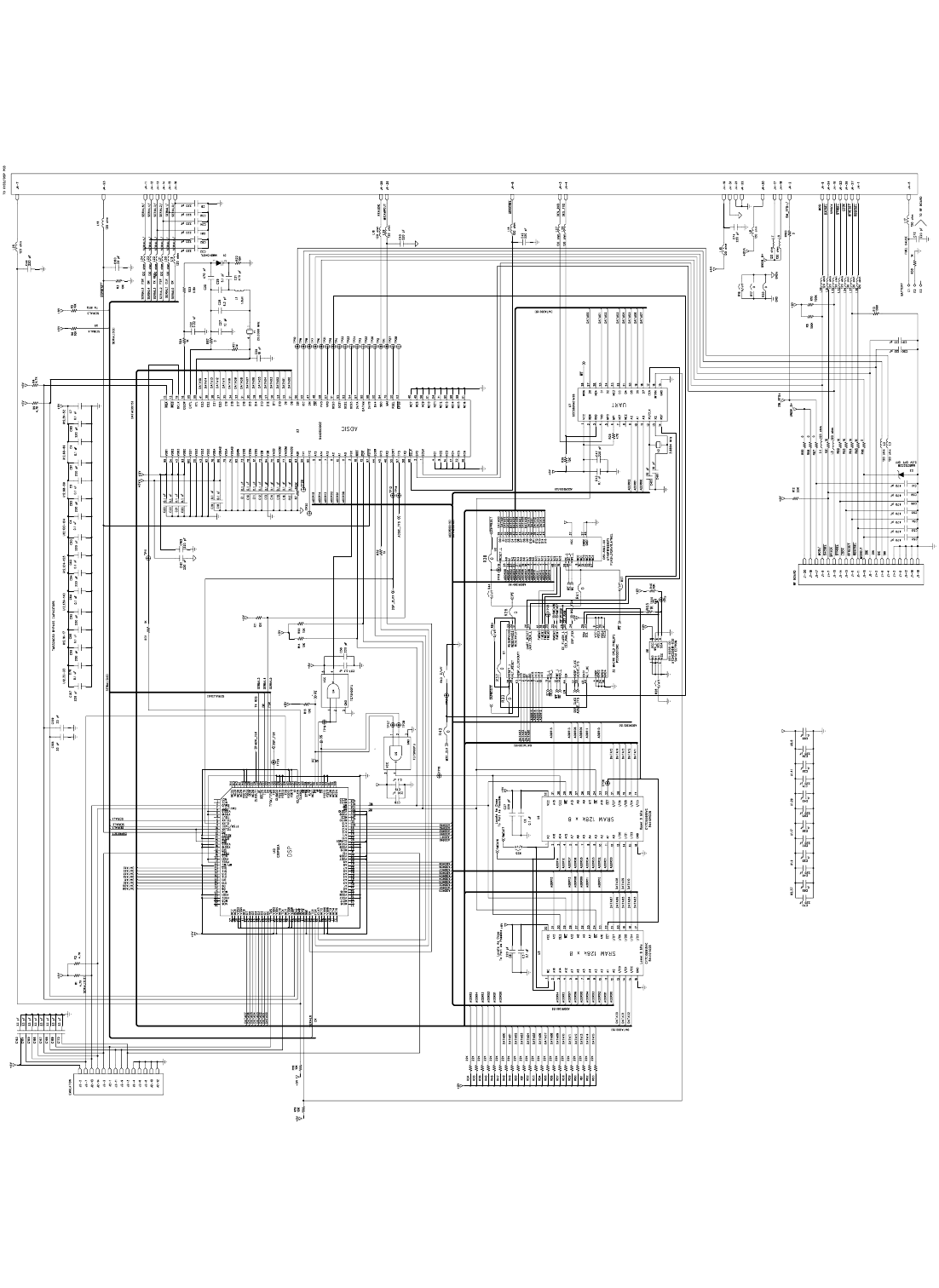
September 2001
Part No. 001-5100-001
8-7 LOGIC BOARD (REV. 3) SCHEMATIC
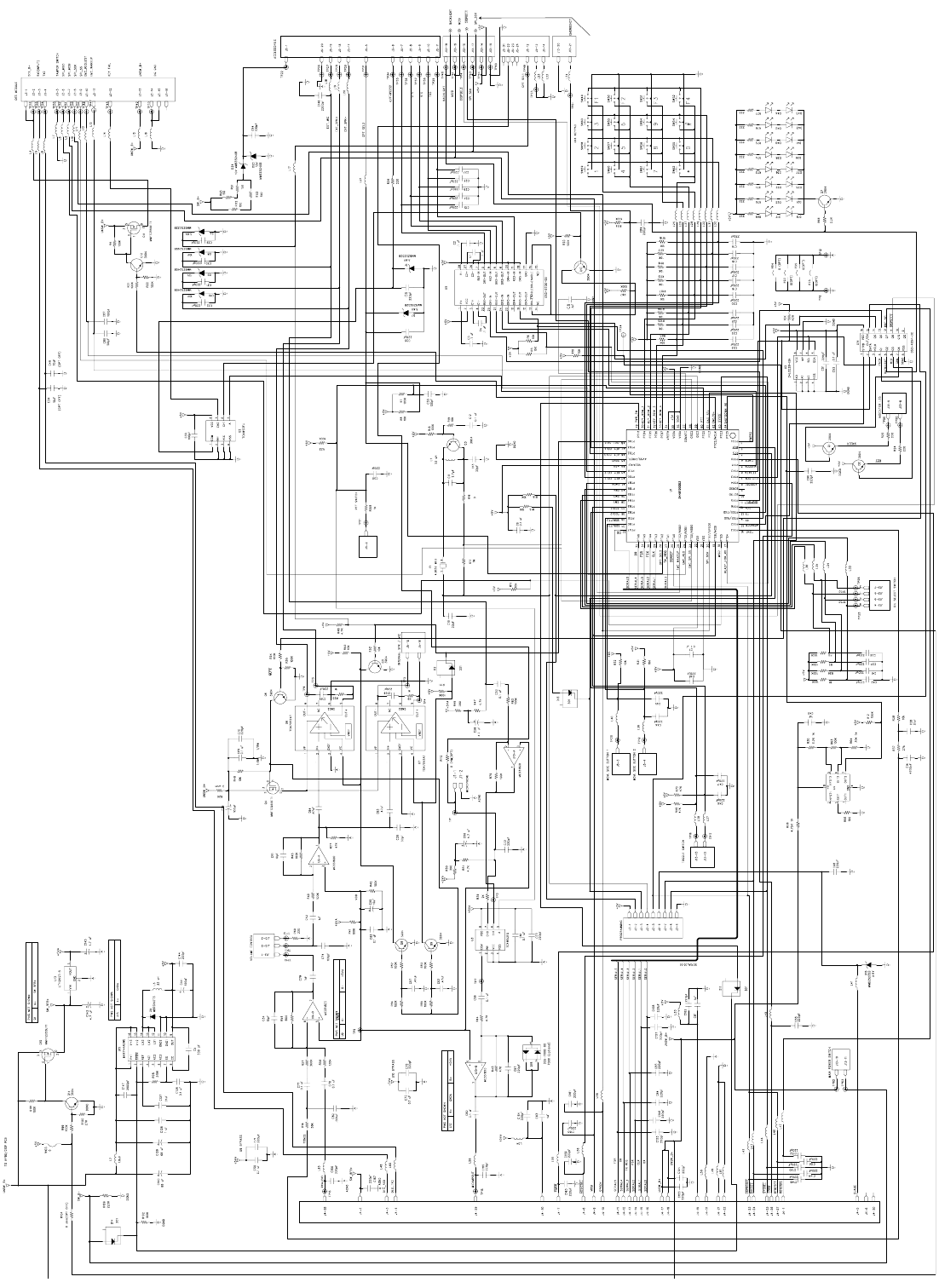
September 2001
Part No. 001-5100-001
8-8
To Front
Display
Schematic on
Page 8-16
REVISED KEYPAD BOARD SCHEMATIC